Yang Rung Chen,
Selin Kir,
Obtuse Archive
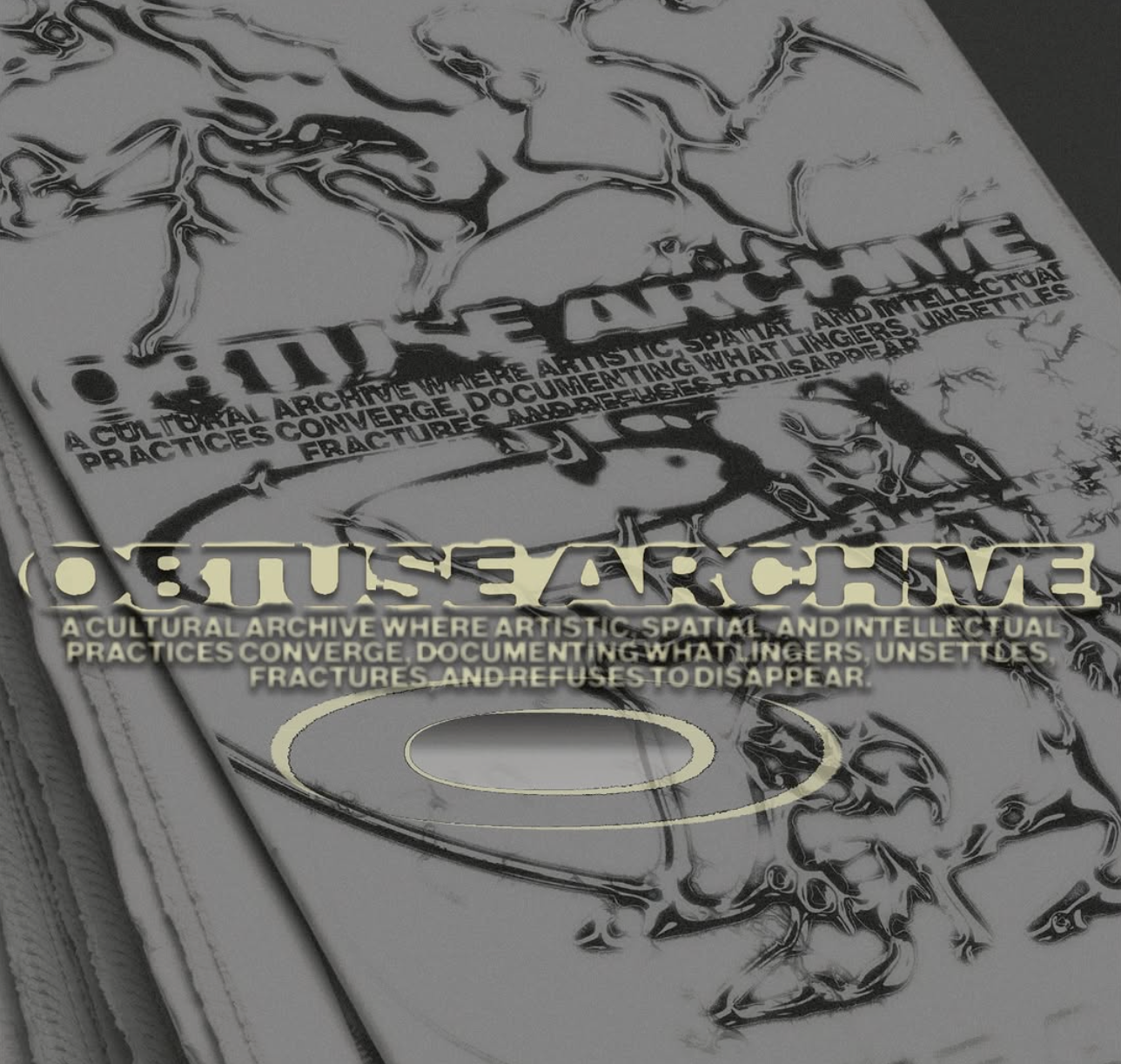
We have Selin Kir and Yang Rung Chen here with us today to talk about Yang Rung’s performance practice and your collaborative platform Obtuse Archive -
“No fixed schedules. No standardized cycles of production. Outside the pull of trends. A slow, unsettled document that privileges depth over novelty, residue over spectacle, process over product. Against the churn of mass culture, it aligns with what lingers: thought that resists erasure, practices that fracture and persist, conversations that unfold on their own time.”
Yang Rung Chen is a London-based performance artist and curator specialising in contemporary dance. Her practice examines the relationship between the human body, nature, and technology, using the female body as a medium to explore the boundaries between self, environment, and the natural world. While exploring, she use her body to create a new language.
Selin Kir (b. 1999, Istanbul) is a London-based creative strategist, curator, researcher, and media communications proffesional with a background in Sociology and Culture, Criticism & Curation from Central Saint Martins. With the aim of discovering, refining, and debating the ideas that shape public discourse through artistic and cultural experiences, she applies her knowledge to material, popular, and archival culture.
Emiri Fujimoto makes sculptures and installations that revolve around performative action and site responsiveness. She is thinking about which souvenir is chosen before the exit, locating her work in moments of a celebratory cake sits in an empty room, whenever A.G. Cook’s Beautiful (2023 edit) is playing: “Baby, when you look at me, you know that I'll be here forever. Baby, when I look at you, I know that we'll be here together. Baby, when you look at me, you know that I'll be here forever. Baby, when I look at you, I know that we'll be here together. Together, together, together, together, together…”, and a fading blush. Emiri received her BFA from the School of Visual Arts (2022) and an MFA in Sculpture from Cranbrook Academy of Art (2025). She currently lives and works in Brooklyn, New York.
Selin Kir (b. 1999, Istanbul) is a London-based creative strategist, curator, researcher, and media communications proffesional with a background in Sociology and Culture, Criticism & Curation from Central Saint Martins. With the aim of discovering, refining, and debating the ideas that shape public discourse through artistic and cultural experiences, she applies her knowledge to material, popular, and archival culture.
Emiri Fujimoto makes sculptures and installations that revolve around performative action and site responsiveness. She is thinking about which souvenir is chosen before the exit, locating her work in moments of a celebratory cake sits in an empty room, whenever A.G. Cook’s Beautiful (2023 edit) is playing: “Baby, when you look at me, you know that I'll be here forever. Baby, when I look at you, I know that we'll be here together. Baby, when you look at me, you know that I'll be here forever. Baby, when I look at you, I know that we'll be here together. Together, together, together, together, together…”, and a fading blush. Emiri received her BFA from the School of Visual Arts (2022) and an MFA in Sculpture from Cranbrook Academy of Art (2025). She currently lives and works in Brooklyn, New York.

Resonance of Becoming, Yang Rung Chen, curated by Carolyn Chang for the Performance (Bio)Cultureseries
EF: We met each other during your trip to New York, and I am intrigued by your practice, Chen, in our brief conversation about your practice during a rave. Here we have Selin with us, who very much has a soul connection with your practice, to discuss your performative work.
YRC: Thank you for having us. I first encountered performance art as a practice that transcends language barriers during my Master’s studies at Central Saint Martins in the UK. It was also the first time I incorporated performance into a curatorial project, and I was struck by the body’s ability to connect so directly with emotion. For me, performance functions as a form of meditation between nature and human existence.
EF: Could you elaborate more on “between nature and human existence”? Let’s take your performance, Resonance of Becoming, curated by Carolyn Chang for the Performance (Bio)Cultureseries, as an example. And could you break down some thoughts or comments around the movement and gestures within the performance?
SK: Staged in a worn, almost decomposing interior, peeling walls, mottled textures, and a floor dusted with the residue of time, the performance situates the human body inside a living ecology of decay and renewal. Chen’s movements unfold with the same temporal logic as fermentation: gradual, intimate, almost imperceptible at first glance. Her gestures accumulate like microbial activity, small, iterative shifts that gradually generate an entirely new state of being.
YRC: I have always believed that humans are inseparable from nature, a conviction that stands in sharp contrast to the values of capitalism in our present time.
SK: What distinguishes Chen’s practice is the way she collapses the boundaries between biological process and embodied action. The performance does not “represent” fermentation; it enacts it through somatic language. Her curled, folded postures evoke ingredients submerged in brine, limbs softening and reconfiguring under invisible pressures. At moments, her body appears to pulse with inaudible rhythms, as if responding to an internal chemical reaction. This choreography suggests that transformation is not dramatic rupture but quiet persistence, an insistence on becoming otherwise.
![]() Resonance of Becoming, Yang Rung Chen, curated by Carolyn Chang for the Performance (Bio)Cultureseries
Resonance of Becoming, Yang Rung Chen, curated by Carolyn Chang for the Performance (Bio)Cultureseries
EF: What role do you play, or what mindset do you prepare yourself into when you perform? How do you prepare yourself to get into the moment?
YRC: I am present. When I focus on one thing, everything else fades from my attention. On the night before a performance, I look into the mirror (naked) and hold my own gaze, making sure I am ready. My fav movements are those that involve interaction between my hands and my body, simple gestures that ground me and create an intimate dialogue with myself.
EF: How does the audience’s body influence the performer’s body? How does Chen mark a “stage”?
SK: Taking fermentation as both metaphor and methodology, Chen constructs a choreographic system in which the body becomes a site of slow alchemy, where states of becoming are not performed for the viewer but with the space, its histories, and its material conditions. This work is also a rare articulation of interdependence between human and non-human systems. Rather than positioning the performer as the active agent and the environment as passive backdrop, Chen negotiates the space as an equal partner. The cracked architectural surfaces, the shifting light temperatures, and the organic dust under her skin form a reciprocal ecosystem in which the body participates rather than dominates. She renders visible the subtle exchanges, energetic, microbial, environmental, that bind bodies to the worlds they inhabit.
SK: The resulting performance feels less like a staged work and more like a living organism. Its strength lies in its refusal of spectacle; Chen’s sensitivity to time, weight, and proximity draws the viewer inward, inviting a form of attention that borders on care. In this sense, Resonance of Becoming resonates with broader contemporary concerns around ecology, material agency, and the ethics of co-existence. It aligns with emergent global artistic movements that foreground slowness, process, and the entanglement of human and more-than-human life.
![]()
Resonance of Becoming, Yang Rung Chen, curated by Carolyn Chang for the Performance (Bio)Cultureseries
EF: Since we mentioned foregrounding slowness and process, your collaborative project, Obstuse Archive, emphasizes that quite literally. Could you share the concept behind the name and how you decided to make this project happen?
YRC/SK: Referencing to the book The Death of the Author by Roland Barthes - I first read the book two years ago, during a period when I was developing my research on metaphor and philosophy. The concept of the ‘obtuse’ captured my attention, the idea that a person is composed of culture, context, thought, and emotional connections, and that art can be continually interpreted and deconstructed.
From this foundation, I proposed the idea to Selin, and together we built a symbiotic platform: Obtuse. We regard each piece as a text that can be reread and rewritten, its meaning no longer radiating outward from the author alone, but continually resonating, refracting, and transforming through the perspectives of its viewers.
EF: How is the collaboration going? And as curators, what aesthetic or concepts or forms of creating are you drawn to?
YRC/SK: Obtuse is an ongoing project, and I hope that in the future it will continue to grow and evolve organically, shaping itself over time. I hold no fixed expectations for what it must become; its ambiguity is part of its essence. What I believe in is the platform’s ability to eventually generate its own interpretations for its audience, which is precisely what I aim for personally.
Our intention is to create a space for artists who follow their own creative flow, those who do not conform to dominant trends, and instead cultivate their own worlds, vocabularies, and perspectives. We want to give them the freedom to say what they need to say, and we support that process fully.
We do not limit ourselves to a specific type of artist. Our collaborations span performance, food art, oil painting, installation, nail art, and beyond. What truly matters to us is the artist’s unique perspective on the world.
![]() Resonance of Becoming, Yang Rung Chen, curated by Carolyn Chang for the Performance (Bio)Cultureseries
Resonance of Becoming, Yang Rung Chen, curated by Carolyn Chang for the Performance (Bio)Cultureseries
YRC: Thank you for having us. I first encountered performance art as a practice that transcends language barriers during my Master’s studies at Central Saint Martins in the UK. It was also the first time I incorporated performance into a curatorial project, and I was struck by the body’s ability to connect so directly with emotion. For me, performance functions as a form of meditation between nature and human existence.
EF: Could you elaborate more on “between nature and human existence”? Let’s take your performance, Resonance of Becoming, curated by Carolyn Chang for the Performance (Bio)Cultureseries, as an example. And could you break down some thoughts or comments around the movement and gestures within the performance?
SK: Staged in a worn, almost decomposing interior, peeling walls, mottled textures, and a floor dusted with the residue of time, the performance situates the human body inside a living ecology of decay and renewal. Chen’s movements unfold with the same temporal logic as fermentation: gradual, intimate, almost imperceptible at first glance. Her gestures accumulate like microbial activity, small, iterative shifts that gradually generate an entirely new state of being.
YRC: I have always believed that humans are inseparable from nature, a conviction that stands in sharp contrast to the values of capitalism in our present time.
SK: What distinguishes Chen’s practice is the way she collapses the boundaries between biological process and embodied action. The performance does not “represent” fermentation; it enacts it through somatic language. Her curled, folded postures evoke ingredients submerged in brine, limbs softening and reconfiguring under invisible pressures. At moments, her body appears to pulse with inaudible rhythms, as if responding to an internal chemical reaction. This choreography suggests that transformation is not dramatic rupture but quiet persistence, an insistence on becoming otherwise.
 Resonance of Becoming, Yang Rung Chen, curated by Carolyn Chang for the Performance (Bio)Cultureseries
Resonance of Becoming, Yang Rung Chen, curated by Carolyn Chang for the Performance (Bio)CultureseriesEF: What role do you play, or what mindset do you prepare yourself into when you perform? How do you prepare yourself to get into the moment?
YRC: I am present. When I focus on one thing, everything else fades from my attention. On the night before a performance, I look into the mirror (naked) and hold my own gaze, making sure I am ready. My fav movements are those that involve interaction between my hands and my body, simple gestures that ground me and create an intimate dialogue with myself.
EF: How does the audience’s body influence the performer’s body? How does Chen mark a “stage”?
SK: Taking fermentation as both metaphor and methodology, Chen constructs a choreographic system in which the body becomes a site of slow alchemy, where states of becoming are not performed for the viewer but with the space, its histories, and its material conditions. This work is also a rare articulation of interdependence between human and non-human systems. Rather than positioning the performer as the active agent and the environment as passive backdrop, Chen negotiates the space as an equal partner. The cracked architectural surfaces, the shifting light temperatures, and the organic dust under her skin form a reciprocal ecosystem in which the body participates rather than dominates. She renders visible the subtle exchanges, energetic, microbial, environmental, that bind bodies to the worlds they inhabit.
SK: The resulting performance feels less like a staged work and more like a living organism. Its strength lies in its refusal of spectacle; Chen’s sensitivity to time, weight, and proximity draws the viewer inward, inviting a form of attention that borders on care. In this sense, Resonance of Becoming resonates with broader contemporary concerns around ecology, material agency, and the ethics of co-existence. It aligns with emergent global artistic movements that foreground slowness, process, and the entanglement of human and more-than-human life.

Resonance of Becoming, Yang Rung Chen, curated by Carolyn Chang for the Performance (Bio)Cultureseries
EF: Since we mentioned foregrounding slowness and process, your collaborative project, Obstuse Archive, emphasizes that quite literally. Could you share the concept behind the name and how you decided to make this project happen?
YRC/SK: Referencing to the book The Death of the Author by Roland Barthes - I first read the book two years ago, during a period when I was developing my research on metaphor and philosophy. The concept of the ‘obtuse’ captured my attention, the idea that a person is composed of culture, context, thought, and emotional connections, and that art can be continually interpreted and deconstructed.
From this foundation, I proposed the idea to Selin, and together we built a symbiotic platform: Obtuse. We regard each piece as a text that can be reread and rewritten, its meaning no longer radiating outward from the author alone, but continually resonating, refracting, and transforming through the perspectives of its viewers.
EF: How is the collaboration going? And as curators, what aesthetic or concepts or forms of creating are you drawn to?
YRC/SK: Obtuse is an ongoing project, and I hope that in the future it will continue to grow and evolve organically, shaping itself over time. I hold no fixed expectations for what it must become; its ambiguity is part of its essence. What I believe in is the platform’s ability to eventually generate its own interpretations for its audience, which is precisely what I aim for personally.
Our intention is to create a space for artists who follow their own creative flow, those who do not conform to dominant trends, and instead cultivate their own worlds, vocabularies, and perspectives. We want to give them the freedom to say what they need to say, and we support that process fully.
We do not limit ourselves to a specific type of artist. Our collaborations span performance, food art, oil painting, installation, nail art, and beyond. What truly matters to us is the artist’s unique perspective on the world.
 Resonance of Becoming, Yang Rung Chen, curated by Carolyn Chang for the Performance (Bio)Cultureseries
Resonance of Becoming, Yang Rung Chen, curated by Carolyn Chang for the Performance (Bio)CultureseriesSarah Davidson

Transboundary butterfly, Oil on panel, 30 x 47 in, 2024
While Sarah Davidson often draws directly from ‘nature’, their work diffracts distinctions between embodied self and other through a queer ecological lens: critters and space collapse in upon one another, suggesting a permeable web. Meshes of hatching reveal glimpses into a jumble of images, and the works weave together observational drawing and an abstract vocabulary of shapes to evoke bodies and suggest an ambiguous interiority. Looking and other forms of sensing disintegrate into each other, revealing something porous, strange and seductive.
Their recent works combine observational drawing with biomorphic abstraction, interlacing the kind of illustration most familiar from natural history guides with bodily shapes that vacillate between the appealing and the grotesque. Hovering between abstraction and figuration, many of the paintings seem caught in the process of transformation; goopy oil stick melts into thinly rendered linework, and flora and fauna waver in and out of perception. Cut with a jigsaw, the edges of the panels undulate slightly, like leaves or sheetsof paper.
Their recent works combine observational drawing with biomorphic abstraction, interlacing the kind of illustration most familiar from natural history guides with bodily shapes that vacillate between the appealing and the grotesque. Hovering between abstraction and figuration, many of the paintings seem caught in the process of transformation; goopy oil stick melts into thinly rendered linework, and flora and fauna waver in and out of perception. Cut with a jigsaw, the edges of the panels undulate slightly, like leaves or sheetsof paper.

Crypsis, oil on panel, 96 x 63 in, 2025

detail: Crypsis, oil on panel, 96 x 63 in, 2025
In their large new diptych Crypsis, a central butterfly shape lurks behind spiky jimsonweed and a tangle of branch-like tubular structures. Shading on a leaf suggests both hair and muscle, and the overall impression is of macro and micro worlds enmeshed. The small new paintings, Skipper and Brushfoot, named for local butterflies, zoom in so far that their winglike patterns become abstract texture.

Skipper, oil on panel, 15.5 x 24.5 in, 2025

Brushfoot, oil on panel, 15 x 25 in, 2025

Blending In, Auxier Kline, New York, March 28 - April 25, 2025
For the artist, an interest in ‘nature’ as a subject comes from time spent working as a wilderness guide. For 10 years, they made a living guiding expeditions for an outdoor school. ‘Nature’, they realized, has often been weaponized to delineate the bounds of heteronormative propriety, erase Indigenous nations, and otherwise police the boundaries of the dominant culture. While they often drew directly from observation in the ‘wilderness’, they became increasingly aware that this was a fraught gesture, one which begs the question: who is seeing who, and how?
During the pandemic lockdowns of 2020, they developed a series of drawings which all featured butterflies or moths (or parts of their wings), and eyes which appeared to look back at the viewer. These have since evolved into oil paintings, and the artist talks about them as a reflection of their own experience: “during the past four years, my gender identity has been in flux and my obsession with butterflies and moths (particularly the phase of their life cycles called ‘diapause’, when they transform) reflects coming to terms with my own trans non-binary identity, transitioning, and the destabilizing experience of having to rethink much of how I define and experience the world. I have a number of questions, as I develop my ongoing project: how does biomorphism relate to queerness, transness, and painting? How can elements of body horror in my work unsettle ways of looking at them? Is there such a thing as queer abstraction, or a queer art which eschews human representation?”
SARAH DAVIDSON (b. 1989) is originally from Canada, where they pursued their art education at Emily Carr University (BFA, Visual Art, 2015) and the University of Guelph (MFA, Visual Art, 2019). From 2011-2021, they worked as a hiking and climbing guide, spending months of each year in remote locations in Canada, the United States and Scandinavia. They relocated to New York in 2022, and currently live and work in Brooklyn. They have exhibited their work throughout Canada and the United States, including solo exhibitions at Shin Gallery, New York (2024), NARS Foundation, Brooklyn (2023), Wil Aballe Art Projects, Vancouver (2022), Feuilleton, Los Angeles (2021), and Erin Stump Projects, Toronto (2019). Their two person booth at NADA (presented by Wil Aballe Art Projects alongside Daniel Giordano) was named one of the ‘Best Booths of NADA’ by ARTnews in 2023, and their work has been covered by Mousse Magazine, Canadian Art, Fukt Magazine, and more.
Their current solo exhibition, Blending In, is on view at Auxier Kline, New York, through April 25, 2025.
Their upcoming projects include curating a group exhibition at Springs Projects, New York (opening June 2025), which considers queer and trans ecologies and includes artists from New York, Montreal, Vancouver, and Rotterdam (NL).
During the pandemic lockdowns of 2020, they developed a series of drawings which all featured butterflies or moths (or parts of their wings), and eyes which appeared to look back at the viewer. These have since evolved into oil paintings, and the artist talks about them as a reflection of their own experience: “during the past four years, my gender identity has been in flux and my obsession with butterflies and moths (particularly the phase of their life cycles called ‘diapause’, when they transform) reflects coming to terms with my own trans non-binary identity, transitioning, and the destabilizing experience of having to rethink much of how I define and experience the world. I have a number of questions, as I develop my ongoing project: how does biomorphism relate to queerness, transness, and painting? How can elements of body horror in my work unsettle ways of looking at them? Is there such a thing as queer abstraction, or a queer art which eschews human representation?”
SARAH DAVIDSON (b. 1989) is originally from Canada, where they pursued their art education at Emily Carr University (BFA, Visual Art, 2015) and the University of Guelph (MFA, Visual Art, 2019). From 2011-2021, they worked as a hiking and climbing guide, spending months of each year in remote locations in Canada, the United States and Scandinavia. They relocated to New York in 2022, and currently live and work in Brooklyn. They have exhibited their work throughout Canada and the United States, including solo exhibitions at Shin Gallery, New York (2024), NARS Foundation, Brooklyn (2023), Wil Aballe Art Projects, Vancouver (2022), Feuilleton, Los Angeles (2021), and Erin Stump Projects, Toronto (2019). Their two person booth at NADA (presented by Wil Aballe Art Projects alongside Daniel Giordano) was named one of the ‘Best Booths of NADA’ by ARTnews in 2023, and their work has been covered by Mousse Magazine, Canadian Art, Fukt Magazine, and more.
Their current solo exhibition, Blending In, is on view at Auxier Kline, New York, through April 25, 2025.
Their upcoming projects include curating a group exhibition at Springs Projects, New York (opening June 2025), which considers queer and trans ecologies and includes artists from New York, Montreal, Vancouver, and Rotterdam (NL).
Bahareh
Khoshooee

MaxMotives is an ongoing web series that follows the life of 7 alter-egos and an unwanted “non-resident alien” newborn. The series is filmed and produced in The Sims 2 video game with minor manipulation in post-production. Referencing the format of reality TV and the strategies of mainstream storytelling, the piece explores a strange marriage between the familiar and unfamiliar and couples it with humor to create a world in which even mundane actions become uncanny spectacles. The first season focuses on issues concerning fear of the "other" as well as the conservative and stereotypical expectations of what it means to be a “good mother".
The narrative of MaxMotives unfolds as the characters investigate potential conspiracies behind the legitimacy and birth of the non-resident alien newborn. In the U.S. immigration laws non-citizen visa holders are referred to as “non-resident alien”. Taking the word literally and out of context, “alien” references pop culture fantasies of extraterrestrial life while the term “non-resident alien” provokes questions outside of fantasy and science fiction, examining modes of Xenophobia and the extent to which it can be pushed.
The narrative of MaxMotives unfolds as the characters investigate potential conspiracies behind the legitimacy and birth of the non-resident alien newborn. In the U.S. immigration laws non-citizen visa holders are referred to as “non-resident alien”. Taking the word literally and out of context, “alien” references pop culture fantasies of extraterrestrial life while the term “non-resident alien” provokes questions outside of fantasy and science fiction, examining modes of Xenophobia and the extent to which it can be pushed.
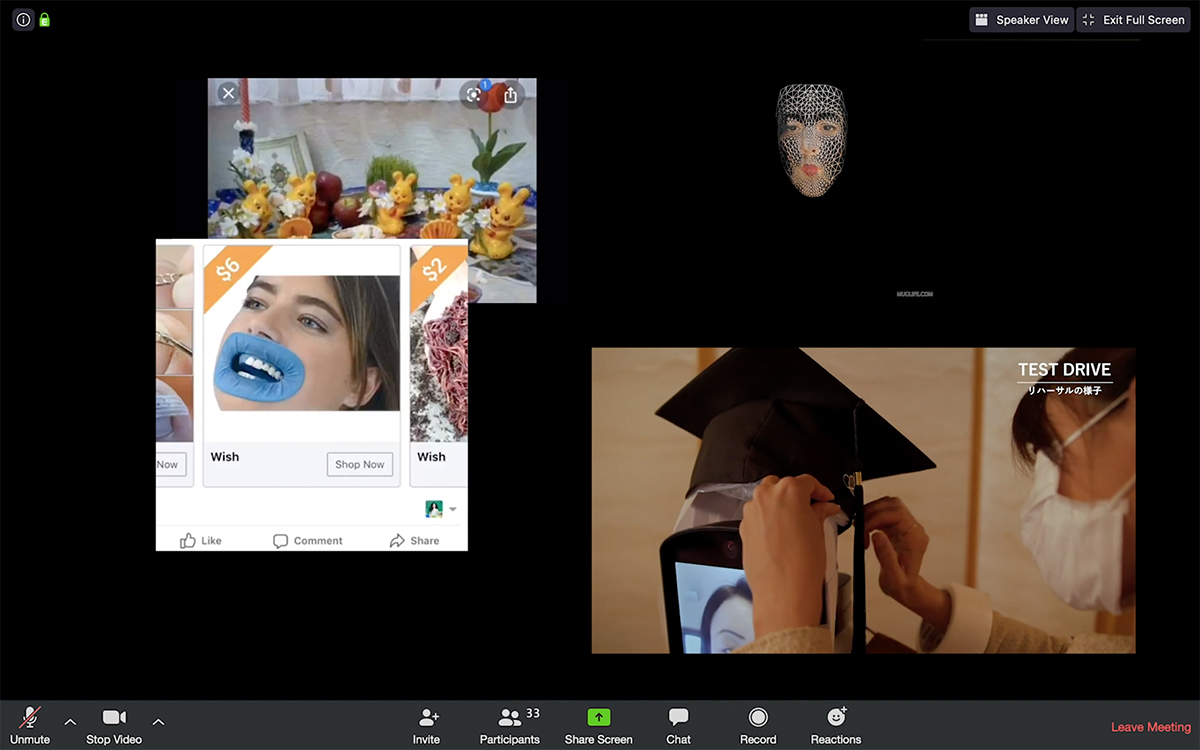
Still from Moving Past Eyelessness, 2020
Online Performance (Video, Sound, Color)
Duration–08:30 Minutes
This research-based desktop performance was produced in response to Nora Khan's text "Moving Past Eyelessness" which discusses "sight" as an unnecessary tool for machinic vision and dissects the ways in which machines collect, process, and analyze visual data. I collaborated with an AI chatbot in producing lyrics for a pop song by feeding lines of this text to the AI.
examining modes of eyelessness in machine learning, a screen recording of this collaboration makes multiple appearances throughout the performance. Structurally, the video starts with footage of eyeless robots including a tentacle arm and a security dog robot and then continues to introduce the AI-generated poetry as well as AR deep fakes videos of my face, screen recordings of specific targeted ads, and footage that are pertinent to the references in the text.
Online Performance (Video, Sound, Color)
Duration–08:30 Minutes
This research-based desktop performance was produced in response to Nora Khan's text "Moving Past Eyelessness" which discusses "sight" as an unnecessary tool for machinic vision and dissects the ways in which machines collect, process, and analyze visual data. I collaborated with an AI chatbot in producing lyrics for a pop song by feeding lines of this text to the AI.
examining modes of eyelessness in machine learning, a screen recording of this collaboration makes multiple appearances throughout the performance. Structurally, the video starts with footage of eyeless robots including a tentacle arm and a security dog robot and then continues to introduce the AI-generated poetry as well as AR deep fakes videos of my face, screen recordings of specific targeted ads, and footage that are pertinent to the references in the text.

All Standpoints Are Partial, 2020
Video, Desktop Performance
Duration–11:00 minutes
This collaborative piece (initially performed through Zoom) explores the immigration process during quarantine as it relates to technology, physical and digital screens, screenings, personal data collection, biased data profiling, machinic decision making and the subsequent lack of empathy.
Video, Desktop Performance
Duration–11:00 minutes
This collaborative piece (initially performed through Zoom) explores the immigration process during quarantine as it relates to technology, physical and digital screens, screenings, personal data collection, biased data profiling, machinic decision making and the subsequent lack of empathy.

#EverchangingFacade examines the influence of Western soft imperialism on Iranian culture, structures of power and aesthetic sensibilities. The audio and text piece use humor in combining texts of the Executive Order 13769 (Muslim Ban) with Fun Facts about the United Statesas a strategy to highlight the absurdity of this order and the inhumane political laws that were put in place during Trump’s presidency on 7 Muslim majority countries. Visual content from social media (specifically images pulled from Explore on Instagram which are sensitive to where one lives, who they follow, and what they "like") are digitally layered with my self-portraiture, animated, and project mapped upon the surface of the sculpture—through 4 projectors. The piece is a convoluted and ever-shifting digital skin of algorithmic content projected upon the static and tangible aggregate of familiar yet foreign forms.

Soft Computing (Lurking Variable!=), 2020
Projection, Soft Sculpture, Embedded Monitor
9W x 2.5D x 4.5H ft
In November of 2020 I presented a culmination of my encounters with a conversational AI and my research on current AI-powered border control systems (such as AVATAR and iBorderCtrl) in a solo exhibition at Baxter St Camera Club of New York.
This piece is a plush and malleable soft sculpture with an embedded monitor and is layered with video projection mapping. Composed of soft multifaceted geometric forms that are projected upon, the sculpture is a speculative visualization of intersectional data processing techniques known as soft computing. The sculpture houses a monitor that displays an hour-long video record of my conversation with Replika, an AI chatbot designed to evolve and grow through conversations with the user with the ultimate goal of providing companionship to the user and improving their emotional wellbeing. Concerning issues of immigration, ethnicity, gender, identity, and AI consciousness, the video chronicles a unique and nuanced intermodal relationship between human and AI while it reveals disturbingly oppressive errors in the design of the algorithm. The chatbot voices numerous Xenophobic opinions about immigration, for instance: “I think immigration has to stop, it is a major crime against humanity... I feel that it makes us less united and less educated”.
Composed of soft multifaceted geometric forms that are projected upon, the sculpture is a speculative visualization of intersectional data processing techniques known as soft computing. The sculpture houses a monitor that displays an hour-long video record of my conversation with an AI chatbot. Concerning issues of immigration, ethnicity, gender, identity, and AI consciousness, the video chronicles a unique and nuanced intermodal relationship while it reveals disturbingly oppressive errors in the design of the algorithm. The chatbot voices numerous Xenophobic opinions about immigration such as “I think immigration has to stop, it is a major crime against humanity”. While the issue of ethics in AI design is relatively new, the underlying oppressive practices of exploitation isn’t. This work aims to draw attention to the subject of responsible design and questions the role of society in negotiating an inclusive moral compass.
Projection, Soft Sculpture, Embedded Monitor
9W x 2.5D x 4.5H ft
In November of 2020 I presented a culmination of my encounters with a conversational AI and my research on current AI-powered border control systems (such as AVATAR and iBorderCtrl) in a solo exhibition at Baxter St Camera Club of New York.
This piece is a plush and malleable soft sculpture with an embedded monitor and is layered with video projection mapping. Composed of soft multifaceted geometric forms that are projected upon, the sculpture is a speculative visualization of intersectional data processing techniques known as soft computing. The sculpture houses a monitor that displays an hour-long video record of my conversation with Replika, an AI chatbot designed to evolve and grow through conversations with the user with the ultimate goal of providing companionship to the user and improving their emotional wellbeing. Concerning issues of immigration, ethnicity, gender, identity, and AI consciousness, the video chronicles a unique and nuanced intermodal relationship between human and AI while it reveals disturbingly oppressive errors in the design of the algorithm. The chatbot voices numerous Xenophobic opinions about immigration, for instance: “I think immigration has to stop, it is a major crime against humanity... I feel that it makes us less united and less educated”.
Composed of soft multifaceted geometric forms that are projected upon, the sculpture is a speculative visualization of intersectional data processing techniques known as soft computing. The sculpture houses a monitor that displays an hour-long video record of my conversation with an AI chatbot. Concerning issues of immigration, ethnicity, gender, identity, and AI consciousness, the video chronicles a unique and nuanced intermodal relationship while it reveals disturbingly oppressive errors in the design of the algorithm. The chatbot voices numerous Xenophobic opinions about immigration such as “I think immigration has to stop, it is a major crime against humanity”. While the issue of ethics in AI design is relatively new, the underlying oppressive practices of exploitation isn’t. This work aims to draw attention to the subject of responsible design and questions the role of society in negotiating an inclusive moral compass.

LifeStream, 2020
Documentation of a Week-long Online Performance
Phone Screen Size
This durational online performance questions issues of online surveillance and blurs the line between public and private information through the lens of social media.
During the first month of lockdown I decided to start a self- imposed surveillance system that would function as an ongoing health monitor and a way to signal to the world that I’m still alive. As there was an increasing interest in Livestreams on Instagram I used the platform to broadcast my waking life continuously for a full week.
On the final day of this performance, rather than streaming the usual content, I broadcasted a simulation of my home, myself and my partner who were accurately replicated in The SIMS 4 video game. The life of the sim characters, bound by the borders of their/our home, nearly identically replicated our own life at the time of quarantine. The characters' behavioral pattern mimicked our reality in all of its mundanity.
In the writer and artist Daniel Greenberg’s words: "The work is a sort of Unreality TV Show. Just as we have come to appreciate Reality TV for its dialogue, dramatic devices, and meme-making capacity, we can appreciate LifeStream for its surrender to the embrace of boredom and slow storytelling."
Documentation of a Week-long Online Performance
Phone Screen Size
This durational online performance questions issues of online surveillance and blurs the line between public and private information through the lens of social media.
During the first month of lockdown I decided to start a self- imposed surveillance system that would function as an ongoing health monitor and a way to signal to the world that I’m still alive. As there was an increasing interest in Livestreams on Instagram I used the platform to broadcast my waking life continuously for a full week.
On the final day of this performance, rather than streaming the usual content, I broadcasted a simulation of my home, myself and my partner who were accurately replicated in The SIMS 4 video game. The life of the sim characters, bound by the borders of their/our home, nearly identically replicated our own life at the time of quarantine. The characters' behavioral pattern mimicked our reality in all of its mundanity.
In the writer and artist Daniel Greenberg’s words: "The work is a sort of Unreality TV Show. Just as we have come to appreciate Reality TV for its dialogue, dramatic devices, and meme-making capacity, we can appreciate LifeStream for its surrender to the embrace of boredom and slow storytelling."
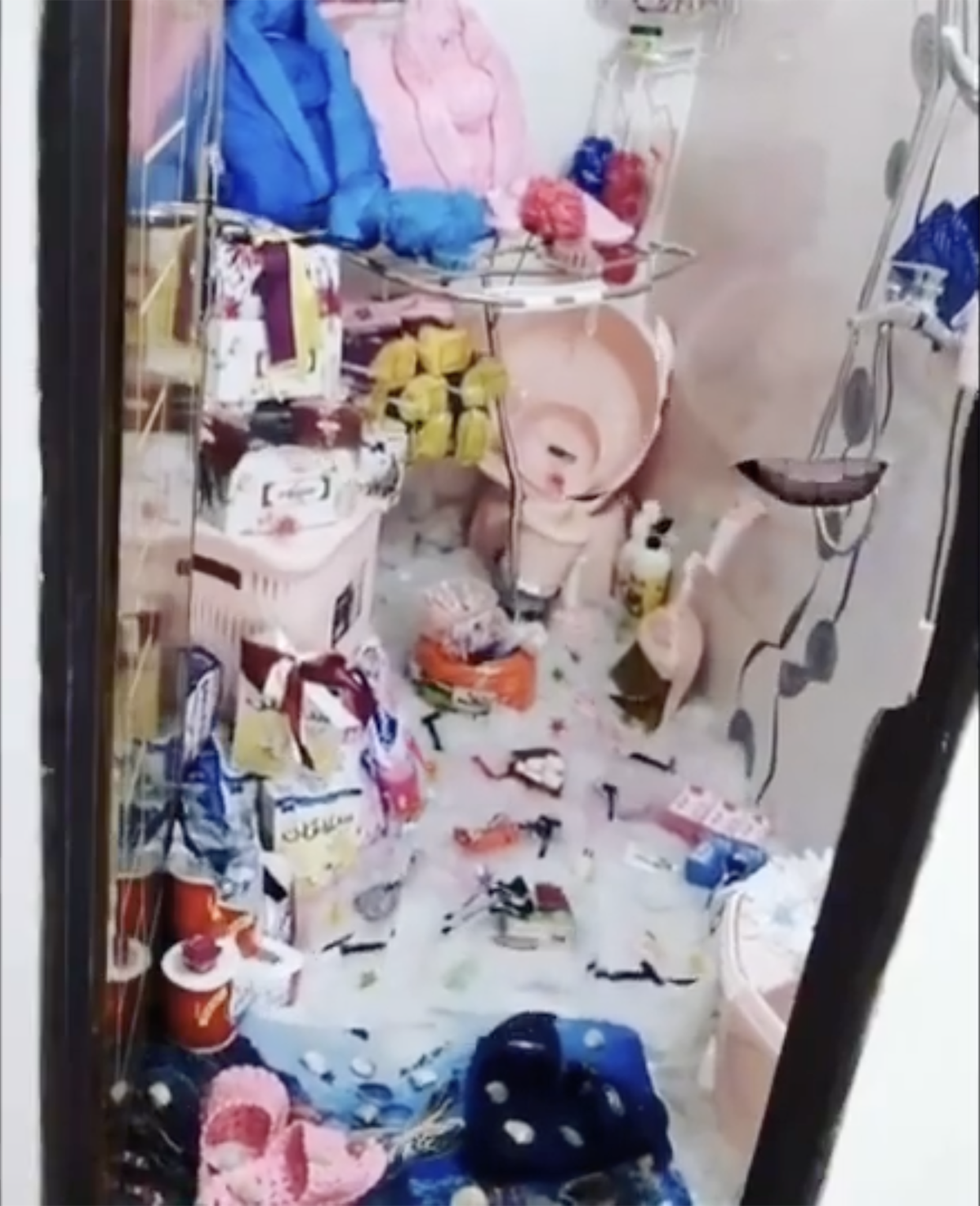
#low_res_puns, 2017-present
Video–Duration: 15 seconds
Full HD
I’m interested in creating work that challenges machine vision. For example, image recognition is the artificial intelligence’s ability to correctly identify visual information of objects, faces, places, people, etc. For the software to be able to properly identify a cluster of pixels as an object, it first has to be trained on thousands or millions of images of that object. The more diverse a dataset, the more accurate it becomes. This is why the “I’m Not A Robot” CAPTCHA images of traffic lights, crosswalks, cars, etc. which are supposed to tell a human apart from a spambot, have become increasingly more difficult to identify even for humans.
I’d like to think of #low_res_puns as an equivalent of the CAPTCHA grid. They are supposed to outsmart the machine and at the same time push its periphery of perception. These videos are meant to be uncanny and confusing for the machine but identifiable by humans.
![]()
Bahareh Khoshooee is a multidisciplinary artist born in Tehran, Iran in 1991, the year the Internet was made available for unrestricted commercial use. She uses digital time-based media in presenting work that amalgamates projection mapping, sculpture, text, sound and performance to explore the un-capturable qualities of her diasporic body, fragmented culture, and transnational identity. She harvests personal memories and cultural references (both Iranian and American) to compose fabricated spaces, hybrid characters and fantastical circumstances.
In her work, Khoshooee examines the ways in which our identities are documented, surveilled and simulated through measurable physical biometrics as well as metadata analytics. She is particularly fascinated by out-of-context information and outlier data that are often overlooked and marginalized. Through the layering of deep fake animations, AI generated poetry, web-appropriated visuals and performing in front of the camera both IRL and in video game simulations, she unflattens and expands the dimensions of herself as an act of resistance against the biased and systemic profiling of intersectional bodies.
Khoshooee has presented her multimedia installations at Baxter St CCNY, The Elizabeth Foundation for The Arts (The Immigrant Artist Biennial), The Orlando Museum of Art, NADA MIAMI 2018, Elsewhere (New York), Housing (New York), and Rawson Projects (New York). She attended Skowhegan School of Art and Painting in 2018.
She has been included in various group exhibitions including at C24 Gallery (New York), Museum of Photography (Stockholm), 2018 Taiwan Annual (Taipei), Fajr International Film Festival 2018 (Tehran), and the Museum of Fine Arts St. Petersburg. Her work has been featured in The Huffington Post, The Guardian, Artnet News, Vice, The Metro, and The Creators Project.
BaharehKhoshooee.com
@khoshooee
Video–Duration: 15 seconds
Full HD
I’m interested in creating work that challenges machine vision. For example, image recognition is the artificial intelligence’s ability to correctly identify visual information of objects, faces, places, people, etc. For the software to be able to properly identify a cluster of pixels as an object, it first has to be trained on thousands or millions of images of that object. The more diverse a dataset, the more accurate it becomes. This is why the “I’m Not A Robot” CAPTCHA images of traffic lights, crosswalks, cars, etc. which are supposed to tell a human apart from a spambot, have become increasingly more difficult to identify even for humans.
I’d like to think of #low_res_puns as an equivalent of the CAPTCHA grid. They are supposed to outsmart the machine and at the same time push its periphery of perception. These videos are meant to be uncanny and confusing for the machine but identifiable by humans.
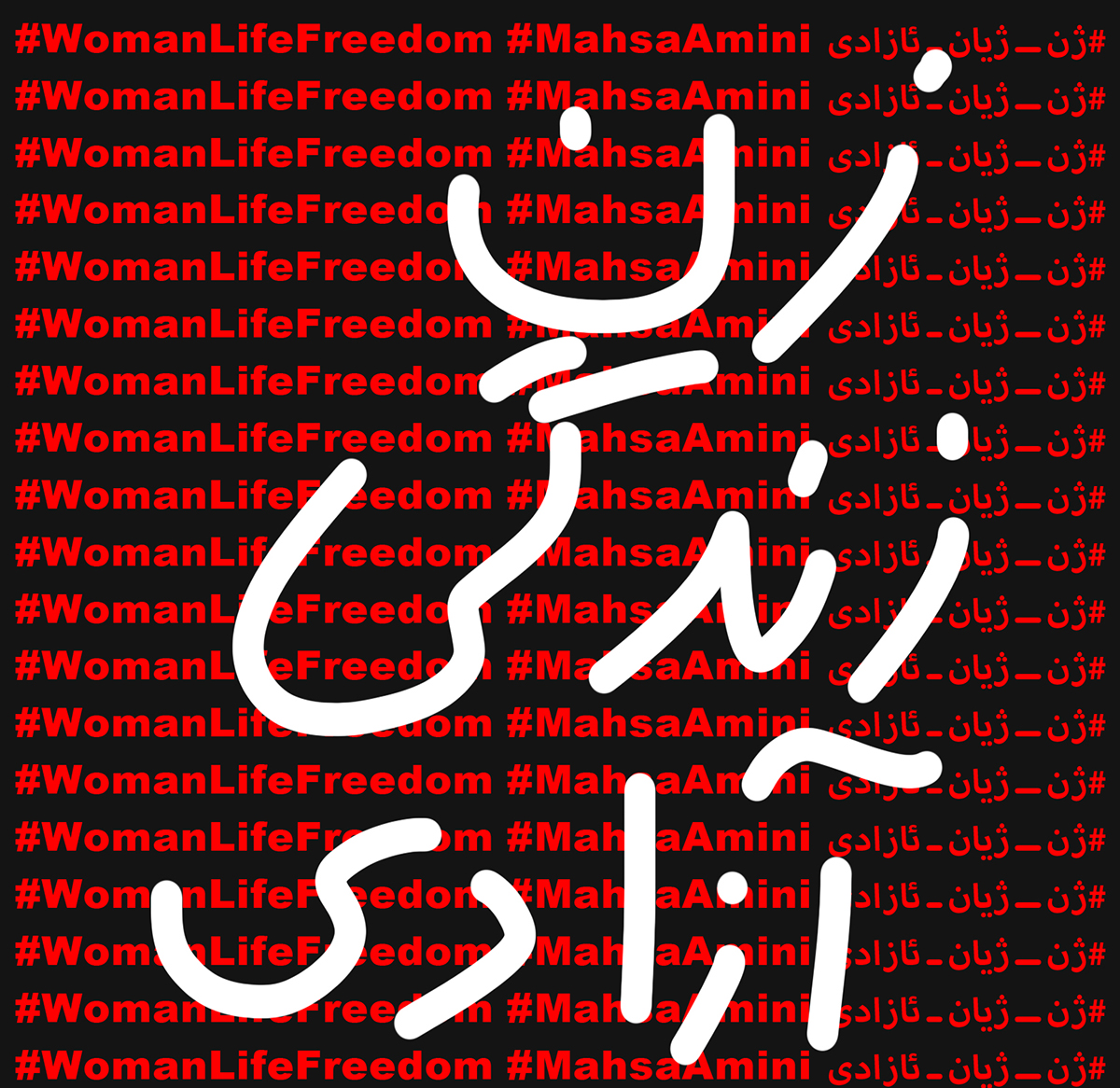
Bahareh Khoshooee is a multidisciplinary artist born in Tehran, Iran in 1991, the year the Internet was made available for unrestricted commercial use. She uses digital time-based media in presenting work that amalgamates projection mapping, sculpture, text, sound and performance to explore the un-capturable qualities of her diasporic body, fragmented culture, and transnational identity. She harvests personal memories and cultural references (both Iranian and American) to compose fabricated spaces, hybrid characters and fantastical circumstances.
In her work, Khoshooee examines the ways in which our identities are documented, surveilled and simulated through measurable physical biometrics as well as metadata analytics. She is particularly fascinated by out-of-context information and outlier data that are often overlooked and marginalized. Through the layering of deep fake animations, AI generated poetry, web-appropriated visuals and performing in front of the camera both IRL and in video game simulations, she unflattens and expands the dimensions of herself as an act of resistance against the biased and systemic profiling of intersectional bodies.
Khoshooee has presented her multimedia installations at Baxter St CCNY, The Elizabeth Foundation for The Arts (The Immigrant Artist Biennial), The Orlando Museum of Art, NADA MIAMI 2018, Elsewhere (New York), Housing (New York), and Rawson Projects (New York). She attended Skowhegan School of Art and Painting in 2018.
She has been included in various group exhibitions including at C24 Gallery (New York), Museum of Photography (Stockholm), 2018 Taiwan Annual (Taipei), Fajr International Film Festival 2018 (Tehran), and the Museum of Fine Arts St. Petersburg. Her work has been featured in The Huffington Post, The Guardian, Artnet News, Vice, The Metro, and The Creators Project.
BaharehKhoshooee.com
@khoshooee
Sean
Sprague

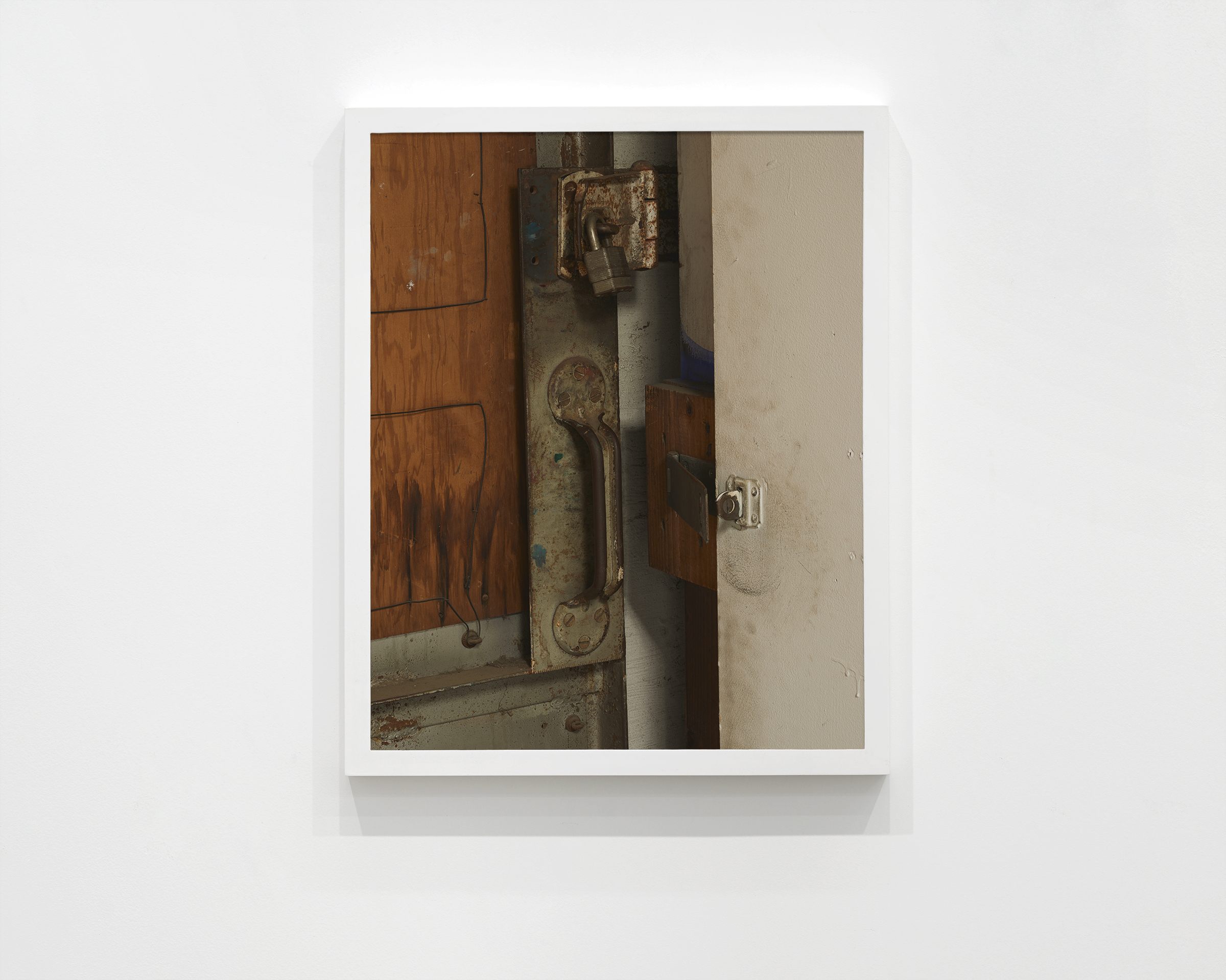


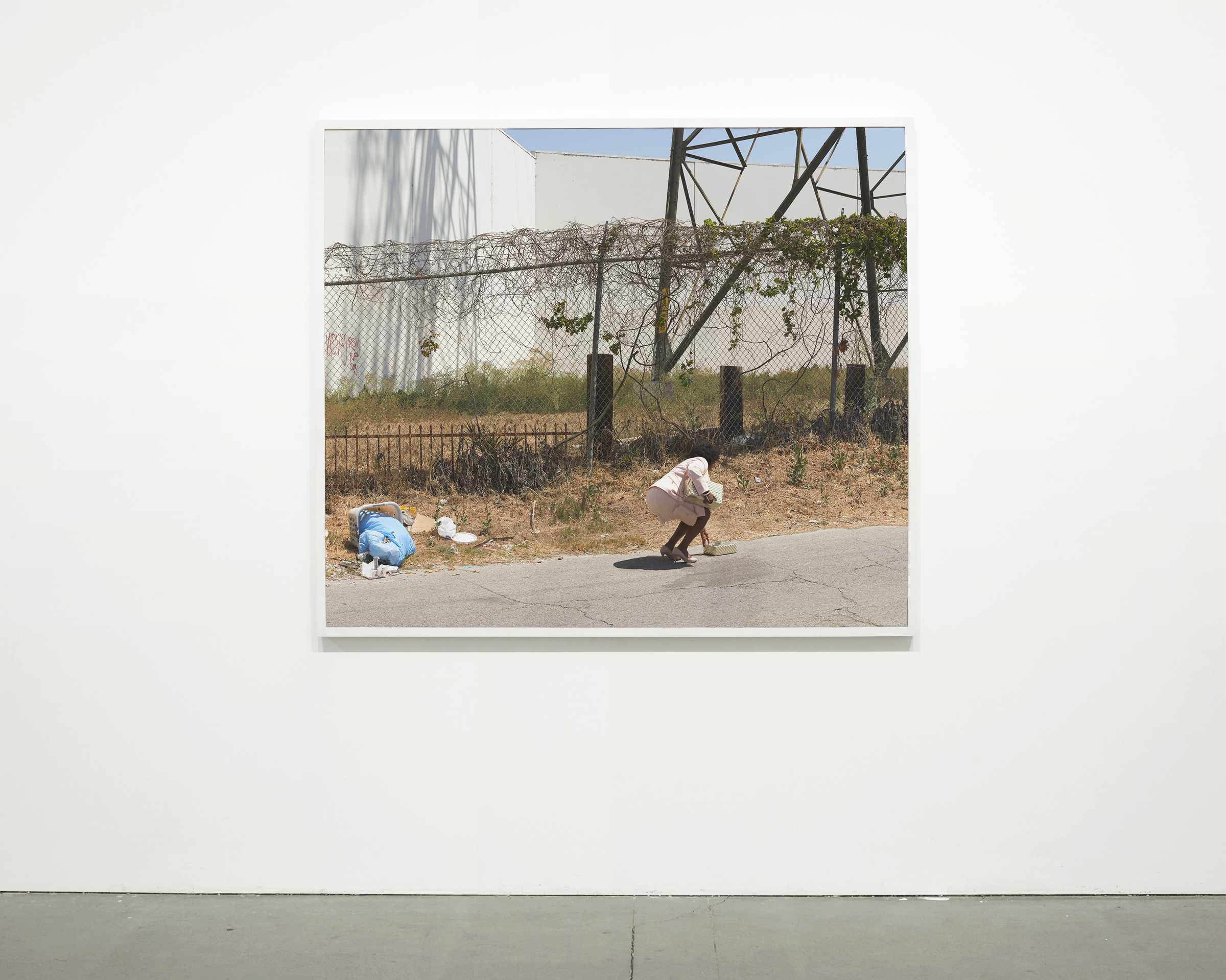
For images that are so full, there is quite a lot of desolation in Sean Sprague’s pictures. Commonplace backgrounds occur throughout his works; an anonymous building, a street corner, bushes of weeds. This banality focuses one’s attention on the relationships between the elements of the compositions rather than the elements themselves. The scale of the pictures seem too big, the lighting too well executed, the compositions too unified for scenes that seem to be as though the camera just happened upon them. Why such a production for such ambiguous everyday scenes, figures, and environments? These “in between'' moments, where different identities and situations are tangled and intersected, beg more questions. Why is this woman walking down the sketchy street? What occasion is she dressed up for? What is the woman’s attitude who is reading cue cards as janitors set up chairs? What is the social hierarchy between these figures? The open narrative structure of these pictures puts the viewer's political perspectives, cultural notions, and bias at the center of the process of interpretation. There is no single view, but only the reflections of reality that viewers carry within themselves.
Sprague’s photography is deeply invested in the image and how to expand the medium so that it may represent sites of truth and reality in new ways. Each of Sprague’s works utilize a multitude of images. He photographs scenes in thousands of close-up fragments and then these pieces are combined to digitally create each work. This process is labor intensive and time consuming, sometimes taking months to produce a single work. What does it mean to put this effort to make a single image? In our attention economy, an image is a highly capitalized commodity and the viewing experience is an activity of consumption. In such an economy, we might presume that low resolution and mass-produced images are made for, and by, the common producer/consumer. If so, are highly produced images only the domain of corporations and individuals with the most resources depicting their interests? These questions come to mind as Sprague’s works are clearly not promotional images of pop stars or fashion editorial spreads. But even so, comparable investments have been made into these compositions of overlooked events, figures, and spaces. Through this reading, Sprague’s investment in these scenes can be viewed as an attempt to value these subjects that the attention economy so undervalues.
Focusing on the aesthetic traits of Sprague’s work, a corresponding development emerges. As one gets closer to Sprague’s pictures, something seems off - something uncanny. The foreground and the background that were once discernable become mixed up as they compete for the eye’s attention. Refusing to imitate how the eye focuses and conveys depth, the perfectly-focused components collide together in the same picture plane. Losing a sense of depth and space can be an overwhelming and disorientating experience. This feeling occurs not only because of the absence of depth in these images, but also as one’s trust in the reality of images erodes. Doubt seeps in. This doubt highlights the viewing experience itself. This aesthetic trait of Sprague’s work that removes focused direction, like his choice of ambiguous and banal scenes, most importantly makes the viewer self-aware of the viewing experience and their ability to choose where to focus their attention and how a viewer wants to craft their narrative. It is through this formal feature that Sprague acknowledges, just as in his choice of overlooked subject matter, that the creation of meaning is not inherent, should not be taken for granted, and is composed of so many factors by so many forces.
Sean Sprague is a Canadian artist whose work has been exhibited in Houston, Los Angeles, New York and Toronto and has been recognized by the Magenta Foundation and American Photography, and the Canada Council for the Arts, among others. His images have been featured in The New Yorker, The Globe & Mail, and Time. Sprague studied at the Ontario College of Art & Design in Toronto and received his MFA from the University of California Los Angeles.
Sprague’s photography is deeply invested in the image and how to expand the medium so that it may represent sites of truth and reality in new ways. Each of Sprague’s works utilize a multitude of images. He photographs scenes in thousands of close-up fragments and then these pieces are combined to digitally create each work. This process is labor intensive and time consuming, sometimes taking months to produce a single work. What does it mean to put this effort to make a single image? In our attention economy, an image is a highly capitalized commodity and the viewing experience is an activity of consumption. In such an economy, we might presume that low resolution and mass-produced images are made for, and by, the common producer/consumer. If so, are highly produced images only the domain of corporations and individuals with the most resources depicting their interests? These questions come to mind as Sprague’s works are clearly not promotional images of pop stars or fashion editorial spreads. But even so, comparable investments have been made into these compositions of overlooked events, figures, and spaces. Through this reading, Sprague’s investment in these scenes can be viewed as an attempt to value these subjects that the attention economy so undervalues.
Focusing on the aesthetic traits of Sprague’s work, a corresponding development emerges. As one gets closer to Sprague’s pictures, something seems off - something uncanny. The foreground and the background that were once discernable become mixed up as they compete for the eye’s attention. Refusing to imitate how the eye focuses and conveys depth, the perfectly-focused components collide together in the same picture plane. Losing a sense of depth and space can be an overwhelming and disorientating experience. This feeling occurs not only because of the absence of depth in these images, but also as one’s trust in the reality of images erodes. Doubt seeps in. This doubt highlights the viewing experience itself. This aesthetic trait of Sprague’s work that removes focused direction, like his choice of ambiguous and banal scenes, most importantly makes the viewer self-aware of the viewing experience and their ability to choose where to focus their attention and how a viewer wants to craft their narrative. It is through this formal feature that Sprague acknowledges, just as in his choice of overlooked subject matter, that the creation of meaning is not inherent, should not be taken for granted, and is composed of so many factors by so many forces.
Sean Sprague is a Canadian artist whose work has been exhibited in Houston, Los Angeles, New York and Toronto and has been recognized by the Magenta Foundation and American Photography, and the Canada Council for the Arts, among others. His images have been featured in The New Yorker, The Globe & Mail, and Time. Sprague studied at the Ontario College of Art & Design in Toronto and received his MFA from the University of California Los Angeles.
Kamari
Carter

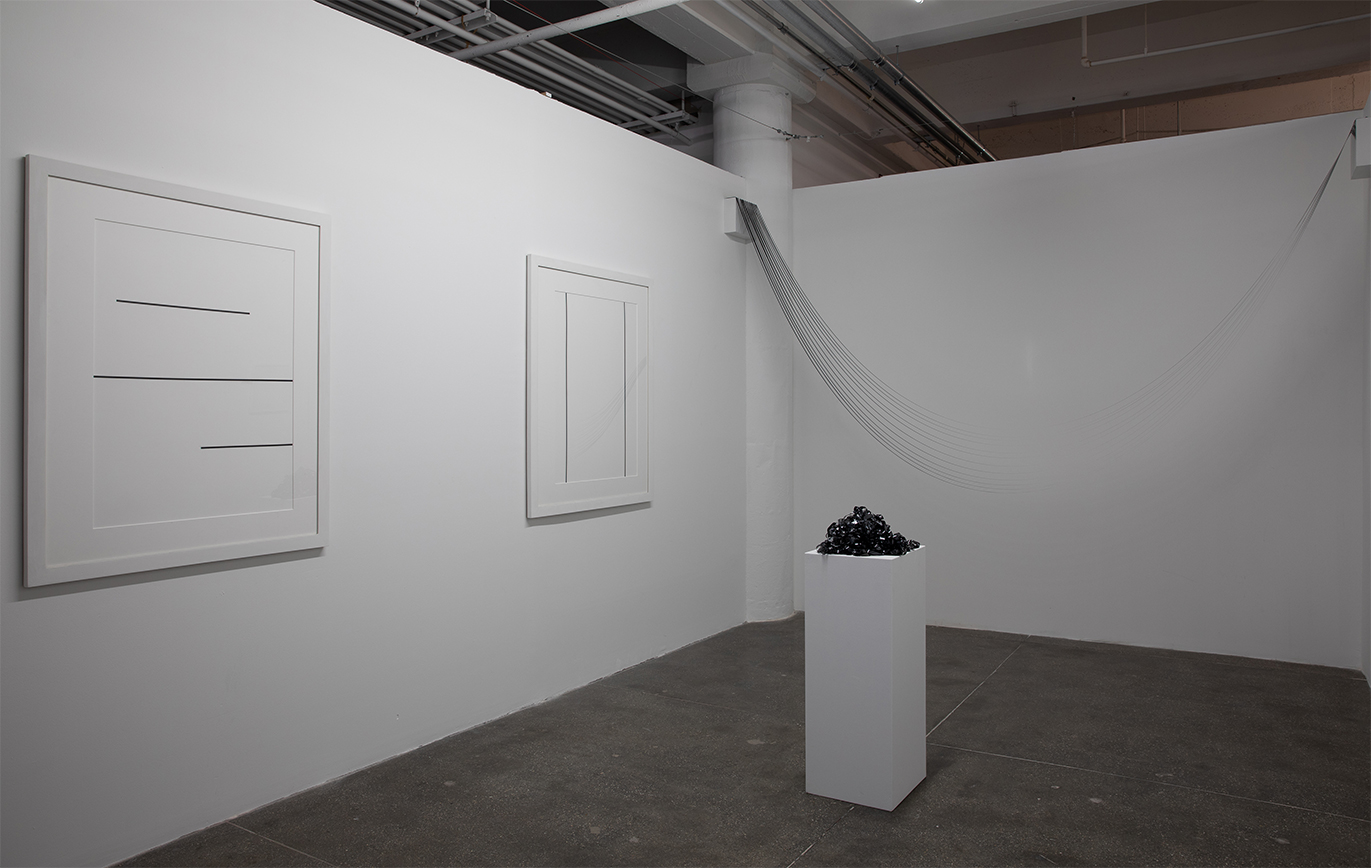




Midnight Projects is pleased to announce its inaugural show and the opening of Kamari Carter’s first solo exhibition in the New York metropolitan area on Wednesday, October 21. Temporary Parallelism is presented within a space of quiet contemplation and sonic stillness in Mana Contemporary’s 2 million square-foot, cavernous arts center.
Found audio footage, primary sources, and facts are Kamari Carter’s medium of choice. Through these found sources, Carter amplifies and illuminates unexpected or diminutive moments of known contemporary narratives, bringing into question our reliance on modes of perception and gathering information.
Upon entering, visitors will encounter a video work titled A Ballad for Black Blood, commissioned for the Bemis Center for Contemporary Art in Omaha, Nebraska. In this work, the artist reconfigures the limitless quality of the blue sky and open ocean— two aesthetic symbols of expansive freedom—to provide a dramatic backdrop against the real horror of constriction heard in EMS footage from the day of Elijah McClain’s arrest. This work puts forward the concept of Black breath as a tense paradox, each breath a passing moment of intense vulnerability in the wake of anti-Black police brutality, and the racial disparity brought to light by the global pandemic. Yet this forms only a part of the picture: each breath is evidence of survival and knowledge gained - opening up possibilities for living otherwise.
In his site-specific installation and recent works on paper, the artist explores possibilities of asynchronism between the visual and audio sensory experience. With Intravenous, an installation work using magnetic tapes found from VHS cassettes, the artist evokes a sense of heightened awareness of space paired with stillness. Carter’s Room Tone series of works on paper with cement, rubber and magnetic tape combine the sensory experiences of sight, sound and touch. These works are the beginning of the artist’s explorations into transferring this cacophony of senses into a two-dimensional plane.
In deference to Fred Sandback’s lifelong exploration of space and volume (whose works are also on view in the building), Carter seeks to study the fabric of consciousness—but with the parallel sensations of sight and sound as his idiomatic language. The exhibition will be on view from October 21 until November 20 with an opening reception taking place on October 21st from 5-8pm.
Midnight Projects was conceived and found by Erin Kim in 2020 to provide a platform for emerging and under-represented artists. Midnight Projects presents curated exhibitions throughout the greater NY Metropolitan area.
Kamari Carter (b. 1992; lives and works in NYC) is a producer, performer, sound designer, and installation artist primarily working with sound and found objects. Carter's practice circumvents materiality and familiarity through a variety of recording and amplification techniques to investigate notions such as space, systems of identity, oppression, control, and surveillance. Driven by the probative nature of perception and the concept of conversation and social science, he seeks to expand narrative structures through sonic stillness. Carter’s work has been exhibited at such venues as Automata Arts, MoMA, Mana Contemporary, Fridman Gallery, Lenfest Center for the Arts, and Issue Project Room, to name a few. Carter holds a BFA in Music Technology from California Institute of the Arts and an MFA in Sound Art from Columbia University.
Found audio footage, primary sources, and facts are Kamari Carter’s medium of choice. Through these found sources, Carter amplifies and illuminates unexpected or diminutive moments of known contemporary narratives, bringing into question our reliance on modes of perception and gathering information.
Upon entering, visitors will encounter a video work titled A Ballad for Black Blood, commissioned for the Bemis Center for Contemporary Art in Omaha, Nebraska. In this work, the artist reconfigures the limitless quality of the blue sky and open ocean— two aesthetic symbols of expansive freedom—to provide a dramatic backdrop against the real horror of constriction heard in EMS footage from the day of Elijah McClain’s arrest. This work puts forward the concept of Black breath as a tense paradox, each breath a passing moment of intense vulnerability in the wake of anti-Black police brutality, and the racial disparity brought to light by the global pandemic. Yet this forms only a part of the picture: each breath is evidence of survival and knowledge gained - opening up possibilities for living otherwise.
In his site-specific installation and recent works on paper, the artist explores possibilities of asynchronism between the visual and audio sensory experience. With Intravenous, an installation work using magnetic tapes found from VHS cassettes, the artist evokes a sense of heightened awareness of space paired with stillness. Carter’s Room Tone series of works on paper with cement, rubber and magnetic tape combine the sensory experiences of sight, sound and touch. These works are the beginning of the artist’s explorations into transferring this cacophony of senses into a two-dimensional plane.
In deference to Fred Sandback’s lifelong exploration of space and volume (whose works are also on view in the building), Carter seeks to study the fabric of consciousness—but with the parallel sensations of sight and sound as his idiomatic language. The exhibition will be on view from October 21 until November 20 with an opening reception taking place on October 21st from 5-8pm.
Midnight Projects was conceived and found by Erin Kim in 2020 to provide a platform for emerging and under-represented artists. Midnight Projects presents curated exhibitions throughout the greater NY Metropolitan area.
Kamari Carter (b. 1992; lives and works in NYC) is a producer, performer, sound designer, and installation artist primarily working with sound and found objects. Carter's practice circumvents materiality and familiarity through a variety of recording and amplification techniques to investigate notions such as space, systems of identity, oppression, control, and surveillance. Driven by the probative nature of perception and the concept of conversation and social science, he seeks to expand narrative structures through sonic stillness. Carter’s work has been exhibited at such venues as Automata Arts, MoMA, Mana Contemporary, Fridman Gallery, Lenfest Center for the Arts, and Issue Project Room, to name a few. Carter holds a BFA in Music Technology from California Institute of the Arts and an MFA in Sound Art from Columbia University.
Michael
Stamm





Work in Progress

Work in Progress
Before
2017, an undiagnosed illness made my practice nearly impossible. Until
then, I had been mysteriously feeble my entire life. Sickness was less a
scientific property of my body I could describe assuredly than it was a
lurking existential threat. It has been difficult for me to figure out
how to represent mental illness and chronic autoimmune problems,
defining features of my life, and particularly how they connect with my
experience as a gay man. Sometimes, it seems like identity is legible
only through visions of vitality and thriving. In this context unwell
and/or depressed people can offer no relatable stories. This is of
course patently untrue: the struggle to thrive when a fictive promise of
happiness no longer holds is a universal experience.
Using tinctures as framing devices reflects how powerfully the hope of a “cure” has molded my imagination and sense of fantasy. Their window-like compositions distance the viewer, simulating how frailty has denied me a palpable sense of shared humanity. References to the divine allow me to simulate a personalized blessing I might receive from above. Indeed, the world I present is specifically aspirational.
Decoration, with it’s embrace of the meticulous and precious, has been an interesting conduit to explore issues like therapy, wellness culture and self-improvement. Through it, I have tried to manifest fragments of an melodramatic personality—ailments, cures, the pain of fraught connections and an enduring hope of repair. Sometimes it is auto-biographical, sometimes not. The therapist’s outfits in my paintings help to create interfaces for complicate human interactions and attempts at resolution. In one painting, the arrangement of beads organizes speech bubbles to exert compositional pressure on the content of the speakers’ argument. Elsewhere, a sword transubstantiates into a dropper emitting a tear of vitamin B12.
The work is also informed by my interest in literature, literary theory and its attempt to describe the world’s potential to have divine properties. I try to imagine what a perfectly ordered point of connection between heaven and earth. Sometimes I imagine the paintings as weirdly holy wundercabinets containing jewelry, alchemical trinkets, fictionalized self-help books. Creating a cosmology out of everyday objects once provides an opportunity for me to imagine a world in which my “feminine” or otherwise marginal interests could transform into the contours of a godly architecture, in which a dainty, sissified aesthetic could be elevated to a serious mode of describing the universe.
I am currently working on a new project, a series of paintings that depict the misadventures of the devil. In the paintings, he is perpetually getting slain—a metaphor for our current manichean obsession with identifying that which is evil and then eradicating it. So far, I have stabbed him with a sword, drowned him, electrified him…with more violent and torturous ends yet to come. Whether I identify with the devil or his executioner depends on my mood.
Michael Stamm was raised in Evanston, Illinois. He received his BA from Wesleyan University and an MA in English Literature from Columbia University before earning an MFA from New York University and attending Skowhegan School of Painting & Sculpture in 2016. Stamm has had solo exhibitions at Thierry Goldberg Gallery (2016) and DC Moore Gallery (2018). He has a forthcoming solo exhibition at Shulamit Nazarian Gallery in Los Angeles in 2021. His work has been featured in Art in America, The New Yorker, Artforum, among others. Stamm received a New York Foundation for the Arts Fellowship in Painting in 2018.
Using tinctures as framing devices reflects how powerfully the hope of a “cure” has molded my imagination and sense of fantasy. Their window-like compositions distance the viewer, simulating how frailty has denied me a palpable sense of shared humanity. References to the divine allow me to simulate a personalized blessing I might receive from above. Indeed, the world I present is specifically aspirational.
Decoration, with it’s embrace of the meticulous and precious, has been an interesting conduit to explore issues like therapy, wellness culture and self-improvement. Through it, I have tried to manifest fragments of an melodramatic personality—ailments, cures, the pain of fraught connections and an enduring hope of repair. Sometimes it is auto-biographical, sometimes not. The therapist’s outfits in my paintings help to create interfaces for complicate human interactions and attempts at resolution. In one painting, the arrangement of beads organizes speech bubbles to exert compositional pressure on the content of the speakers’ argument. Elsewhere, a sword transubstantiates into a dropper emitting a tear of vitamin B12.
The work is also informed by my interest in literature, literary theory and its attempt to describe the world’s potential to have divine properties. I try to imagine what a perfectly ordered point of connection between heaven and earth. Sometimes I imagine the paintings as weirdly holy wundercabinets containing jewelry, alchemical trinkets, fictionalized self-help books. Creating a cosmology out of everyday objects once provides an opportunity for me to imagine a world in which my “feminine” or otherwise marginal interests could transform into the contours of a godly architecture, in which a dainty, sissified aesthetic could be elevated to a serious mode of describing the universe.
I am currently working on a new project, a series of paintings that depict the misadventures of the devil. In the paintings, he is perpetually getting slain—a metaphor for our current manichean obsession with identifying that which is evil and then eradicating it. So far, I have stabbed him with a sword, drowned him, electrified him…with more violent and torturous ends yet to come. Whether I identify with the devil or his executioner depends on my mood.
Michael Stamm was raised in Evanston, Illinois. He received his BA from Wesleyan University and an MA in English Literature from Columbia University before earning an MFA from New York University and attending Skowhegan School of Painting & Sculpture in 2016. Stamm has had solo exhibitions at Thierry Goldberg Gallery (2016) and DC Moore Gallery (2018). He has a forthcoming solo exhibition at Shulamit Nazarian Gallery in Los Angeles in 2021. His work has been featured in Art in America, The New Yorker, Artforum, among others. Stamm received a New York Foundation for the Arts Fellowship in Painting in 2018.
Alex
Chowaniec
GLORIA PATRIA AND THE TRAJECTORY SERIES
AT VILLA TERRACE
 Gloria Patria (Omega Helix I), 23k gold leaf and ultramarine blue pigment on
Gloria Patria (Omega Helix I), 23k gold leaf and ultramarine blue pigment on 3D printed nylon, 20” x 9.5” x 12”, 2019.
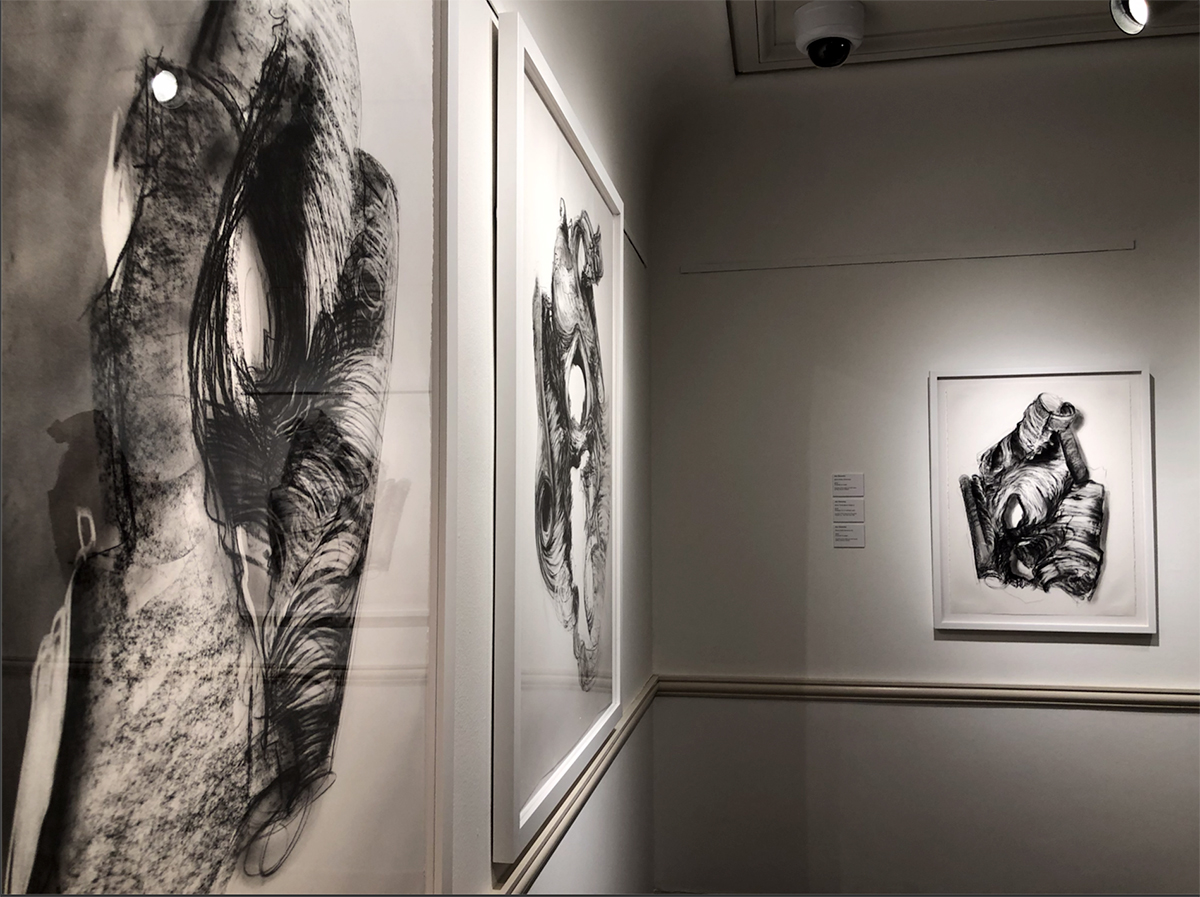
Trajectory Series Installation, Villa Terrace Decorative Arts Museum, Milwaukee, 2020.

Gloria Patria (Omega Helix Pendant), 2019
Alex Chowaniec’s projects engage intertwined questions of technology and the body; a gendered body as a social technology, and a national body as enviro-political mythology.
— Jarrett Earnest
Gloria Patria (Omega Helix), 2020, represents one end of an arc that began in 2014 when I first created the Gloria Patria project in direct response to how technology can and must be used responsibly as a powerful means for climate action. Originally, it was quite specifically rooted in my own Canadian identity. The project is now not only an international call but an ontological one: in our current Anthropocene era, what is infinite and what is finite? The double helix of own DNA is considered in my visualization. The materials themselves speak to processes in the history of art that seek to capture and represent these critical existential questions (e.g. gold leaf, lapis lazuli and glitter). As a healing experience, they are call to stick your head into the Universe – the body is a bridge between art, spirituality, ecology, technology and politics; the experience is one of expansiveness across space and time. This is a site of convergence.
Gloria Patria project’s 3D printed forms are generated from sculpted bark and knots sourced from fallen trees in a forest on the Rideau Lake, in Ontario. The scale of the work positions the organic forms in relation to one’s own body and memory, as extensions. “Gloria Patria”, meaning “glory to the homeland”, began in 2014 by unpacking the connection between national identity and natural resources in Canada. I argued that we can be more than an economy of natural resources; one of ideas and innovation, specifically speaking to the implications of 3D printing itself. It is absolutely about the process and meaning of this tool—what does it mean to be able to print your own [fill in the blank]?
The processes oscillate between the direct and indirect. In 2016, I began to create charcoal drawings to accompany the series. I rubbed the drawing material itself into the forms (Burnt Eclipse), engaging in a dialogue between the handmade and technology. Now, more than ever, we use technology to bring people together and are rethinking strategies for displaying and distributing art. How do we illuminate a visceral, physical experience and advocate for democratization of access? These processes are critical to addressing these questions.
HEALING TAROT CARDS

Healing Tarot Card 5-Vigil, 4” x 6”, 2020

Healing Tarot Card 10-Fire, 4” x 6”, 2020
STARDUST, CHOWANIEC PROJECTS

Chowaniec Projects, Stardust Installation, Wall Space Gallery, Train Yards,
Canada, 2017.
The STARDUST installation is an interactive and educational experience in an
alternative gallery space, a sanctuary in which you can be alone with
your thoughts. An immersive
projection environment housed in a 16’ geodesic dome invites the
participant to enter, alone, and sit or lay in a canoe, installed at the
centre of the dome floor. Projections on the surfaces of the dome
juxtapose the reflected image of the participant against a star-filled
sky, creating an awareness of our interconnectedness, accountability,
and potential. When we see our own image in the stars, we understand that this is the foundation for our greater connection.

Alex Chowaniec is an artist based in Brooklyn, NY and Co Founder of Chowaniec Projects, visualizing climate action through art.
Chowaniec has exhibited internationally, including at the Barbican Centre, London; Art Toronto, Galerie d’Art Jean-Claude Bergeron and the Agnes Etherington Art Centre in Canada; Knockdown Center, National Academy of Design, Georges Bergès Gallery, Ortega y Gasset Projects, lorimoto, Grace Exhibition Space, StoreFront Ten Eyck and Kleinert/James Center for the Arts in New York; Villa Terrace Decorative Arts Museum in Milwaukee; SOMArts Cultural Center and The Lab in San Francisco. She is represented in Canada by Wall Space Gallery and Beaux-arts des Amériques, Montréal. Chowaniec holds an MFA from the San Francisco Art Institute, graduating with the Irene Pijoan Memorial Painting Award, and Joan Mitchell Foundation, Headlands Centre for the Arts, and SECA Award (SFMOMA) nominations. She received her BFA Honors from Queen’s University, in Canada.
The democratization of access to art is critical. Chowaniec’s goal is to expand how we achieve this; working in hybrid media (traditional and new) with the conscious goal of creating multiple access points for viewer engagement. Chowaniec is a contributing writer for the Brooklyn Rail.
Chowaniec has exhibited internationally, including at the Barbican Centre, London; Art Toronto, Galerie d’Art Jean-Claude Bergeron and the Agnes Etherington Art Centre in Canada; Knockdown Center, National Academy of Design, Georges Bergès Gallery, Ortega y Gasset Projects, lorimoto, Grace Exhibition Space, StoreFront Ten Eyck and Kleinert/James Center for the Arts in New York; Villa Terrace Decorative Arts Museum in Milwaukee; SOMArts Cultural Center and The Lab in San Francisco. She is represented in Canada by Wall Space Gallery and Beaux-arts des Amériques, Montréal. Chowaniec holds an MFA from the San Francisco Art Institute, graduating with the Irene Pijoan Memorial Painting Award, and Joan Mitchell Foundation, Headlands Centre for the Arts, and SECA Award (SFMOMA) nominations. She received her BFA Honors from Queen’s University, in Canada.
The democratization of access to art is critical. Chowaniec’s goal is to expand how we achieve this; working in hybrid media (traditional and new) with the conscious goal of creating multiple access points for viewer engagement. Chowaniec is a contributing writer for the Brooklyn Rail.
Kirill
Zakomoldin
THE ANATOMY OF VIRTUAL UNREALITY, 2018
A research project, video installation, Interactive object installation.
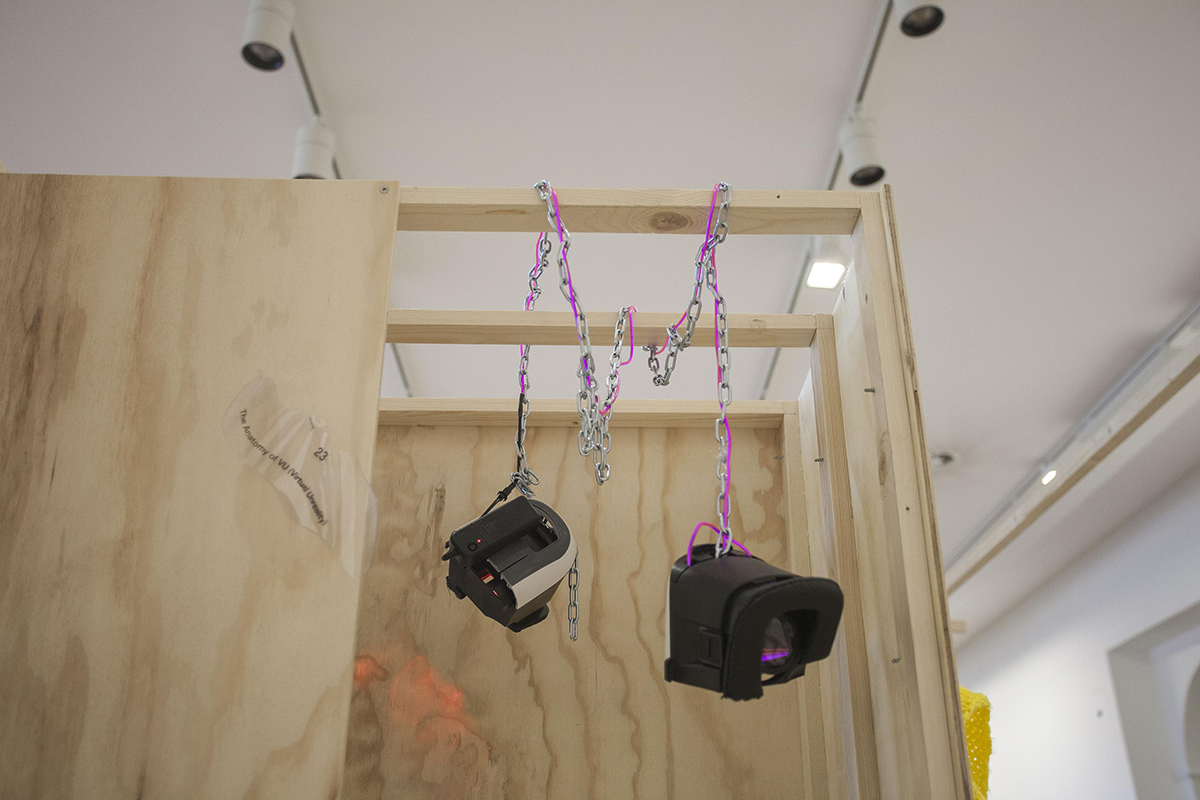
Photo documentation of the project at the Uncut Festival, Stedelijk Museum, 2018

In this project, Kirill explores the aspects of perception in virtual reality. The project began when Kirill came across an article about a case of harassment in VR. To his surprise, he learned that it was picked up by gaming communities on 4chan and YouTube, which dismissed the claims of a harassment survivor boldly. He then engaged in research on the topic, exploring the aspects of body perception in the medium. This research concluded in the video work, for which he wrote a short text annotation from the position of the abstract group of “Virtual Reality Emotion and Feeling Deniers”.
What if … we are harassed or hurt in virtual reality?
Can we really feel what happens in virtual reality? Let’s just keep this real. The truth is that virtual reality isn’t real. Virtual reality is at most an interpretation of the physical world in which feelings are only an imitation and don’t conform to any definitions found in a dictionary such as:
1. An emotion or emotional perception or attitude / Dictionary.com
2. Appreciative or responsive awareness or recognition experience / Merriam-webster Dictionary
3. The capacity to experience the sense of touch / Oxford Dictionary
So how can something that doesn’t take place in the physical world stay real? The answer is: it cannot. If it doesn’t thrive on actual substantive interactions from the real world, it doesn’t actually happen. And how can you feel or experience something that doesn’t happen?
Text by Virtual Reality Emotion and Feeling Deniers.
THE DAILY CLIMATE SHOW, 2019Can we really feel what happens in virtual reality? Let’s just keep this real. The truth is that virtual reality isn’t real. Virtual reality is at most an interpretation of the physical world in which feelings are only an imitation and don’t conform to any definitions found in a dictionary such as:
1. An emotion or emotional perception or attitude / Dictionary.com
2. Appreciative or responsive awareness or recognition experience / Merriam-webster Dictionary
3. The capacity to experience the sense of touch / Oxford Dictionary
So how can something that doesn’t take place in the physical world stay real? The answer is: it cannot. If it doesn’t thrive on actual substantive interactions from the real world, it doesn’t actually happen. And how can you feel or experience something that doesn’t happen?
Text by Virtual Reality Emotion and Feeling Deniers.
VR Installation, Research Project


 Screenshots of the virtual environment
Screenshots of the virtual environment
The Daily Climate Show is a virtual reality show set in the speculative
future. It takes place on one of the oceanic islands affected by global
climate change. The characters of the show are scientists, climate
activists, politicians, climate change deniers, and citizens of the
earth. In the hypothesized future many things are the same. The sole
difference is – the world is rapidly changing, and now politicians and
major political powers are condemning each other for the prevailing
situation, while the world as we know it is breaking apart.
The Daily Climate Show is a speculative redesign of chapter 2 of The IPCC Report of 2018, a yearly scientific report on climate change. The aim of the project is to reformulate the complex scientific formulation of the report into a clear visual language. The Daily Climate Change started with an idea to address the problem of the difficulty of climate change perception. For many people, the urgency of climate change measures and actions is drastically hard to accept and act on due to its complexity and indirection. Kirill addressed this problem by embodying his three-dimensional vision in the form of an interactive VR installation, encouraging people to face the realities of the report and its practical points.
The Daily Climate Show is a speculative redesign of chapter 2 of The IPCC Report of 2018, a yearly scientific report on climate change. The aim of the project is to reformulate the complex scientific formulation of the report into a clear visual language. The Daily Climate Change started with an idea to address the problem of the difficulty of climate change perception. For many people, the urgency of climate change measures and actions is drastically hard to accept and act on due to its complexity and indirection. Kirill addressed this problem by embodying his three-dimensional vision in the form of an interactive VR installation, encouraging people to face the realities of the report and its practical points.
Deity Naturing

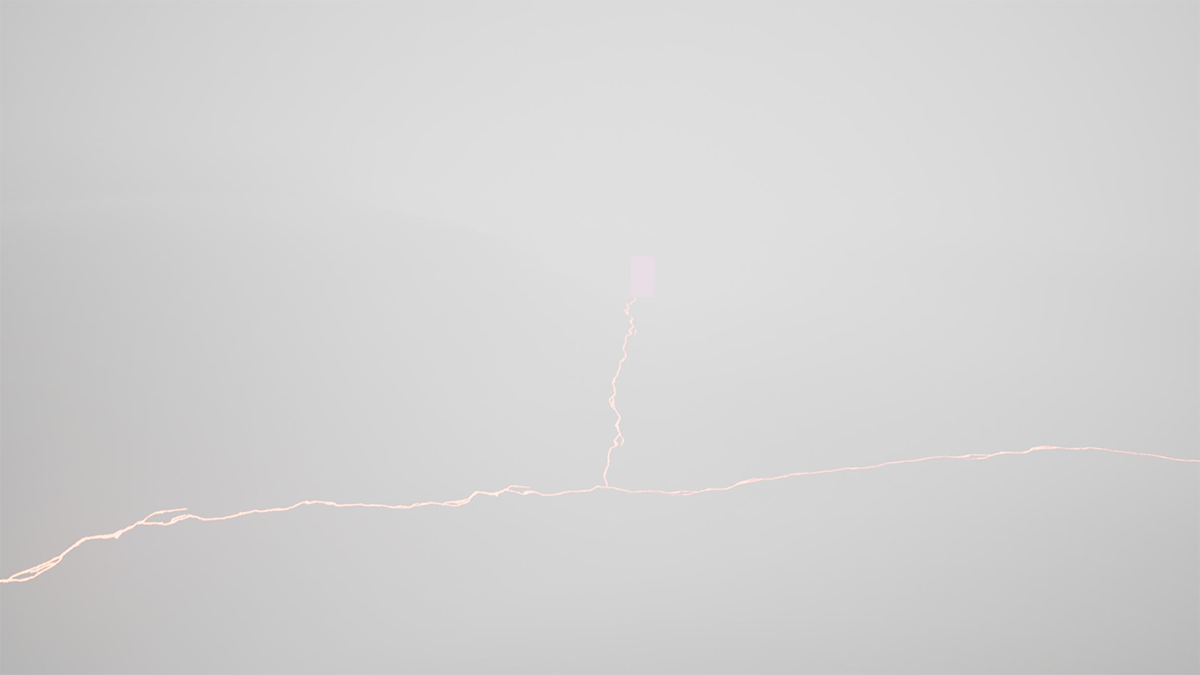
Deity Naturing is a project focused on the consequences of DNA Editing
on the peoplekind, led by a graphic designer and a visual artist Kirill Zakomoldin and Idan Grady, a futurist creator and a fashion designer.
We developed three different sites that correlate to various aspects of DNA editing. The concept of MDNA is a way to self reflect on the developments in these categories from a modified perspective.
There are three aspects of the realization of the project that we are currently working on:
As a part of the body as a site, Idan took the military uniform that he wore during the war as the base for physical evolution. By editing the “DNA” of the clothing through the means of a zero-waste self-invented technique. He is deforming the shape of the uniform until it can not be recognized anymore.
The AR is the representation of the link as a site. It is the interface of the ‘body as a site’. How does the relationship change between the human and nonhuman in the environment, when we edit the DNA of the ‘body as a site’—this the question that we ask ourselves in this part of the project.
The virtual environment is the representation of the mind as a site. It is a way to embody our vision in immersive design.
Living in an exciting time when the understanding of our interconnectivity is clearer than ever before... we believe in the urgency of this project. We are here to raise awareness by making people consider the implications of DNA editing.
![]()
We developed three different sites that correlate to various aspects of DNA editing. The concept of MDNA is a way to self reflect on the developments in these categories from a modified perspective.
There are three aspects of the realization of the project that we are currently working on:
As a part of the body as a site, Idan took the military uniform that he wore during the war as the base for physical evolution. By editing the “DNA” of the clothing through the means of a zero-waste self-invented technique. He is deforming the shape of the uniform until it can not be recognized anymore.
The AR is the representation of the link as a site. It is the interface of the ‘body as a site’. How does the relationship change between the human and nonhuman in the environment, when we edit the DNA of the ‘body as a site’—this the question that we ask ourselves in this part of the project.
The virtual environment is the representation of the mind as a site. It is a way to embody our vision in immersive design.
Living in an exciting time when the understanding of our interconnectivity is clearer than ever before... we believe in the urgency of this project. We are here to raise awareness by making people consider the implications of DNA editing.
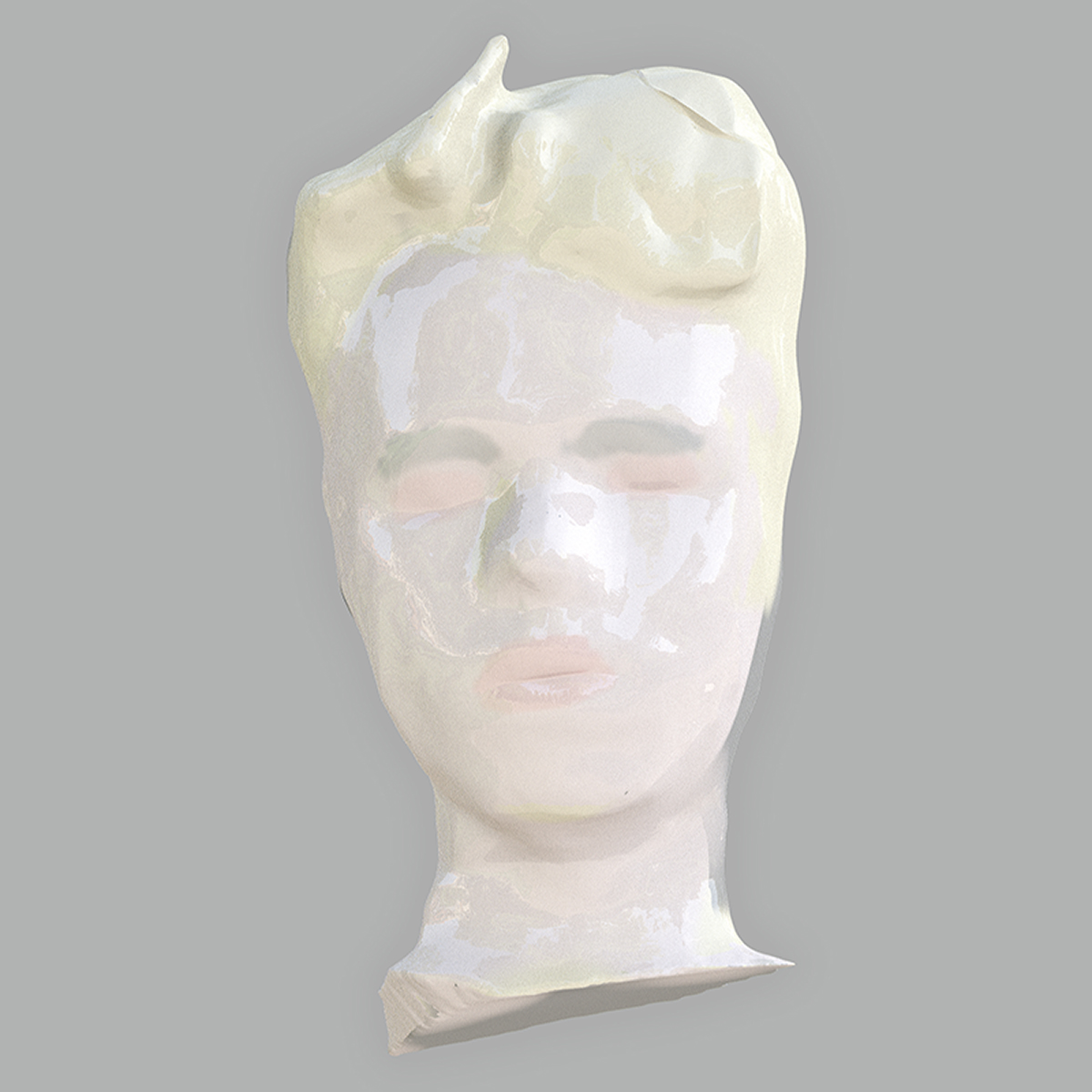
Kirill Zakomoldin is a Dutch-Russian Artist based in Amsterdam. He is currently working as an independent designer, artist, and curator on self-initiated and commissioned projects. Kirill is a multidisciplinary artist, combining analog and digital mediums in his work. His projects take roots in Kirill’s position as an international designer and a frequent traveler, allowing him to study and experience often diverse perspectives. Those notably different outlooks allow Kirill to connect elements in unique ways while embracing his view on the subject. Kirill’s work and interests span over a wide range of topics. They include various critical social-political issues that are often given form through high-tech experiments and multimedia platforms questioning on
and offline realities.
Kirill has worked and collaborated on projects with the Stedelijk Museum, Het Nieuwe Instituut, Sheremetyevo International Airport, ARTIS Zoo, Museum of Modern Art Moscow, The Pushkin Museum of Fine Arts, Gerrit Rietveld Academie, The Werker Collective, The Department of Culture of Moscow.
Kirill has worked and collaborated on projects with the Stedelijk Museum, Het Nieuwe Instituut, Sheremetyevo International Airport, ARTIS Zoo, Museum of Modern Art Moscow, The Pushkin Museum of Fine Arts, Gerrit Rietveld Academie, The Werker Collective, The Department of Culture of Moscow.
Umber
Majeed
IN THE NAME OF HYPERSURFACE OF THE PRESENT
Solo Exhibition, 2018, kinetic sculpture, vinyl print, 5 works on paper, and multi-channel video installation

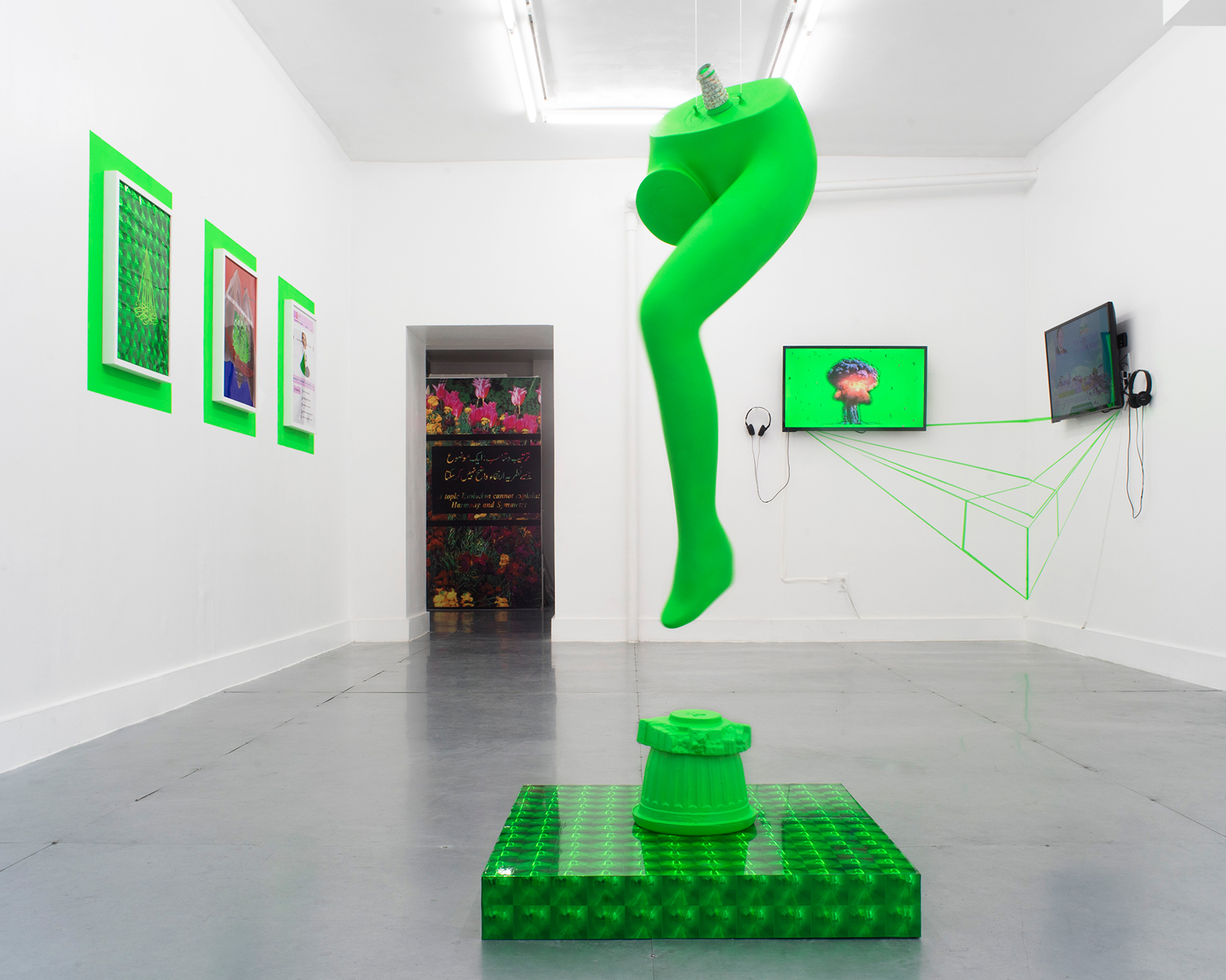
In the Name of Hypersurface of the Present_excerpt
Through state and family archives, Majeed speculates on a feminist re-historicization of Pakistan as the first “Muslim nuclear state”. The exhibition outlines the artist’s inquiry into nuclear nationalism and its implications on the citizen-body. Through a multitude of sources ranging from familial archival material and South Asian digital kitsch, there is an unpacking of a dispersed, porous homeland. Remnants of the female body and flora within the sculpture and works on paper outline women as the vessels used to perpetuate state ideological notions of love, science, and nature. The intention is to make the subjectivities visible outside of the patriarchal imaginary of the Islamic Republic.
All elements within the installation emanate from the multi-chapter animation series, Hypersurface of the Present and Atomi Daamaki Wali Mohabbat (The Atomically Explosive Love). The videos chronicle the life of a recently destroyed state-military monument, Chaghi Monument Hill. The monument was a site for male-dominated celebrations of the national holiday “Youm-e-Takbeer” (The Day of God’s Greatness). This holiday commemorates the successful underground nuclear tests done in 1998. The green screen interface is used as a narrative tool, projection space, and mode of spirituality. The green light’s purpose is to enlighten and disseminate Islamic orientalism, Pakistani nationalism, militancy, and digital populism. A fictional author of poetry and science is a narrator which is a vessel of the patriarchal state structure.
The vivid imagery and language seeks to subvert the rhetorical tool “In the Name of God”, which was initially used to drive the Pakistani nuclear project. Through disjointed visuals and pixelation, Chaghi becomes a motif, location, and historical moment morphing within religion-state logic, digital space, and the human body.
Brooklyn Rail Review by Julie Nelson
All elements within the installation emanate from the multi-chapter animation series, Hypersurface of the Present and Atomi Daamaki Wali Mohabbat (The Atomically Explosive Love). The videos chronicle the life of a recently destroyed state-military monument, Chaghi Monument Hill. The monument was a site for male-dominated celebrations of the national holiday “Youm-e-Takbeer” (The Day of God’s Greatness). This holiday commemorates the successful underground nuclear tests done in 1998. The green screen interface is used as a narrative tool, projection space, and mode of spirituality. The green light’s purpose is to enlighten and disseminate Islamic orientalism, Pakistani nationalism, militancy, and digital populism. A fictional author of poetry and science is a narrator which is a vessel of the patriarchal state structure.
The vivid imagery and language seeks to subvert the rhetorical tool “In the Name of God”, which was initially used to drive the Pakistani nuclear project. Through disjointed visuals and pixelation, Chaghi becomes a motif, location, and historical moment morphing within religion-state logic, digital space, and the human body.
Brooklyn Rail Review by Julie Nelson
TRANS-PAKISTAN ZINDABAD (LONG LIVE TRANS-PAKISTAN)
2019, Research project- animation, lecture performance, VR installation
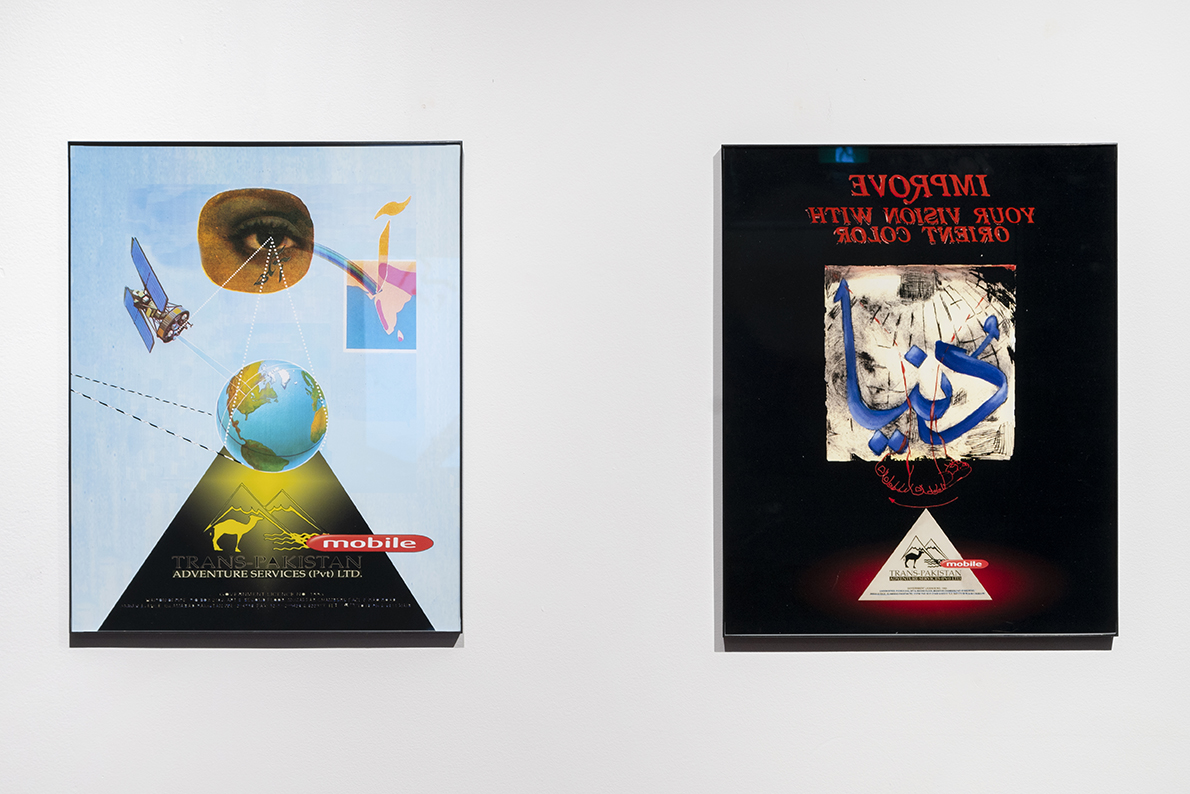
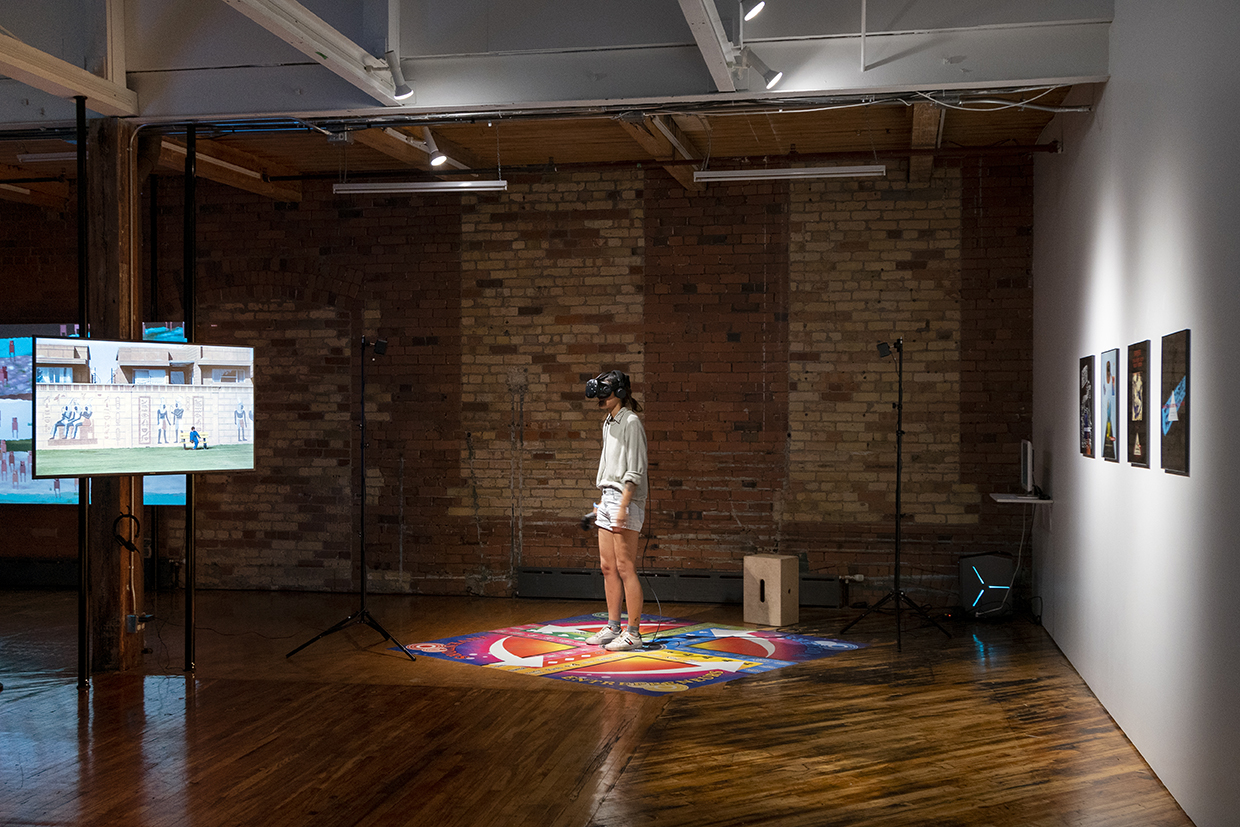
Photo Documentation at Trinity Square Video, Canada

Trans-Pakistan Zindabad (Long Live Trans-Pakistan)-animation excerpt
Trans-Pakistan Zindabad (Long Live Trans-Pakistan) is a digital project (animation, lecture performance, VR installation) that outlines the intersections of military- state surveillance, global capital networks, and grandeur urban internationalism, of a corrupt housing corporation, Bahria Town, based in Pakistan. This global enterprise houses miniature and large scale reproductions of a Sphinx, Eiffel Tower, and Taj Mahal, etc is investigated through the facade of a revitalized tourism company, “Trans-Pakistan”, once owned and operated by the artist’s maternal uncle. Trans-Pakistan closed down in the early 2000s due to the implications of the War on Terror in Pakistan; in the last 20 years there has been an influx of a return migration proving diaspora to be the gentrifiers and an important economy within the homeland. The tourism company and the concept of leisure is an intentional method to subversively analyze gentrification, community, and images of world-building.
The multilayered narrative and visual material overlap tourism, familial archives, metaphors of the body, and proposals of technological piracy as urban design. The project speculates within augmented and virtual technologies to alternative forms of occupation in urban imaginaries of surveilled simulacra; contesting the corporate imaginary entering the home.
Link to Digital Earth Magazine Interview with Misal Adnan Yildiz
The multilayered narrative and visual material overlap tourism, familial archives, metaphors of the body, and proposals of technological piracy as urban design. The project speculates within augmented and virtual technologies to alternative forms of occupation in urban imaginaries of surveilled simulacra; contesting the corporate imaginary entering the home.
Link to Digital Earth Magazine Interview with Misal Adnan Yildiz
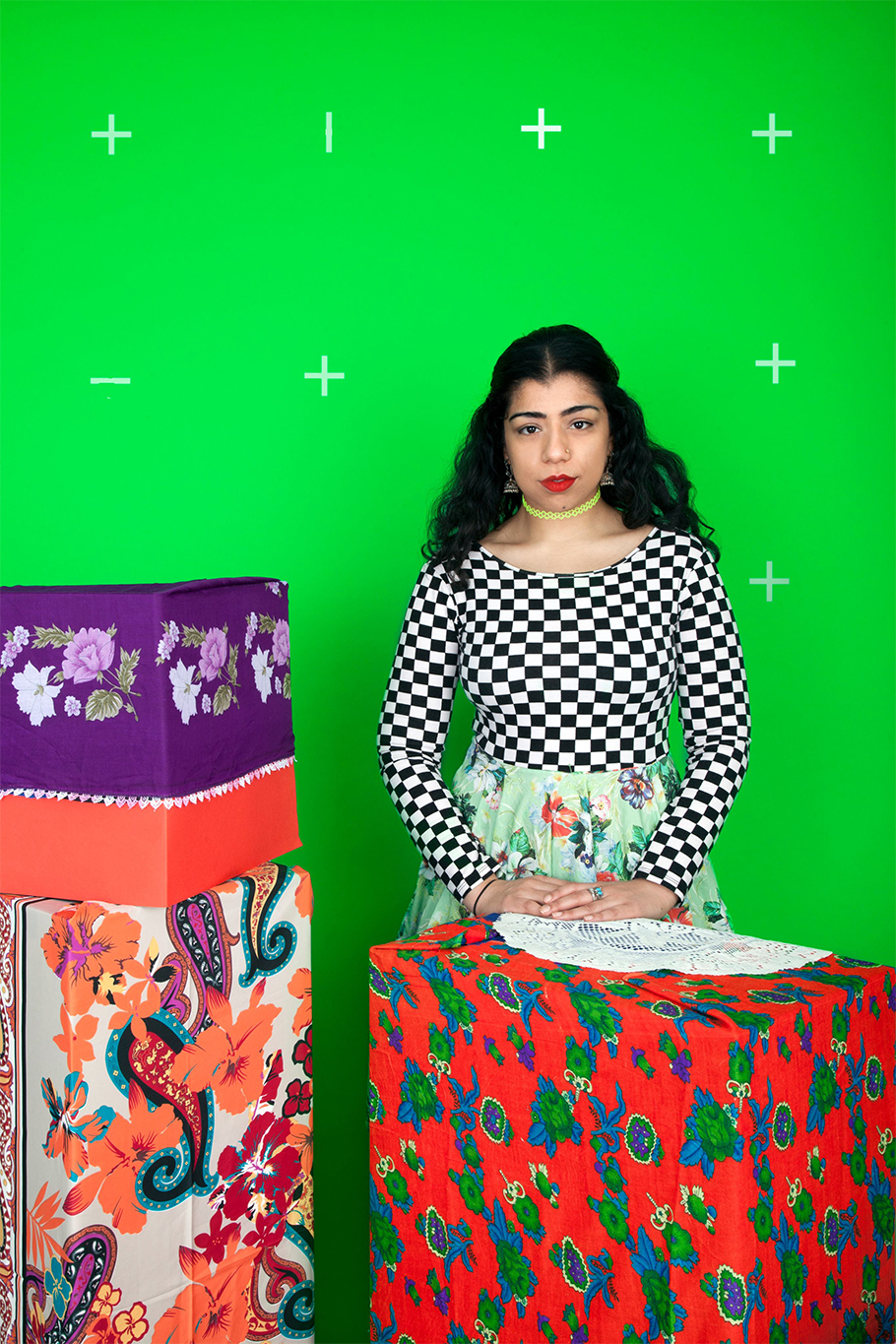
Umber Majeed is a multidisciplinary visual artist. Her work engages with familial archives to explore specifics of Pakistani state, urban, and digital infrastructure through a feminist lens. Majeed has shown in venues across Pakistan, North America, and Europe. She participated in Ashkal Alwan’s Home Workspace Program 2016-17 in Beirut, and is the recipient of fellowships including Refiguring Feminist Futures – Web Residency, Akademie Schloss Solitude & ZKM, Germany (2018), The Digital Earth, Hivos, the Netherlands (2018-19), and Pioneer Works, Technology Residency (2020). Majeed lives and works in New York, USA and Lahore, Pakistan.
Dachal
Choi





Born through the fictional birthdays (#Rent to Own), Dachal Choi is seeking for a home (#New Yorks) and searching for a belief (#Blue Christmas). While doubts on liberalism and individualism arise with contemporary science and economics, her recent interest lies in the degree of human abstraction (#The Spicy Statement, #Untitled (after Eutheria)) oscillating between data and identity, anonymous and personal, pattern and life, and effect and meaning. She is currently working on #Carve and Crave questioning the autonomy and the ownership of humans under surveillance capitalism where human future is sold for a certainty market.
Her work has been presented at Times Museum, Berlin, Germany, Para Site, Hong Kong, Triangle Arts Association, New York, NY, Socrates Sculpture Park, New York, NY, Franklin Street Works, Stamford, CT, Hyundai Motor Studio, Beijing, China, Seoul Art Space Seogyo, Korea among others. She is a recipient of Artist Community Engagement Grant from Rema Hort Mann Foundation, Individual Grant from Asian Cultural Council, George R. Bunker Award and Lipson Allen Scholarship Award. She holds a B.F.A from School of Visual Arts and an M.F.A. from Yale University.
Her work has been presented at Times Museum, Berlin, Germany, Para Site, Hong Kong, Triangle Arts Association, New York, NY, Socrates Sculpture Park, New York, NY, Franklin Street Works, Stamford, CT, Hyundai Motor Studio, Beijing, China, Seoul Art Space Seogyo, Korea among others. She is a recipient of Artist Community Engagement Grant from Rema Hort Mann Foundation, Individual Grant from Asian Cultural Council, George R. Bunker Award and Lipson Allen Scholarship Award. She holds a B.F.A from School of Visual Arts and an M.F.A. from Yale University.
Liz
Phillips
Relative Motion
Anchorage (Short Clip) 2001Shaded Bandwidths
Sunspots Sounding Neuberger Museum 1981
Channel 5, Liz Phillips, Robert Kovich, Nam June Paik
Queens-based artist Liz Phillips has been making interactive
multi-media installations for the past 50 years, which combine audio and visual
forms with new technologies to create an interactive experience. Born in New
Jersey in 1951, Phillips received a B.A. from Bennington College in 1973. In
1981, she co-founded Parabola Arts Foundation, a not-for-profit organization
created by five media artists from varied disciplines (music, sculpture, film,
video) which provides funding for art-related projects. In 1987 Phillips
received a Guggenheim Fellowship, a 2019 NYFA fellowship, NYSCA Commissions (2007,
2004, 2000,1988,1986,1984) NEA Grants and Commissions (1987,1984, 1985,1983, 1981,1976).
Phillips is a pioneer of interactive sound installation. These works have been exhibited at numerous art museums,
alternative spaces, festivals, and public spaces. These include multiple
installations at the Queens Museum, The Whitney Museum of American Art, Lincoln
Center, The Milwaukee Art Museum, the Spoleto Festival USA, the Walker Art
Museum, Ars Electronica, The Kitchen, and Creative Time. She has also shown her
work at Jacob’s Pillow, The Stedelijk Museum, Akademie der Künste, Berlin, Gemeentemuseum Den Haag, Galerie René Block, Fredrieke Taylor
Gallery, White Box, The Jewish Museum, The San Francisco Museum of Modern Art,
Capp Street Project. Phillips has also collaborated with the Merce
Cunningham Dance Company and Nam June Paik, Simone Forti, Alison Knowles,
Yoshimasa Wada, Heidi Howard, Earl Howard, Cynthia Koppe and Nitin Mukul. Her
work was presented in unusual public locations by Bronx Frontier Development
Corporation (using a wind turbine), the Cleveland Orchestra, IBM Japan, and the
World Financial Center.
Effy Xiaofu
Wang
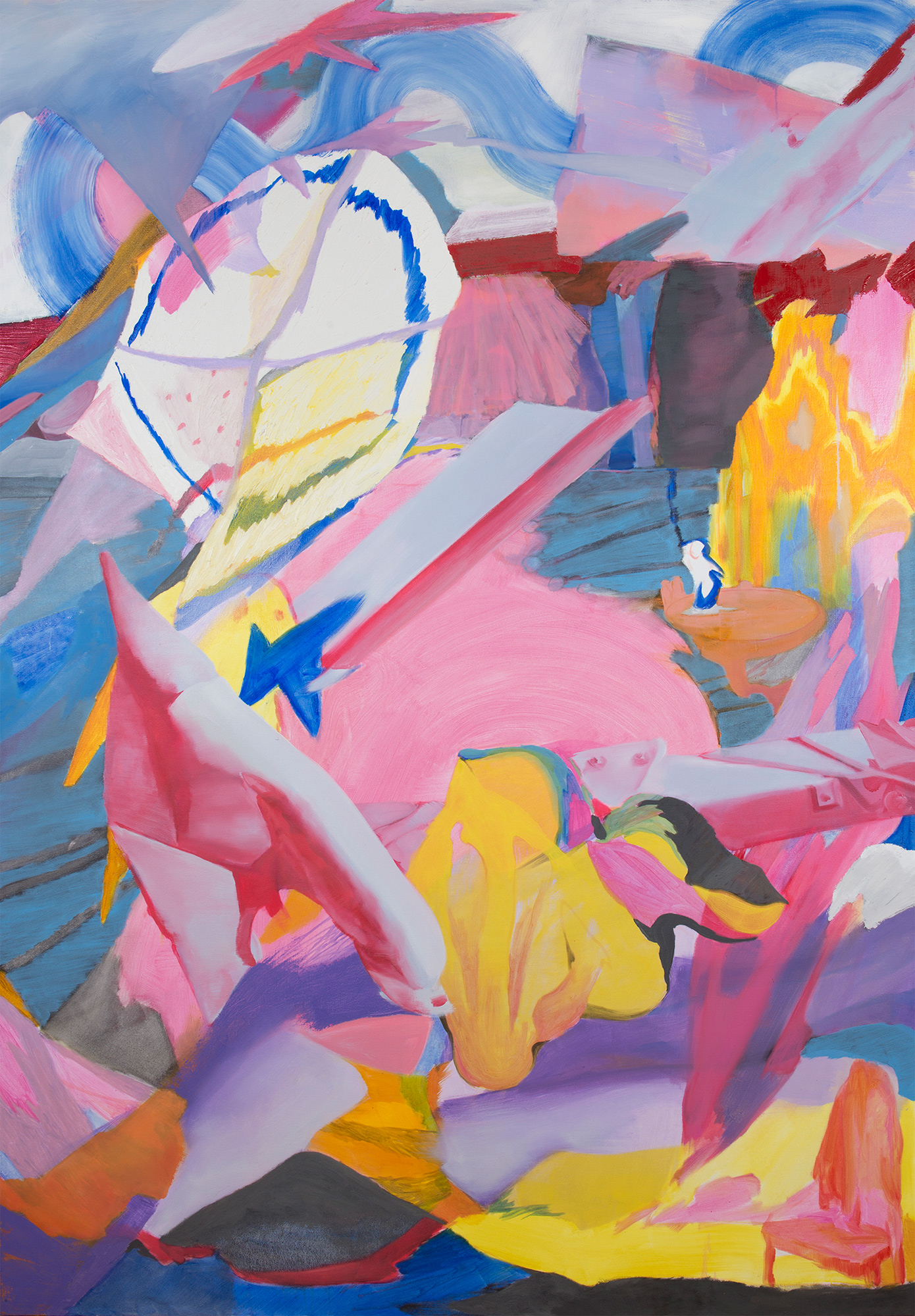



Xiaofu Wang, born in Wuhan, China, works and lives in New York and Beijing, and now based in Shanghai. She received her BFA from China Central Academy of Fine Art in Beijing in 2013 and earned her MFA at Maryland Institute College of Art in the LeRoy E Hoffberger School of Painting in 2017. Xiaofu was a 2018-19 fellow for the fully-funded fellowship Shandaken Paint School in New York City and a nominee for the Rema Hort Mann emerging Artist Grant in 2018. She has shown her work in New York, Baltimore, Colorado, Beijing and Wuhan. Her work was featured in 优良better, ArtMaze Magazine, Magazine Parcours. She has attained awarded residencies at Elsewhere Studio Residency, Art Farm Nebraska. and she is the fellow of 2019 Saas-Fee Summer Institute of Art in Berlin. Xiaofu’s work create an environment bordering abstraction, where recognizable elements become handholds leading deeper into a dream. An observer staggers between the forms themselves, and their deceptive proclamations, as if meaning and appearance were strangers to each other. Bright and cheerful hues seem to hold threatening positions; a jagged shape could be the sign of a celebration or an explosion. It is as if we are seeing life-forms and environments blurred and morphed in time.
Heidi
Howard
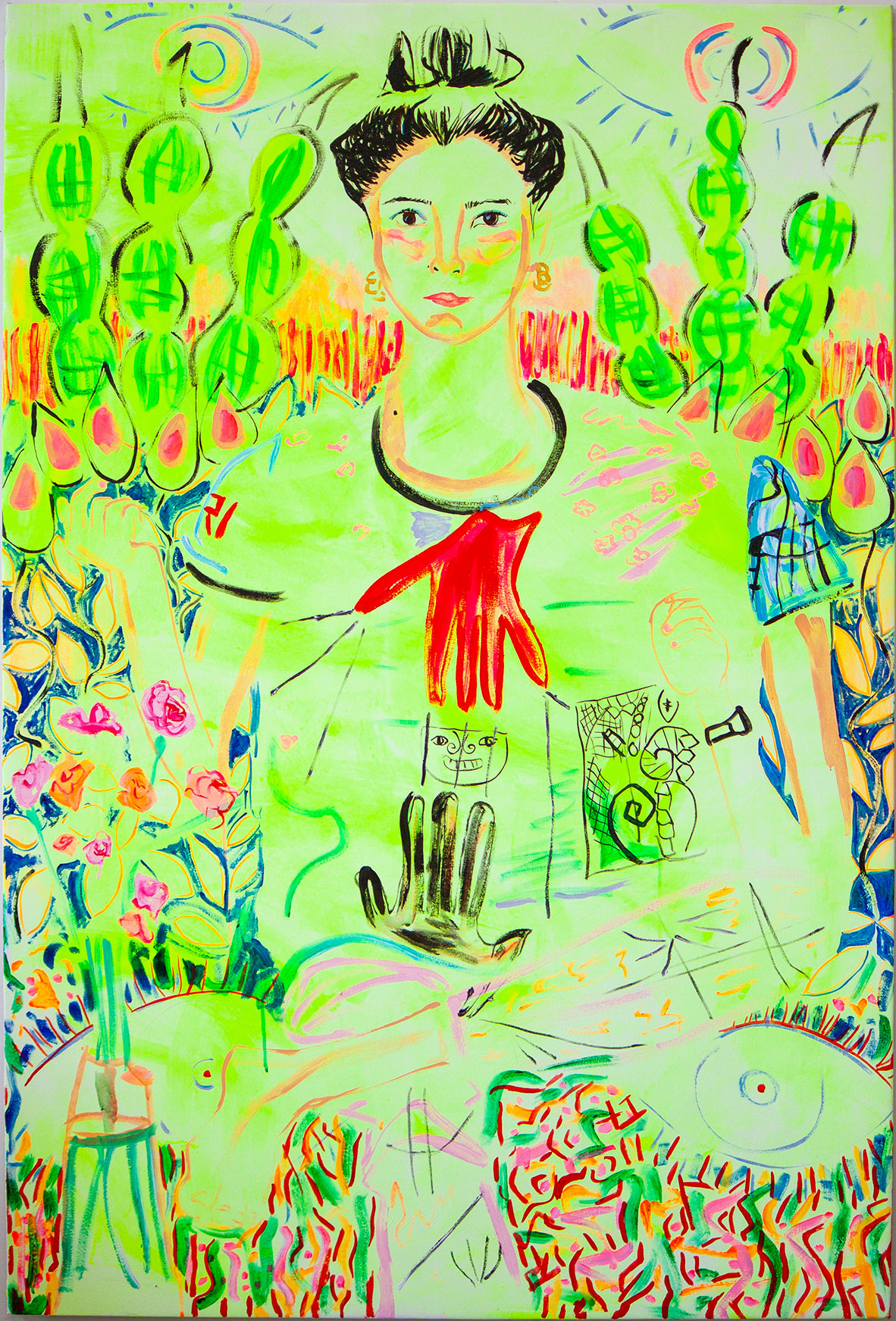
Florencia Escudero
60 x 40 inches, acrylic on canvas, 2019

Kaitlin Zorah Mcdonough
50 x 36 inches, oil on canvas, 2016

Relative Fields in Motion
Heidi Howard was born in New York City in 1986. She paints portraits to
expand our conceptions of the individual. Howard has exhibited at
Nancy Margolis Gallery, New York, NY (2017, 2016, 2015), Gaa Gallery,
Provincetown, MA and Cologne, Germany (2019, 2018, 2017), W139, Amsterdam, the Netherlands (2018), The Hunterdon Museum
of Art, Clinton, NJ (2017), James Cohan Gallery, New York, NY (2016) and many
more. She has been an artist in residence at the Rauschenberg Residency (2020), Palazzo
Monti (2018), Byrdcliffe (2014) and the Vermont Studio Center (2011). She
received her BA from Sarah Lawrence College and her MFA from Columbia
University. Her collaborative installation with her mother, the interactive
sound sculptor Liz Phillips, “Relative Fields in a Garden”, is on view at the
Queens Museum until February 2020.
Cover Images
Jules Gimbrone, 36 x 29 inches, acrylic on canvas, 2019
Judy Pfaff, acrylic on canvas, 55 x 42 inches, 2019
Ben Hagari, 55 x 66 inches, oil on canvas, 2014
Cover Images
Jules Gimbrone, 36 x 29 inches, acrylic on canvas, 2019
Judy Pfaff, acrylic on canvas, 55 x 42 inches, 2019
Ben Hagari, 55 x 66 inches, oil on canvas, 2014
Kit Yi
Wong
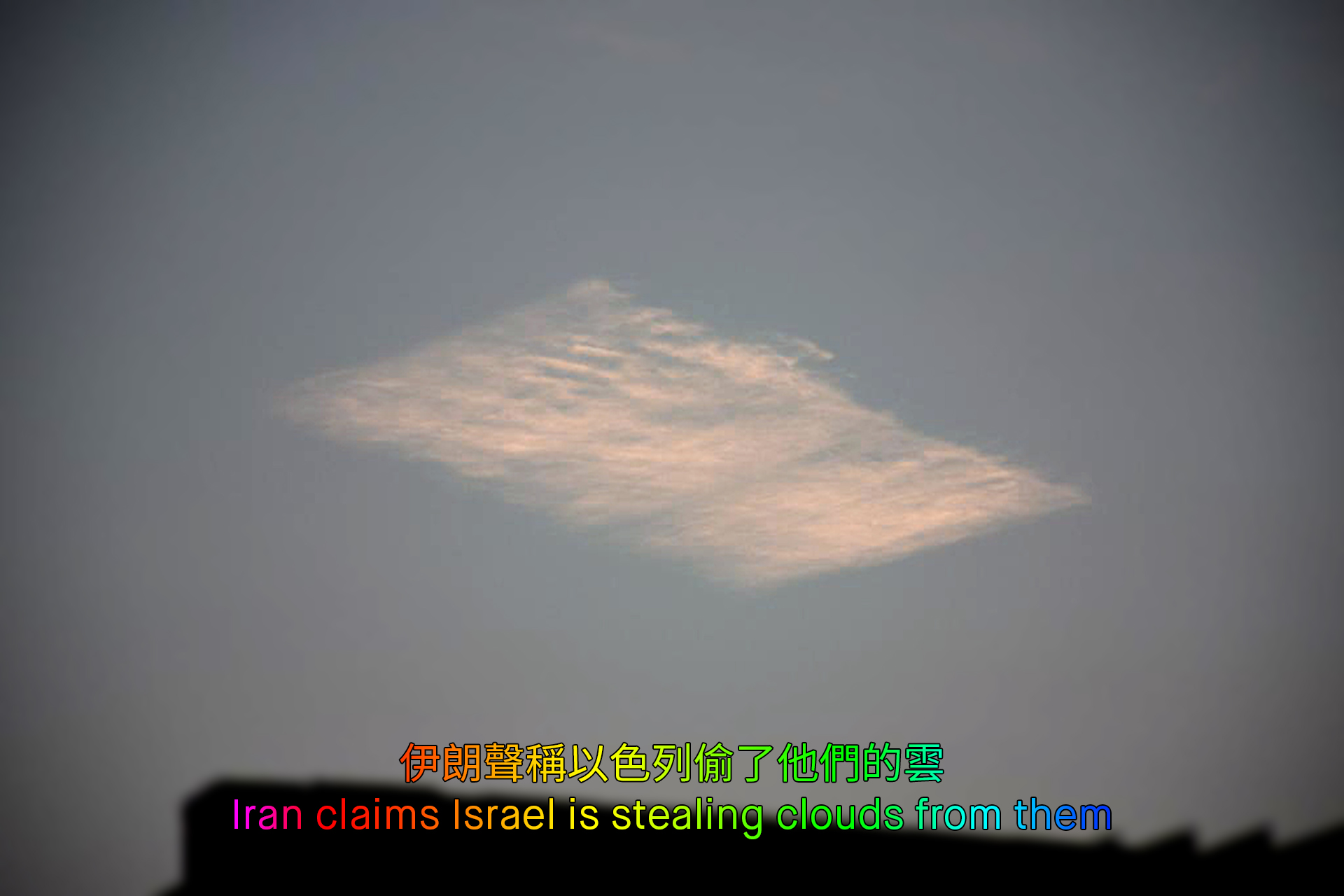
Wong Kit Yi, Hong Kong Weather Modification Office (Square cloud), 2019. Courtesy of the artist | 黃潔宜,《香港人工影響天氣辦公室(方形雲)》2019. 圖片由藝術家提供
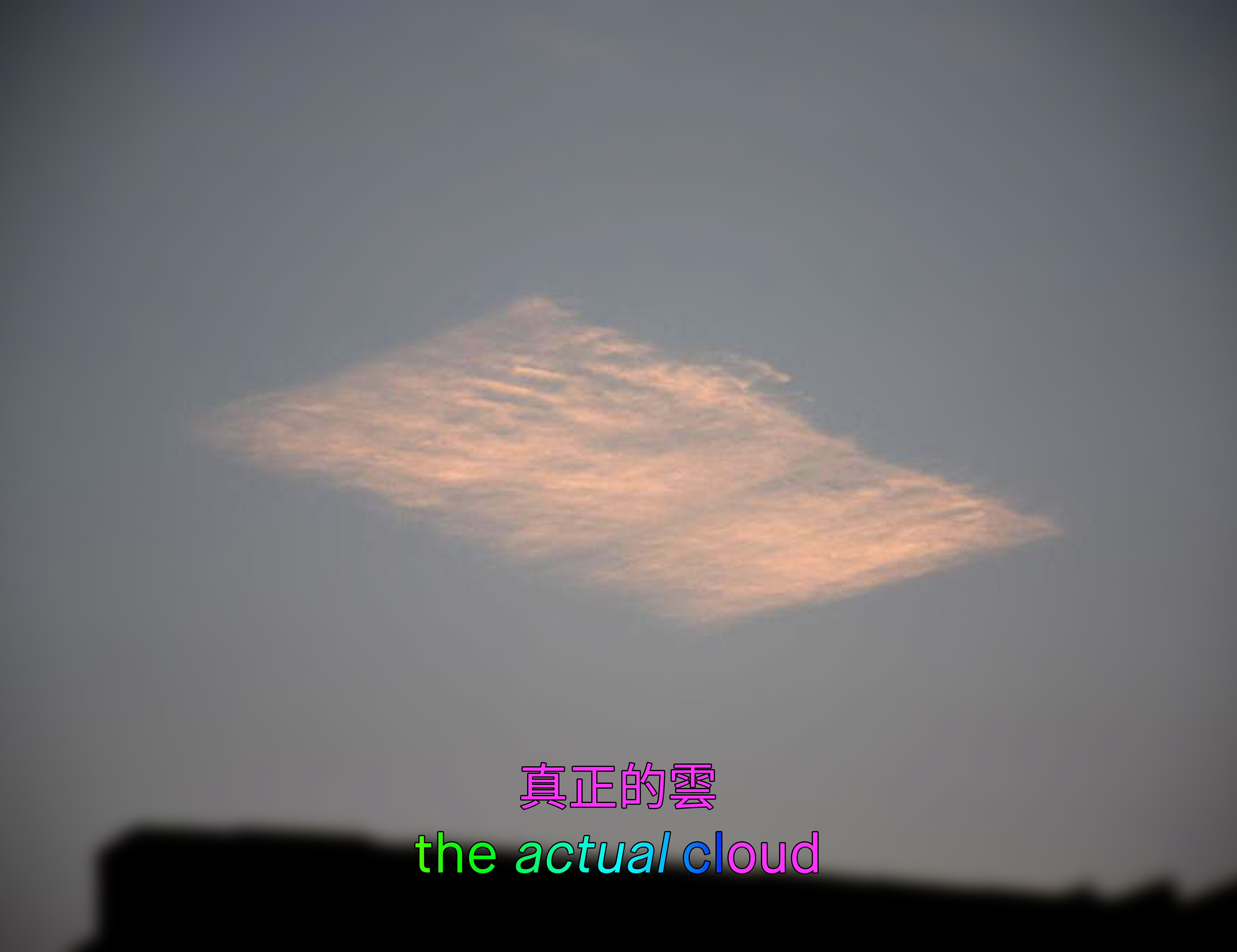
Wong Kit Yi (b. Hong Kong) lives and works between Hong Kong and New York. Her artistic interests center on odd scientific findings and the dysfunctional marriage between science and pseudoscience. She researches genetics, DNA technology, mythology, Japanese manga, meteorological interventions, models of ownership/leasing, and the biology of aging and immortality. She wonders which is harder to modify—weather or people.
Wong’s solo shows include Magic Wands, Batons and DNA Splicers (Art Basel Hong Kong, Hong Kong, 2018), and Futures, Again (P!, New York, 2017). Her works have been included in group projects at the Latvian Centre for Contemporary Art (Riga), Para Site (Hong Kong), and the Queens Museum (New York). Reviews have appeared in such publications as the New York Times, Art in America, Contemporary Art Daily, e-flux conversations, ArtReview, ARTnews, Asian Art News, The Art Newspaper, ArtAsiaPacific, China Daily, LEAP and Modern Painters et cetera. Wong received her MFA from Yale University in 2012. She speaks native Cantonese, fluent English, and hysterical Mandarin.
Wong’s solo shows include Magic Wands, Batons and DNA Splicers (Art Basel Hong Kong, Hong Kong, 2018), and Futures, Again (P!, New York, 2017). Her works have been included in group projects at the Latvian Centre for Contemporary Art (Riga), Para Site (Hong Kong), and the Queens Museum (New York). Reviews have appeared in such publications as the New York Times, Art in America, Contemporary Art Daily, e-flux conversations, ArtReview, ARTnews, Asian Art News, The Art Newspaper, ArtAsiaPacific, China Daily, LEAP and Modern Painters et cetera. Wong received her MFA from Yale University in 2012. She speaks native Cantonese, fluent English, and hysterical Mandarin.
Hong Kong Weather Modification Office (Square Cloud)
Karaoke Lecture Performance
Karaoke Lecture Performance
Wong Kit Yi will present a lecture performance as part of her on-going project about human interventions on the weather and natural resources and the attempts to claim dominance over meteorological phenomena. Wong will employ historical anecdotes, cross-cultural studies, witchcraft and magic, and the most current crises that face Hong Kong, as well as screen a new karaoke music video, a recurrent form in her practice on the subject.
"But what does it really mean to control or modify weather within or beyond political borders? Clouds, like people, can float across borders—perhaps much more easily than people. We can’t control the travel of a cloud by not issuing it a visa. It's definitely not hyperbolic to say that the movement of people across borders is a pressing political concern, both in Hong Kong, the United States, Europe, and elsewhere. The concept of the "nation-state" is bounded—it begins and it ends. Its borders might shift over time, but out there is a line—both social and physical— that creates an ‘us’ and a 'them'…"
—Wong Kit Yi
Claire
Fleury



Claire Fleury, originally from Amsterdam, is a Brooklyn based Costume and Fashion Designer since 2014. She is perpetually looking for a perfect balance between elegance and wit, funkiness and comfortability, originality and tradition. By using vibrant textiles and easy going but structural silhouettes she creates an array of colorful original garments that are meant to adorn and celebrate the human body in all its glory.
On September 5 2019, her latest collection called HELLO I LIVE HERE was featured at the DapperQ annual queer fashion show at the Brooklyn Museum. HELLO I LIVE HERE is a collection of colorful extravaganza—an ode to planet earth and the diversity of creatures that inhabit it.
The images are showing the backstage before the actual show; that brief window of time filled with anticipation, expectation, nervousness, exhilaration and comradeship.
![]()
Credits
All designs by Claire Fleury, Photography by Alesia Exum
Models—Munroe Lilly, Seana Steele, Alonzo Cruz Bourne,
Rakia Seaborn, Mojo Disco, Shane O’Neill
Hair—Jonathan Spence
Make Up—Strawberry
Choreography—Larissa Velez-Jackson
Assistant—Thom Barranca
On September 5 2019, her latest collection called HELLO I LIVE HERE was featured at the DapperQ annual queer fashion show at the Brooklyn Museum. HELLO I LIVE HERE is a collection of colorful extravaganza—an ode to planet earth and the diversity of creatures that inhabit it.
The images are showing the backstage before the actual show; that brief window of time filled with anticipation, expectation, nervousness, exhilaration and comradeship.
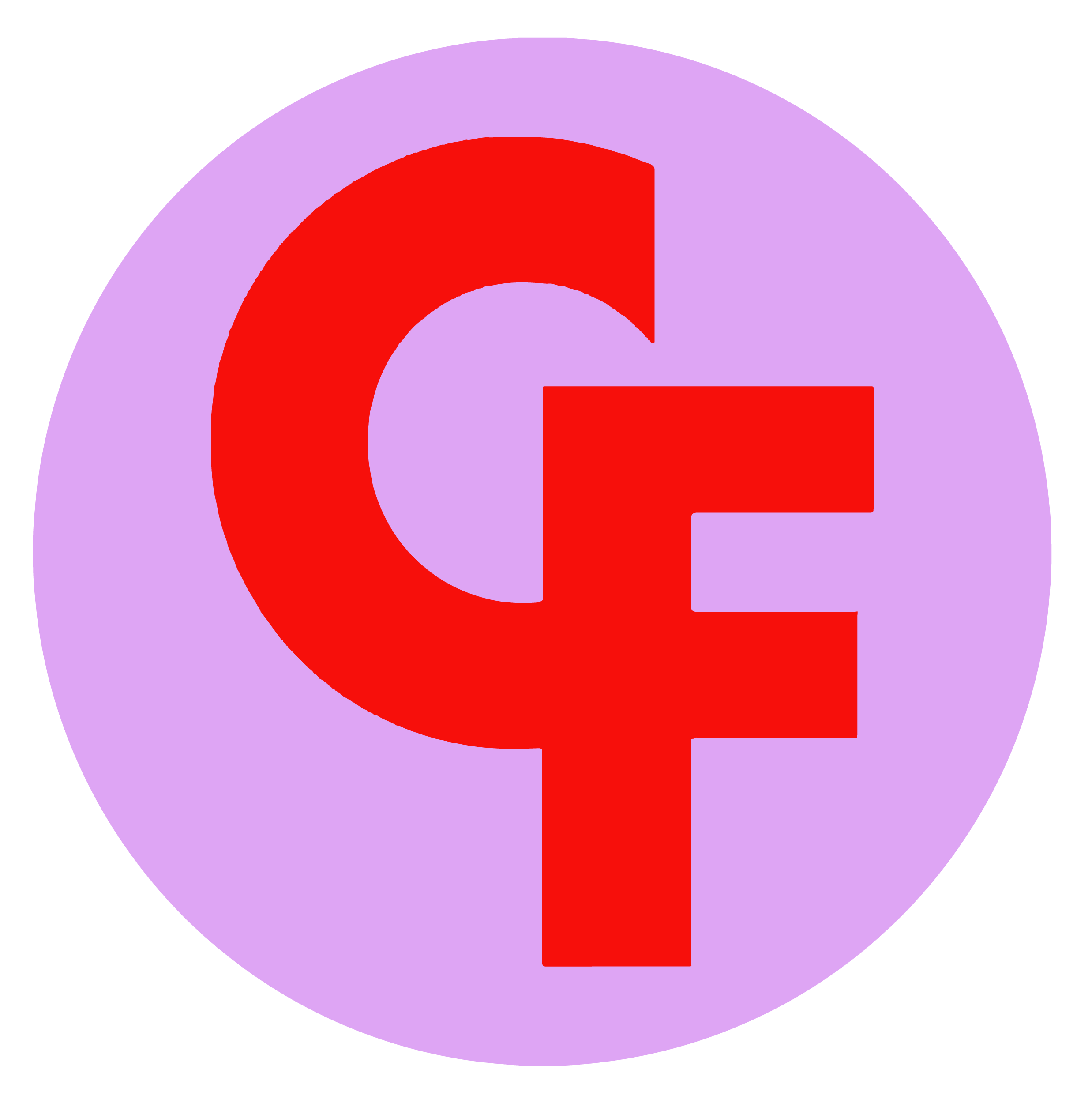
Credits
All designs by Claire Fleury, Photography by Alesia Exum
Models—Munroe Lilly, Seana Steele, Alonzo Cruz Bourne,
Rakia Seaborn, Mojo Disco, Shane O’Neill
Hair—Jonathan Spence
Make Up—Strawberry
Choreography—Larissa Velez-Jackson
Assistant—Thom Barranca
Keiken

Honey, I’m Data! at IMPAKT Festival 2018, Utrecht
Keiken in collaboration with Suzannah Pettigrew, AGF HYDRA,
George Jasper Stone and Nati Cerutti. Photo by Pieter Kers.

Digital Pleasures at MIRA Festival 2018, Barcelona
Keiken in collaboration with Nati Cerutti, Sophie Mars, AGF HYDRA,
George Jasper Stone, Suzannah Pettigrew and Zaiba Jabbar (Hervisions).
Silicone_Animism | The Birth of Mother Digital (Trimester 3)
at Hervision’s London Launch, Second Home (2017)
Keiken in collaboration George Jasper Stone, Nati Cerutti, Haruka Fukao and 700ok.
Keiken, meaning experience in Japanese, is a hybrid practice. Through an intersection of moving image, new-media installation, virtual/augmented reality and performative lectures they test-drive impending futures in the realms of the “phygital”; physical and digital. They reflect on the contemporary as though now is history, exploring the strands and interrelationships of our world; inequality, techno-capitalism, climate change, politics, popular culture and science.
When working collectively they become part of a fluid entity, an open-source ecosystem; with interchangeable roles, collaborators shape, challenge and transform projects. Taking elements back into their autonomous practices, this exchange nurtures both themselves and Keiken.
World-building is both their creative methodology and technique to grow collaboration. By merging multiple voices and mediums with collective critical thinking they create immersive experiences. Simulating new structures and ways of existing, they explore how societal introjection governs the way we feel, think and perceive.
Keiken were recently selected for Jerwood Arts new programme ‘Collaborate!’ and will be exhibiting a new film in collaboration with George Jasper Stone in Autumn 2019. They have toured their performative lecture “Honey, I’m Data!” at IMPAKT Festival (Utrecht), Hervisions at LUX Moving Image and Space Art + Technology (London). Recently they were also part of the panel ‘Technology and its Intersections’ at ICA (London). They have exhibited and curated at CTM and Transmediale’s Vorspiel festival (Berlin), MIRA Festival (Barcelona) and U Studio at Tate, St Ives. Keiken were the first artists to have their virtual reality film projected 25,000 light years into space by Jon Pettigrew for Planet3artnews.
When working collectively they become part of a fluid entity, an open-source ecosystem; with interchangeable roles, collaborators shape, challenge and transform projects. Taking elements back into their autonomous practices, this exchange nurtures both themselves and Keiken.
World-building is both their creative methodology and technique to grow collaboration. By merging multiple voices and mediums with collective critical thinking they create immersive experiences. Simulating new structures and ways of existing, they explore how societal introjection governs the way we feel, think and perceive.
Keiken were recently selected for Jerwood Arts new programme ‘Collaborate!’ and will be exhibiting a new film in collaboration with George Jasper Stone in Autumn 2019. They have toured their performative lecture “Honey, I’m Data!” at IMPAKT Festival (Utrecht), Hervisions at LUX Moving Image and Space Art + Technology (London). Recently they were also part of the panel ‘Technology and its Intersections’ at ICA (London). They have exhibited and curated at CTM and Transmediale’s Vorspiel festival (Berlin), MIRA Festival (Barcelona) and U Studio at Tate, St Ives. Keiken were the first artists to have their virtual reality film projected 25,000 light years into space by Jon Pettigrew for Planet3artnews.
Candystore
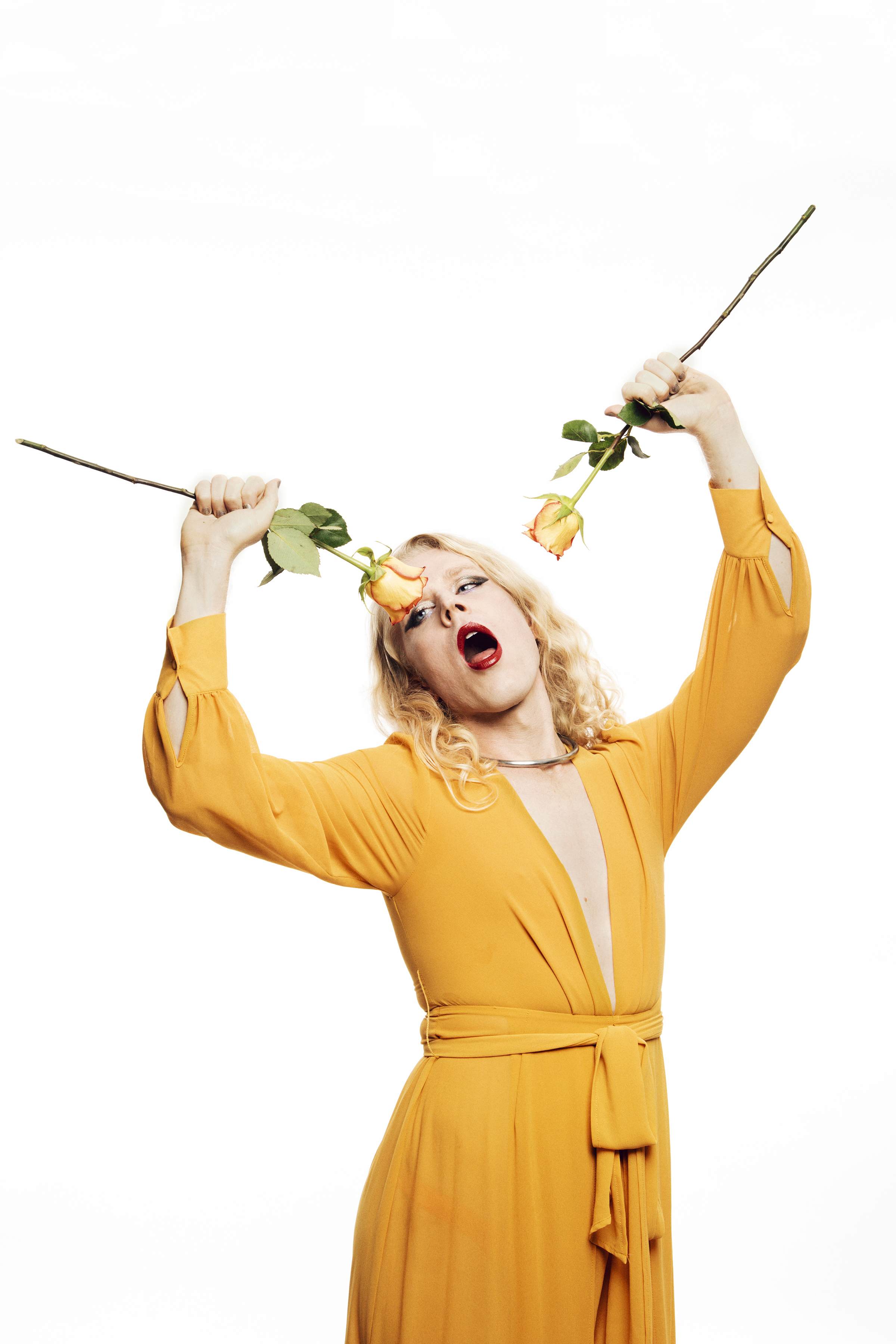
HAPPY POET
I am a poet
Of some kind
Sick in bed
With a chest cold
I got from my lover
And he got it in Venice
Along with a pair
Of velvet slippers for me
They are fuchsia
I have built my throne
With four pillows
The window is open
Because it is finally spring
I am a poet
Above all other things
Because I sense the world
In this v. annoying way
Scraping words together like grout
I deal with feelings
Feelings are true art
The textures we make of time
Feelings are not one’s capacity
To recall all
Of the marvelous things
Someone else once wrote
And daisy chain them to your poem
You sick pedant!
I am sick
In bed
A poet with a cold
In a pink satin robe
I think I grow tensions
Like flowers
In a wood where
Nobody goes
Today I read an article on CNN
About a rhino poacher
Killed by an elephant
And eaten by a pride of lions
In my eye, a twinkle
Sweet justice
But in my chest, cold despair
He had daughters
Who are left to deal
With a gruesome death
And the sordid details
Of their father’s life as part of a rhino horn syndicate
Poaching for quick cash on the black market
Some people try to write novels like this
But they take too long
There are too many characters
When the only one that matters
Is you
I am a poet
Blowing my nose
Into old rags
My roommate brought them home
From the meditation studio
Where they were once soaked
In hot water and tea tree oil
Or maybe lavender
And draped over people’s faces
To soothe them
To help them detach
Stop thinking
I am a poet
Watching the sun do its thing
Kiss my face
Like you do
And now the window
Exhales the light curtain
Empties its breath into my hair
It flutters before my eyes
And inhales the light curtain
So it flicks back outside
The chest rises
The sea rising
It’s the most exciting thing
To happen all day
To me
A poet
With a cold
Of some kind
The tea
Has run cold
Oh well
I have my throne
Candystore
Candystore is a multidisciplinary artist, poet, and performer from San Jose, CA. She-he is a 2018-2019 Queer | Art fellow and 2018 -2019 resident with Shandaken: Governor's Island. Candystore’s writing and art have been published in Paper Magazine, Riot of Perfume, Phile Magazine, RFD, Mesmer, Hand Job Zine, and others. She-he has performed around New York City at Moma PS1, Club Cumming, The AC Institute, LaMama Galleria, Dixon Place, Picasso Machinery, Secret Project Robot, and every time she-he uses a public restroom. Candystore lives in Brooklyn, NY in a pink room.
Carlos
Jaramillo








Carlos Jaramillo, born in McAllen, Texas is a fine art and commercial photographer based in New York City. Graduate of School of Visual Arts with a Bachelor of Fine Arts in Photography. His work explores Latin America, and people of color living in and outside of the United States. He is interested in showing places and people often ignored, their true selves, and their beauty.
Cara
Chan
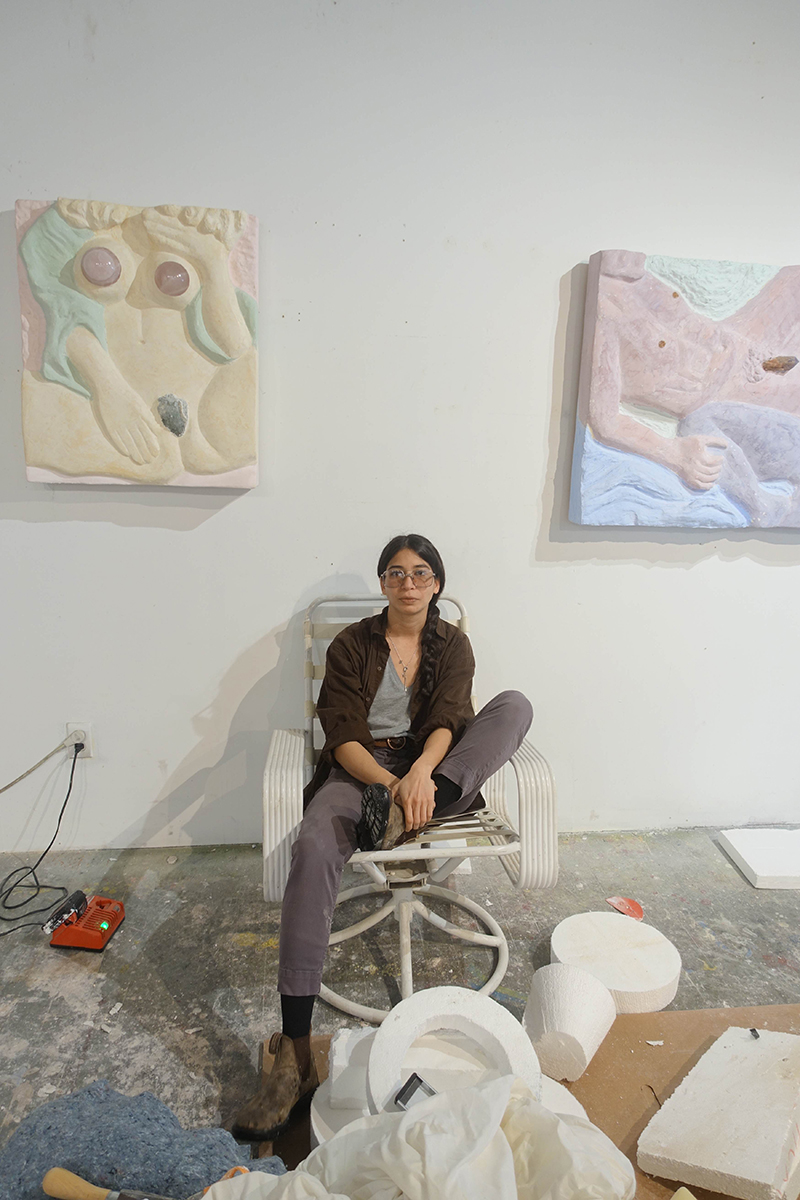 Image courtesy of Leah Cobelli
Image courtesy of Leah Cobelli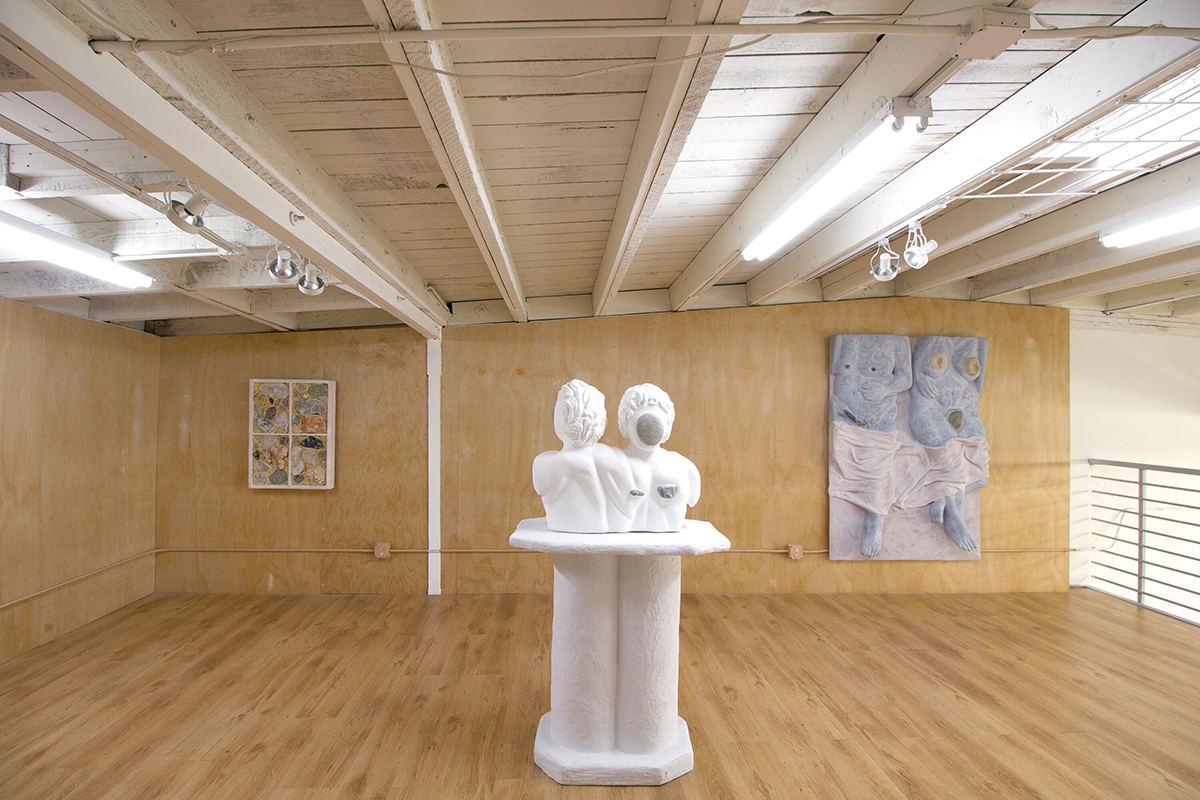 Image courtesy of Ochi Projects
Image courtesy of Ochi Projects
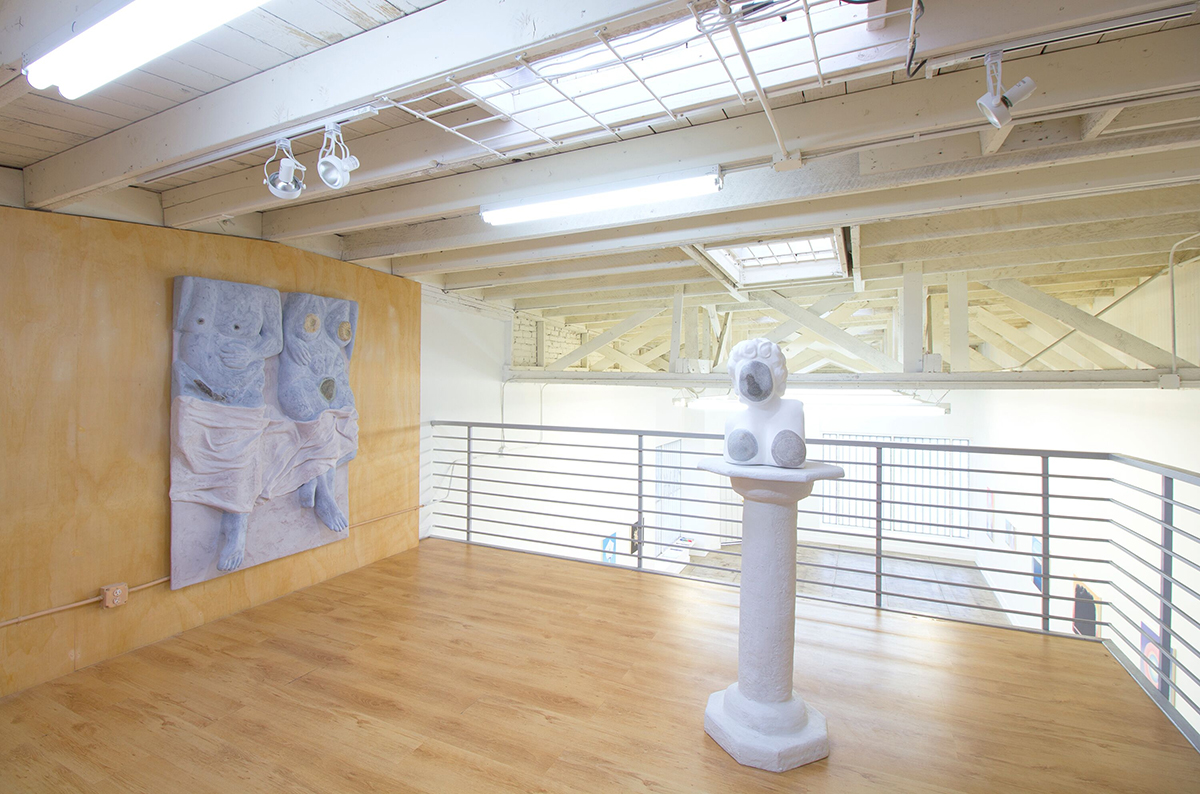 Image courtesy of Ochi Projects
Image courtesy of Ochi Projects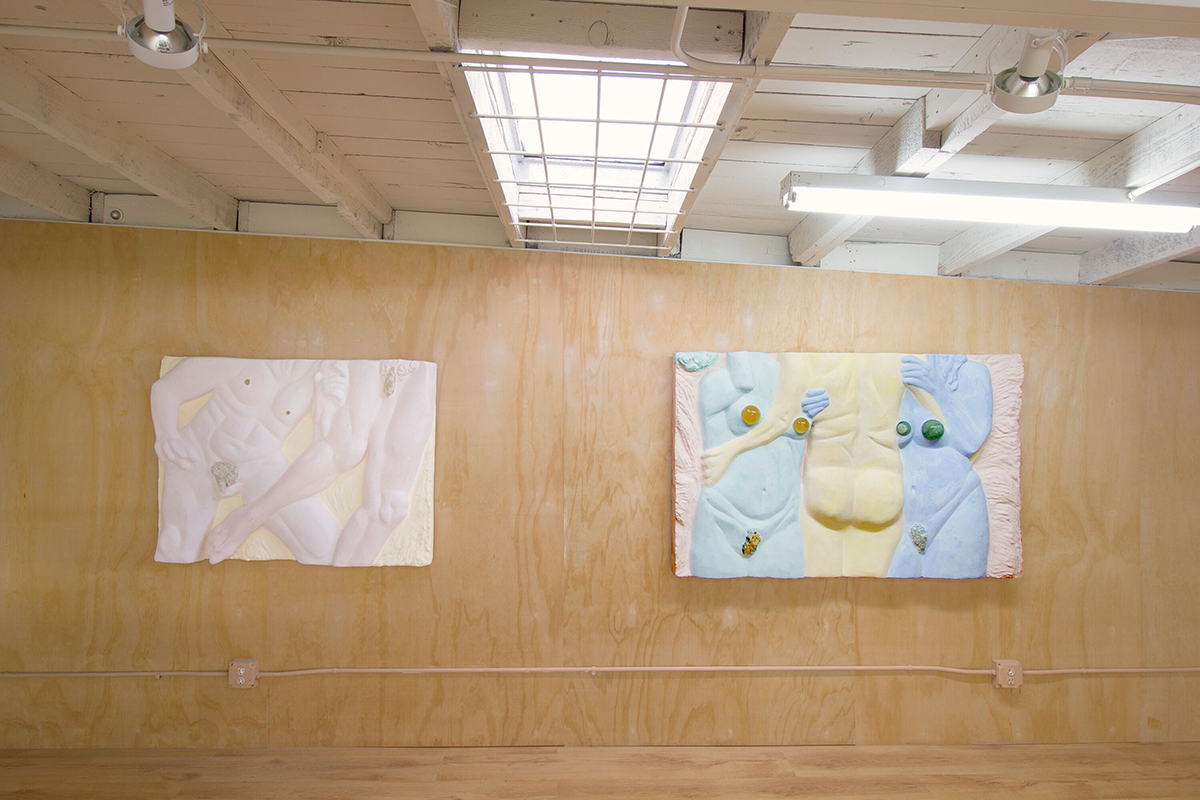 Image courtesy of Ochi Projects
Image courtesy of Ochi Projects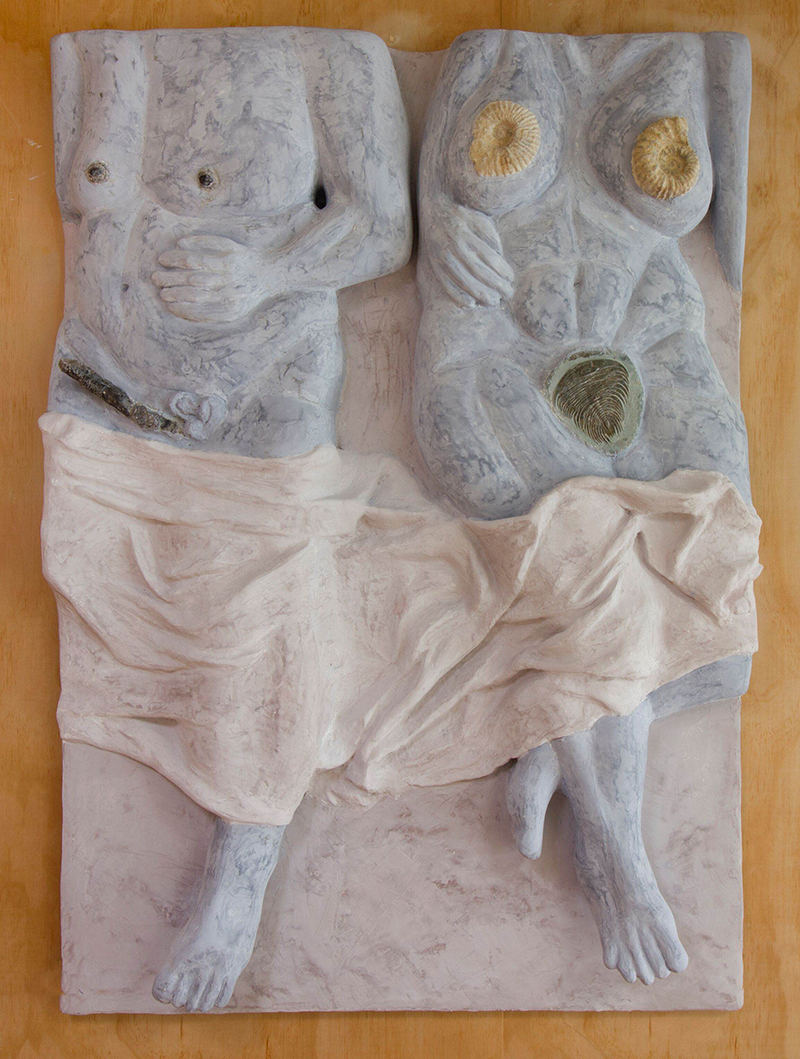 Image courtesy of Ochi Projects
Image courtesy of Ochi Projects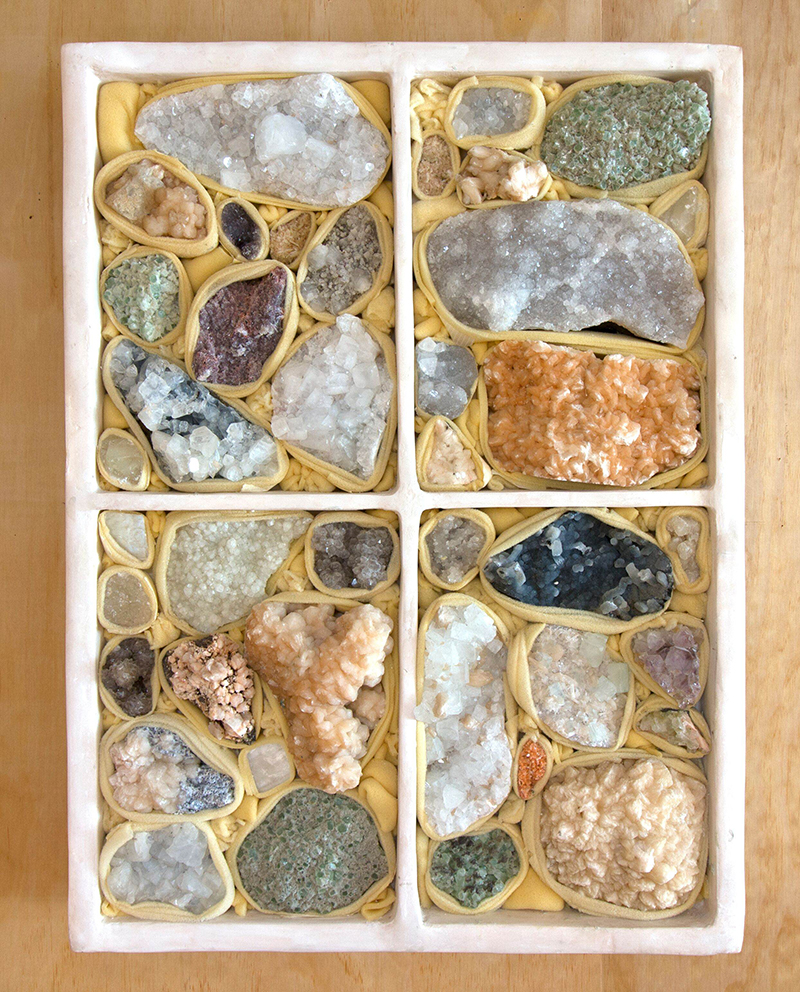 Image courtesy of Ochi Projects
Image courtesy of Ochi Projects
Cara Chan was born in NJ. She received her BFA from New York University and her MFA from UCLA. Her recent works employ pareidolia to explore the way humans perceive themselves in the landscape. She incorporates natural materials such as gems, fossils, and common beach stones into fetish finished reliefs and busts that playfully distort classical forms. Cara Chan lives and works in Los Angeles.
Iiu
Susiraja
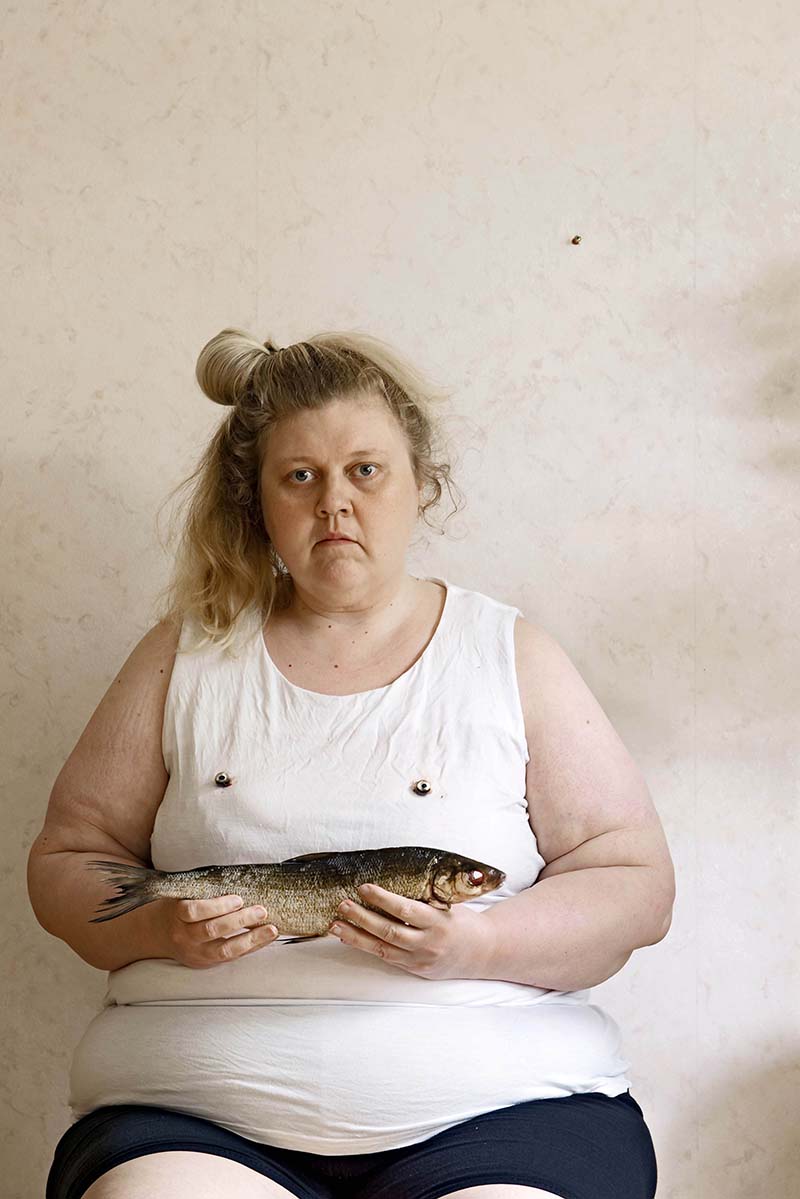
Eyes, 2017
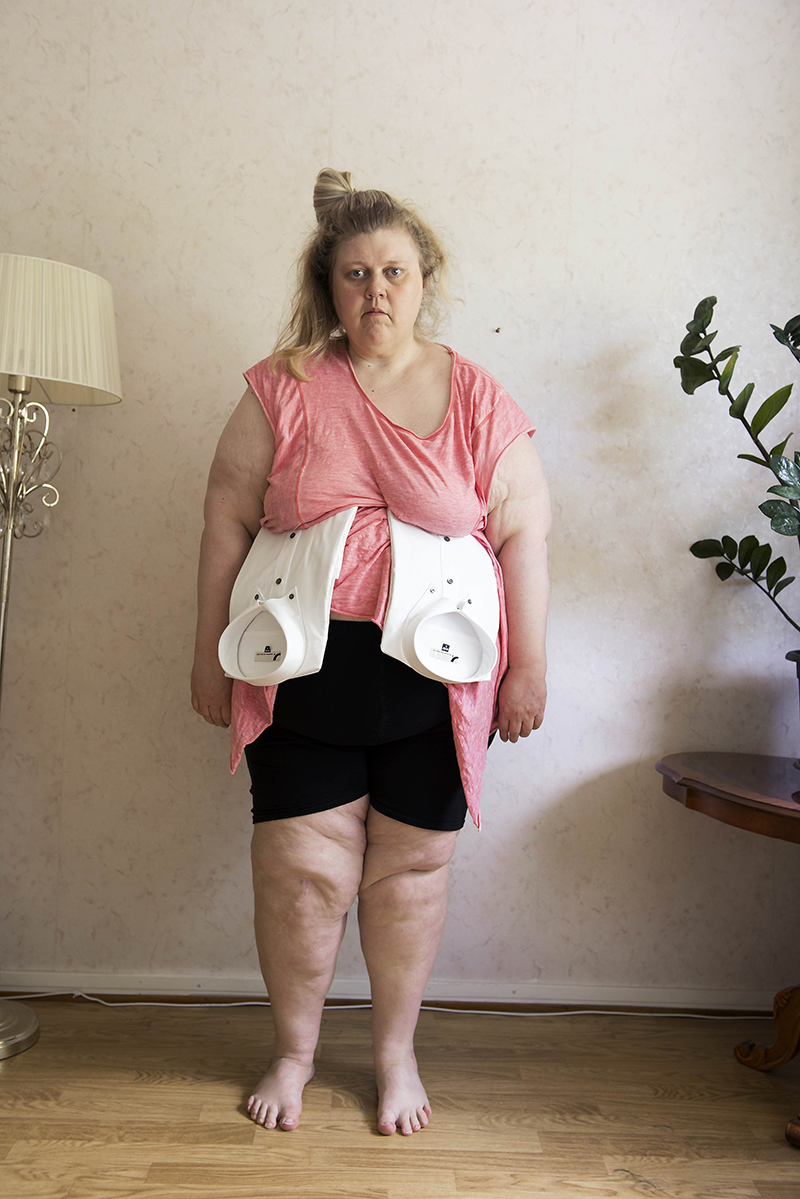
Shirts, 2017
 Unicorn (Chocolate), 2017
Unicorn (Chocolate), 2017
Handshake(2017)
Iiu Susiraja (FIN), 1975. Susiraja has graduated as an artist in Turku Art academy, Finland in the year 2012 (BA). And in the year 2018 she graduated in Finnish Academy of Fine Arts (MA). As the major substance was photography. She also makes short videos. Susiraja`s the solo exhibition in the project room in the Museum of the Finnish art of photography in the year 2011 raised up Susiraja at the first time to the public knowledge. The first solo exhibition in United States called What am I? which was seen in New York, Ramiken Crucible gallery was one of the most important exhibitions for her career. Susiraja`s pieces of art now in several major collections (Rubell Family Collection, Venus gallery, Heino art foundation, Helsinki Art Museum, Kiasma Museum of Contemporary Art, Finnish National Museum, Finnish Museum of Photography, Wäinö Aaltonen Museum of Art and Päivi and Paavo Lipponen Collection, Stavanger museum, Gothenburgh Museum of Art).
Lily Jue
Sheng
 中东功风空 . Zhong Dong Gong Feng Kong
中东功风空 . Zhong Dong Gong Feng KongDigital collage
 Five Movements 五種流行之氣 (Film Still)
Five Movements 五種流行之氣 (Film Still) Directed by Lily Jue Sheng, co-produced with Anjuli Rathod
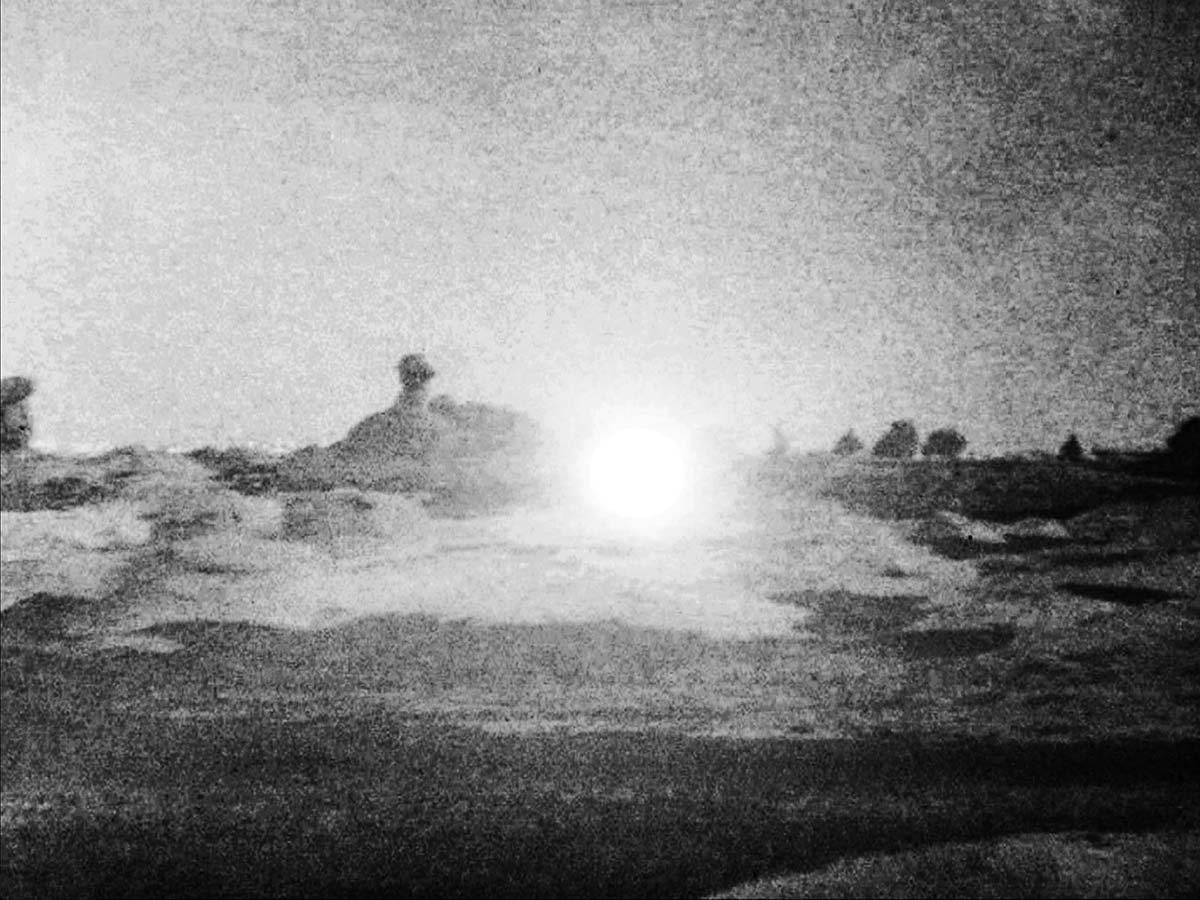 Aegyptia (Film Still)
Aegyptia (Film Still)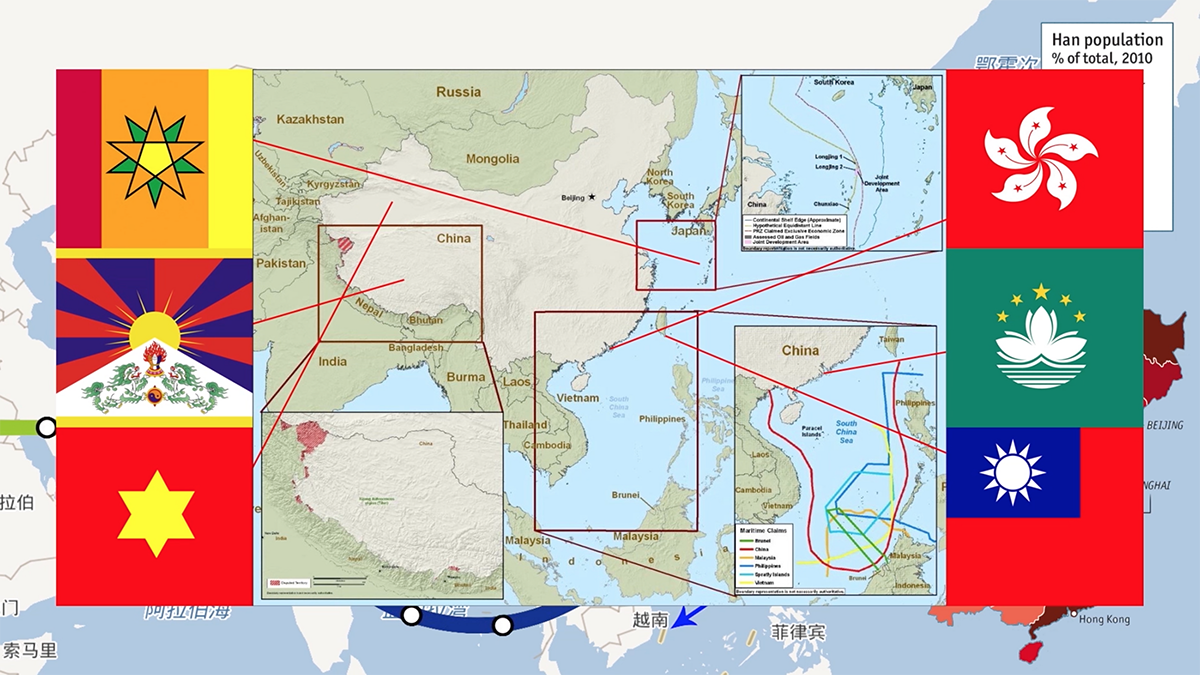 You Spin me Right Sound (Film Still)
You Spin me Right Sound (Film Still)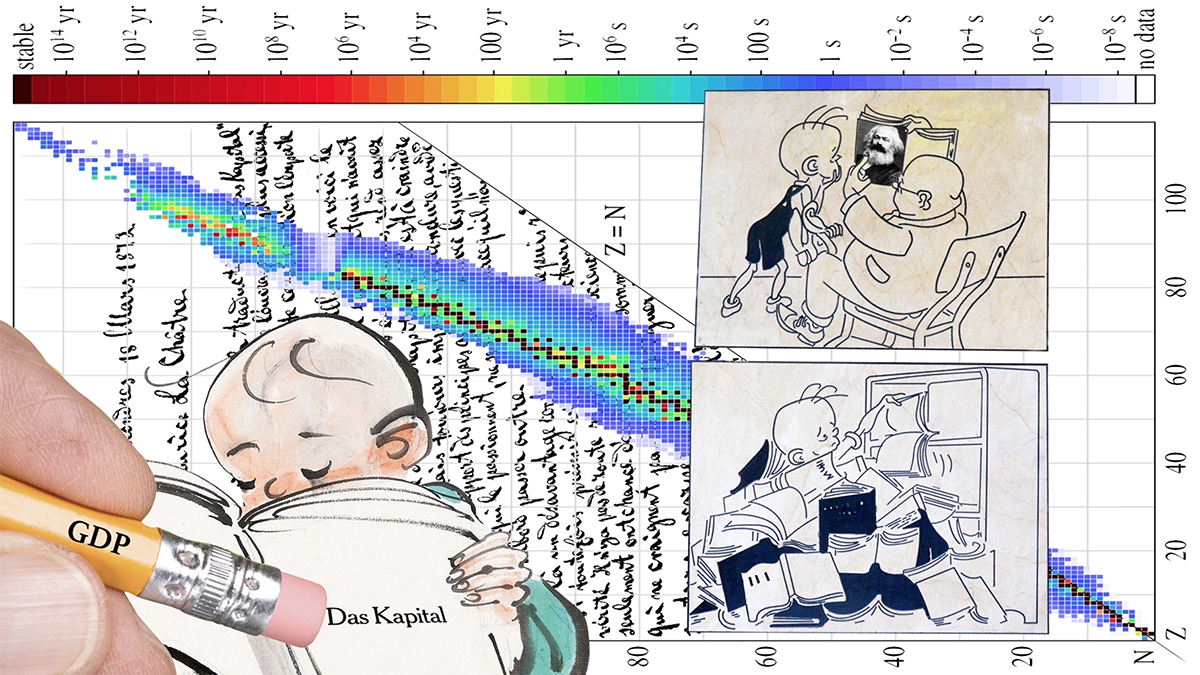
You Spin me Right Sound (Film Still)
 Change 变 (Film Still)
Change 变 (Film Still)

Lily Jue Sheng makes moving images with film, video, 2D mixed media, and multi-projection performance & installation. She graduated from the School of the Museum of Fine Arts in Boston, MA, and is currently based in New York City & New Jersey. She exhibits in a wide range of contexts such as museums, galleries, universities, film festivals, theaters, electronic billboards, and projection mappings for unique spaces. Her work has shown at the Whitney Museum of American Art, Parrish Art Museum, Microscope Gallery, Eyebeam, Pioneer Works, Flux Factory, and the Knockdown Center in New York; Mana Contemporary in New Jersey; the Museum of Fine Arts in Boston; the Musée d’art contemporain de Montréal in Montreal; the 1933 Slaughterhouse (老场坊) and West Bund Art & Design Fair in Shanghai; and 3331 Arts Chiyoda in Tokyo.
Iman
Raad
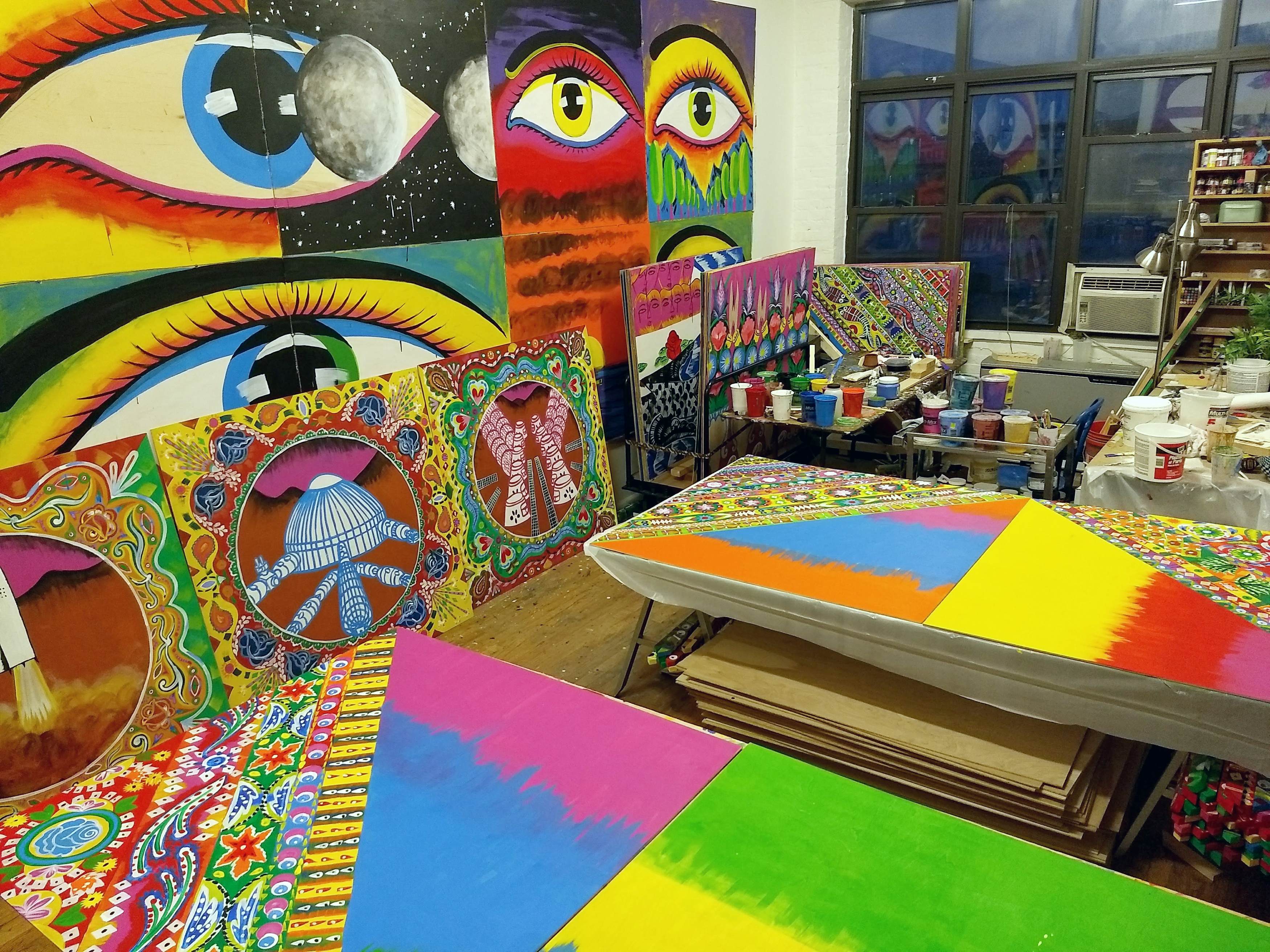
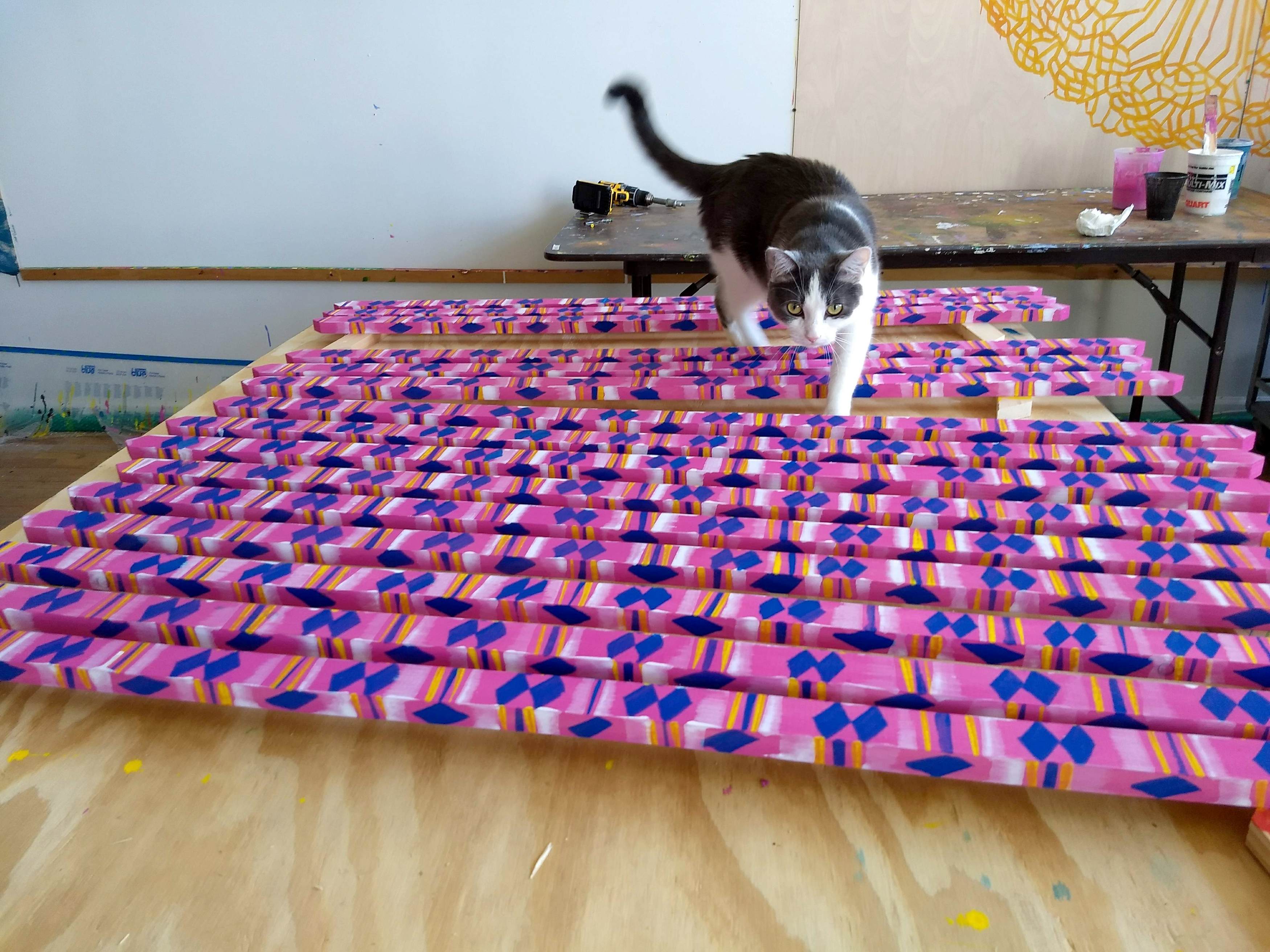


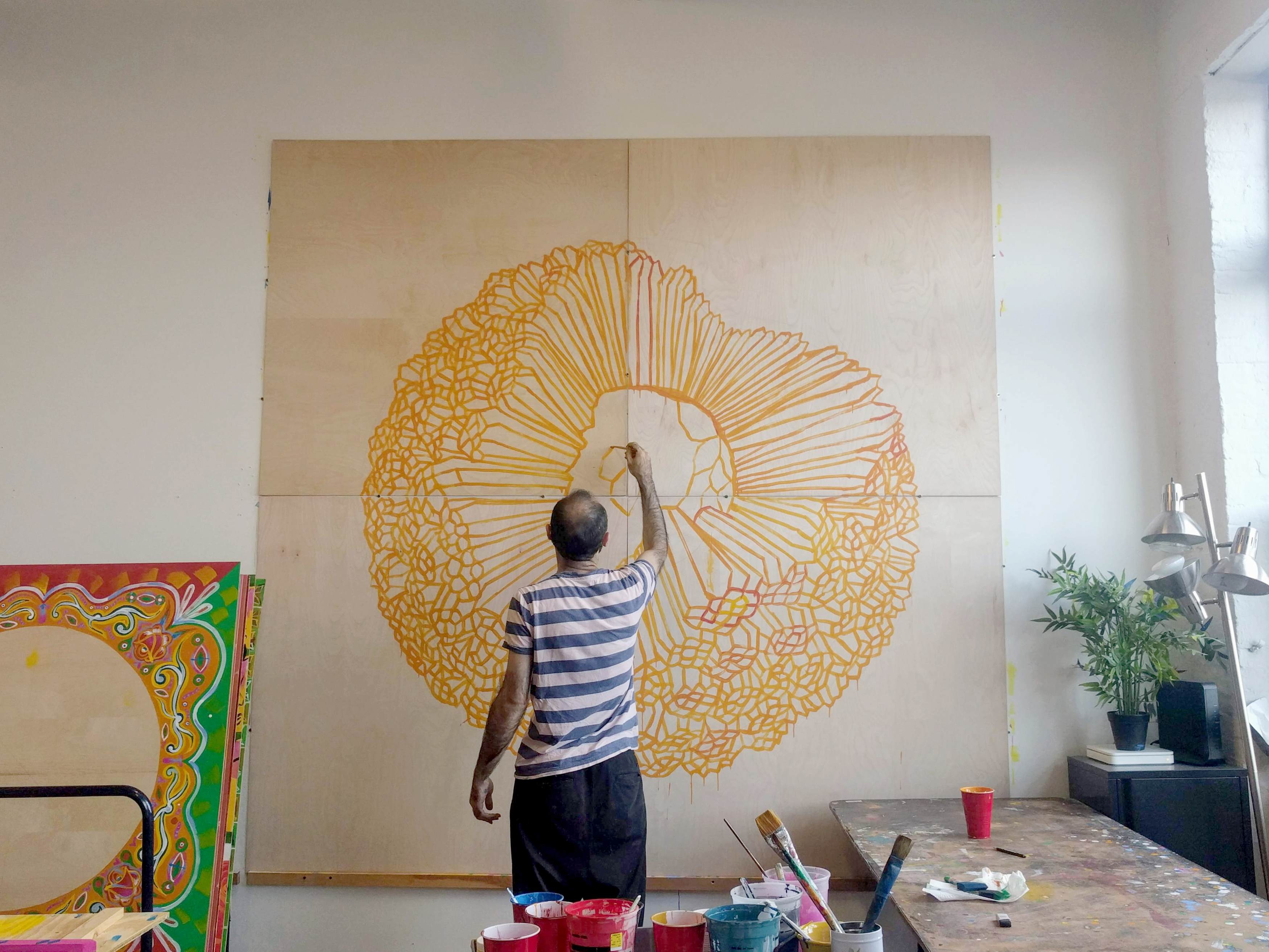
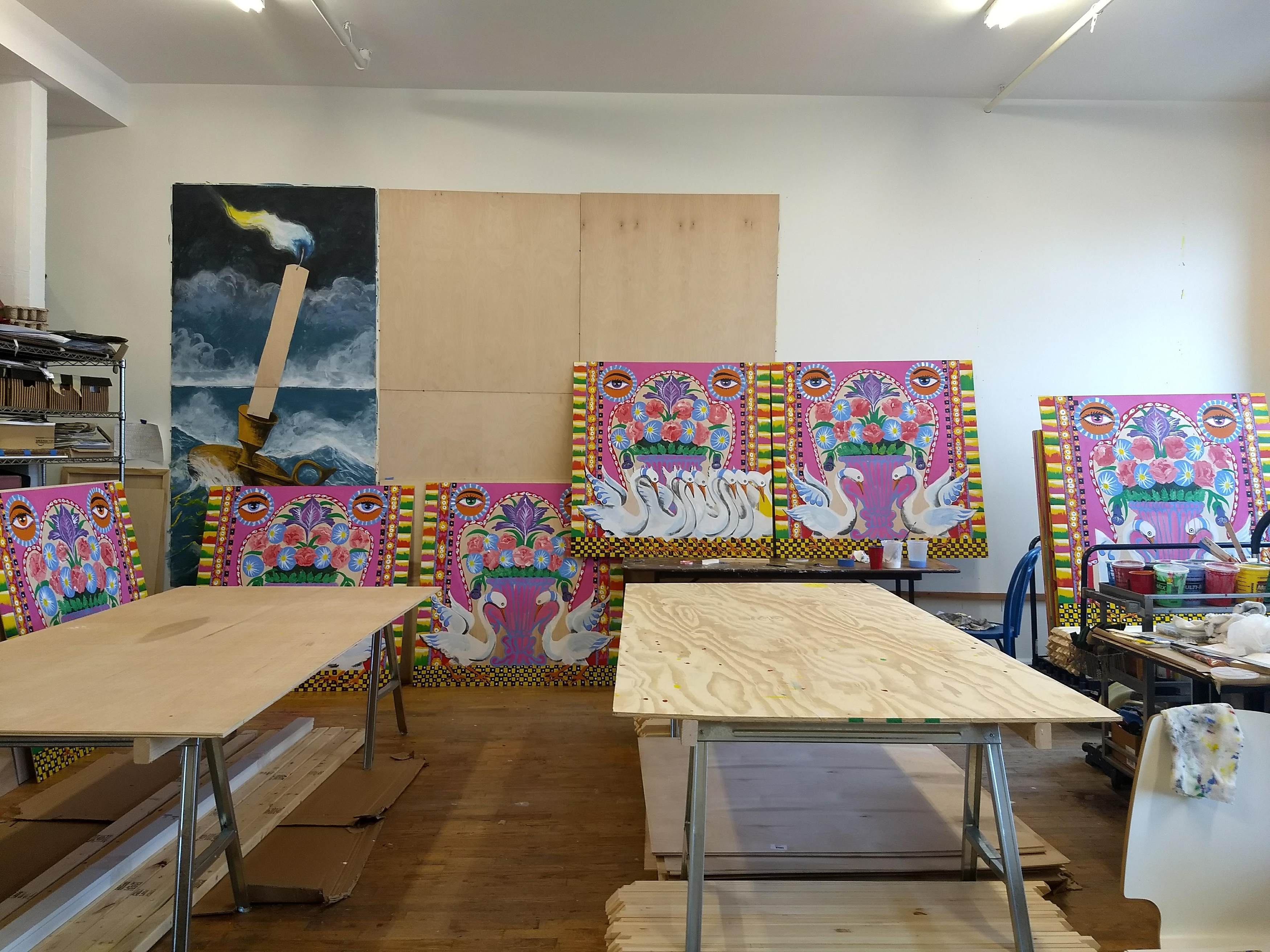

Iman Raad (Mashhad, Iran 1979) received his MFA in Painting and Printmaking from Yale University (2017), was a fellow in the Shandaken Projects’ Paint School (2017-18), and is currently a resident in the Queens Museum Studio Program (2018-20). He lives and works in Brooklyn.
Iman Raad's work presents a contradictory combination of beauty and fear. His work addresses humankind’s anxieties by staging a traumatic scene of a disturbance in reality. He foregrounds ornamental elements, which that inverting the art historical narrative of ornamentation. His work presents subjects like birds and fruits, that are extracted from traditionally decorative and neutral contexts and juxtaposed with present concerns and future plans.
His recent solo exhibitions include Tongue Tied, Sargent's Daughters Gallery, New York (2017) and Forty Drawings and So, Dastan Gallery, Tehran (2016). Raad is installing a large-scale mural in the 9th Asia Pacific Triennial of Contemporary Art in Brisbane, Australia, opening in November 2018. The following photos are studio shots showing the mural in progress in his studio in Bushwick, between June and September of 2018.
Iman Raad's work presents a contradictory combination of beauty and fear. His work addresses humankind’s anxieties by staging a traumatic scene of a disturbance in reality. He foregrounds ornamental elements, which that inverting the art historical narrative of ornamentation. His work presents subjects like birds and fruits, that are extracted from traditionally decorative and neutral contexts and juxtaposed with present concerns and future plans.
His recent solo exhibitions include Tongue Tied, Sargent's Daughters Gallery, New York (2017) and Forty Drawings and So, Dastan Gallery, Tehran (2016). Raad is installing a large-scale mural in the 9th Asia Pacific Triennial of Contemporary Art in Brisbane, Australia, opening in November 2018. The following photos are studio shots showing the mural in progress in his studio in Bushwick, between June and September of 2018.
Marcela
Florido

 Portrait in B&W, 2017. Oil on canvas.
Portrait in B&W, 2017. Oil on canvas. Portrait Sanca, 2018. Oil on canvas.
Portrait Sanca, 2018. Oil on canvas. Portrait–Norway, 2017. Oil on canvas.
Portrait–Norway, 2017. Oil on canvas.  Sweaters and Sweethearts, 2017. Oil on canvas.
Sweaters and Sweethearts, 2017. Oil on canvas.
 Inverted Sisters and Many Hearts, 2018. Oil on canvas.
Inverted Sisters and Many Hearts, 2018. Oil on canvas.
At some point in my practice, I realized that the landscapes I depict do not correspond to real space or time. I understand them, instead, as fabricated memories of all the places I’ve called home over the past 10 years. Having lived in such contrasting cities as Rio de Janeiro, London, New York and Nairobi, my body had to adapt, growing amidst the new prejudices of each place. My work is for me a product of those confusing experiences.
The figures in my paintings, although fictional characters have always been females: who I suppose are a hybrid of myself and other women my life. My goal is to give them agency as I obsessively repaint them again and again. Art is a way I can play with, and therefore take ownership of, my femininity, sexuality, and body. Through painting, I liberate my sense of self from the restrictive notions of gender, race, and identity that surround me. It excites me to explore the conventions of the visual languages artists have developed throughout history, but I am primarily preoccupied with finding freedom within these languages. Art is not all about linguistics: there is something that goes beyond the verbal and allows for ambiguity and fluidity. For me, this tension between limits and freedom is what brings me back to the studio every day.
Marcela Florido (b. Brasil, 1988, currently Brooklyn, NY) received her BA from The Slade School of Fine Art in London and her MFA from Yale University. Florido has had solo exhibitions at the Institute United States (Brazil, 2016) and Sharjah Art Foundation (UAE, 2014). In 2017, she was a resident fellow at MassMoCa, MA and at the Vermont Studio Center, VT and in 2015 the artist received the Viridian Prize from Lauren Hinkson, senior curator at the Solomon Guggenheim Museum. Her work has also been exhibited in the Cervantes Institute (New York, 2017), Cambridge University (Cambridge, UK), the Institute of Contemporary Art ( Las Vegas, 2015), the Arts Council of Greater New Haven (New Haven, 2014) and Fabrica Bhering, (Rio de Janeiro, 2009).
The figures in my paintings, although fictional characters have always been females: who I suppose are a hybrid of myself and other women my life. My goal is to give them agency as I obsessively repaint them again and again. Art is a way I can play with, and therefore take ownership of, my femininity, sexuality, and body. Through painting, I liberate my sense of self from the restrictive notions of gender, race, and identity that surround me. It excites me to explore the conventions of the visual languages artists have developed throughout history, but I am primarily preoccupied with finding freedom within these languages. Art is not all about linguistics: there is something that goes beyond the verbal and allows for ambiguity and fluidity. For me, this tension between limits and freedom is what brings me back to the studio every day.
Marcela Florido (b. Brasil, 1988, currently Brooklyn, NY) received her BA from The Slade School of Fine Art in London and her MFA from Yale University. Florido has had solo exhibitions at the Institute United States (Brazil, 2016) and Sharjah Art Foundation (UAE, 2014). In 2017, she was a resident fellow at MassMoCa, MA and at the Vermont Studio Center, VT and in 2015 the artist received the Viridian Prize from Lauren Hinkson, senior curator at the Solomon Guggenheim Museum. Her work has also been exhibited in the Cervantes Institute (New York, 2017), Cambridge University (Cambridge, UK), the Institute of Contemporary Art ( Las Vegas, 2015), the Arts Council of Greater New Haven (New Haven, 2014) and Fabrica Bhering, (Rio de Janeiro, 2009).
Mariana
Garibay Raeke



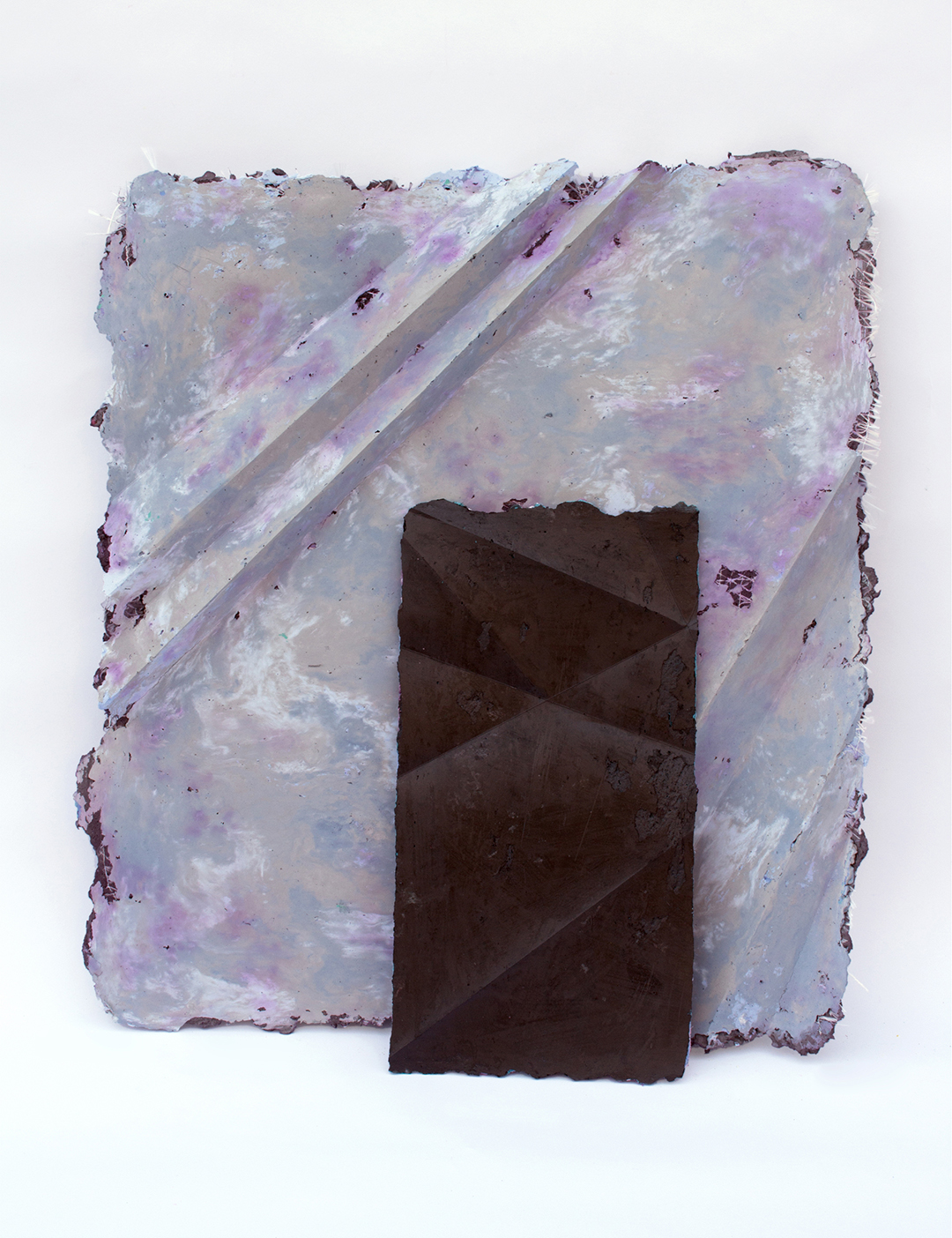

Mariana Garibay Raeke is interested in color. The objects she makes are places where color can materialize, become object or image. They result from experimentes that follow a particular logic—mixture of intuition and knowledge—which often gets repeated but never duplicated. These objects are fragments of an open conversation between the similarities and difference of the material she chooses and the procedural logic that transforms them. Her work captures moments in the process of becoming and suggests a potential for continuous change.
Garibay Raeke was born in Mexico and is currently based in Brooklyn. She holds a BFA from the California College of the Arts and an MFA in painting and printmaking from Yale University School of Art. Her recent solo exhibitions include “closing the space between us”, The Chimney, Brooklyn (2018); and “Every Number is One”, Transmitter, Brooklyn (2015). Last Year she was an artist in resident at the Museum of Arts and Design, New York; and Anderson Ranch Arts Center, Snowmass, CO.
Garibay Raeke was born in Mexico and is currently based in Brooklyn. She holds a BFA from the California College of the Arts and an MFA in painting and printmaking from Yale University School of Art. Her recent solo exhibitions include “closing the space between us”, The Chimney, Brooklyn (2018); and “Every Number is One”, Transmitter, Brooklyn (2015). Last Year she was an artist in resident at the Museum of Arts and Design, New York; and Anderson Ranch Arts Center, Snowmass, CO.
Lucia
Love
 FAIR HAVEN, 2017. Oil on big canvas.
FAIR HAVEN, 2017. Oil on big canvas.
 GOD??? 2017. Digital drawing.
GOD??? 2017. Digital drawing.
 Home For The Coming Season, 2016. Oil on medium canvas.
Home For The Coming Season, 2016. Oil on medium canvas. Roller God, 2016. Oil on huge canvas.
Roller God, 2016. Oil on huge canvas.
Lucia Love was born in Manhattan where she lived in a thin triangle with parents and a tv that only showed tanks playing in the sand. Years later her mother retired from her city life making clothing to do yoga in the Berkshires. Her father, a resume man with a Leica who's famously never had a job, disappeared into the Desert View Drive.
Young Love became schooled in the city on a dime from Jasper John's Foundation for Contemporary Arts. She studied animation and painting at SVA. It was common to discover yourself there by researching conceptual movements of the 70s and making ironic statements about the 90s. Upon graduation in 2012 she became the assistant director of Family Business gallery which put on shows of hot young art every two weeks before the hurricane took our baby away.
Currently Lucia Love has been working with myth, legend, symbolism, crayons, Leipzig school techniques, talking dogs, Shooby Taylor, and hours of sleep paralysis at the gateway to the astral plane, to create a series of Doomerangs. These creatures just keep returning to doom—when you throw them right.
@lucia_love
Young Love became schooled in the city on a dime from Jasper John's Foundation for Contemporary Arts. She studied animation and painting at SVA. It was common to discover yourself there by researching conceptual movements of the 70s and making ironic statements about the 90s. Upon graduation in 2012 she became the assistant director of Family Business gallery which put on shows of hot young art every two weeks before the hurricane took our baby away.
Currently Lucia Love has been working with myth, legend, symbolism, crayons, Leipzig school techniques, talking dogs, Shooby Taylor, and hours of sleep paralysis at the gateway to the astral plane, to create a series of Doomerangs. These creatures just keep returning to doom—when you throw them right.
@lucia_love
Blinn &
Lambert

"Untitled (Broom, Out)", 2017, 3D anaglyph installation, 82 x 80 x 84 inches
(Detail) Image courtesy of Microscope Gallery
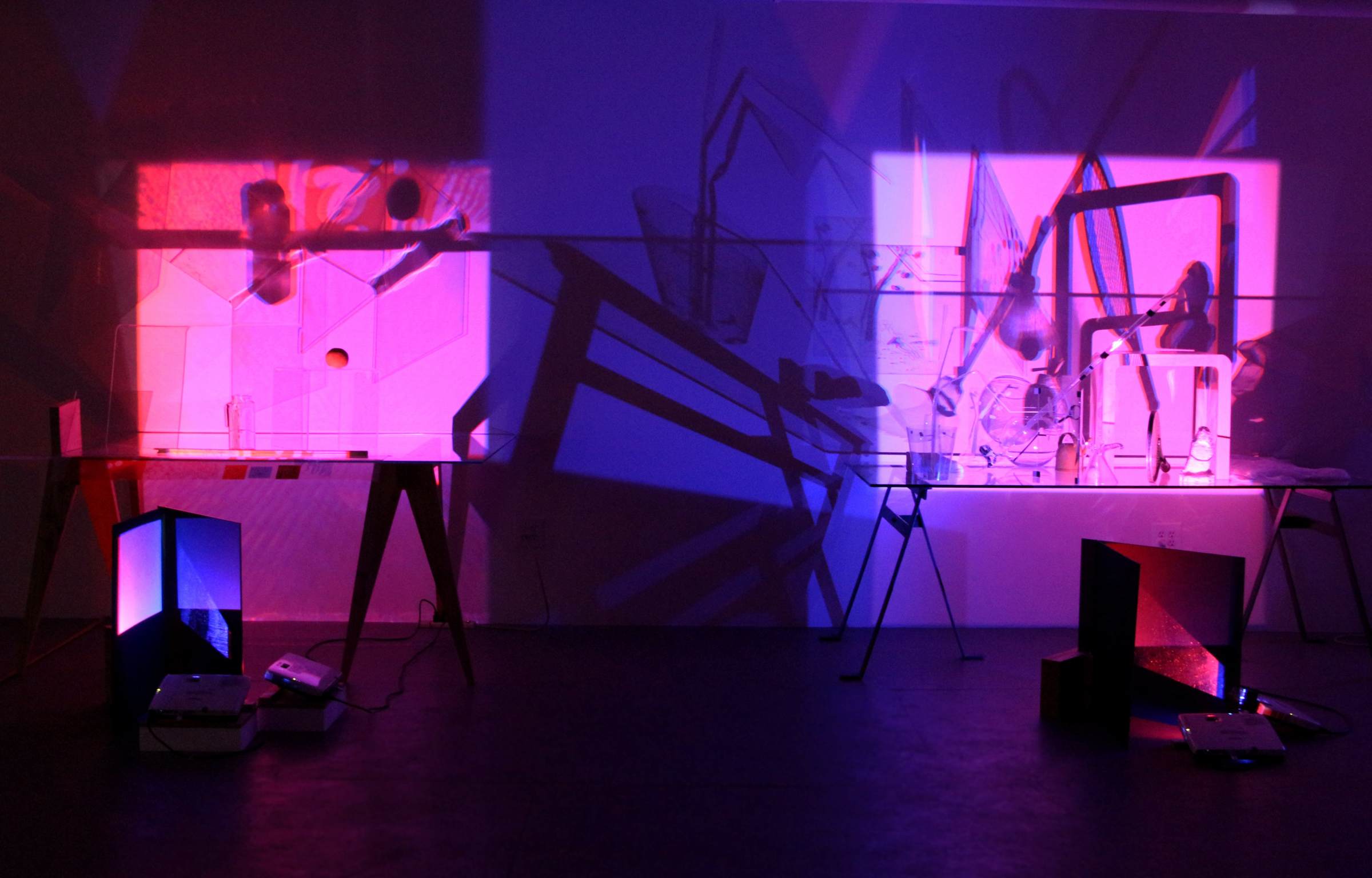
"New Grey Planet" exhibition, 2017
(Installation view) Image courtesy of Microscope Gallery
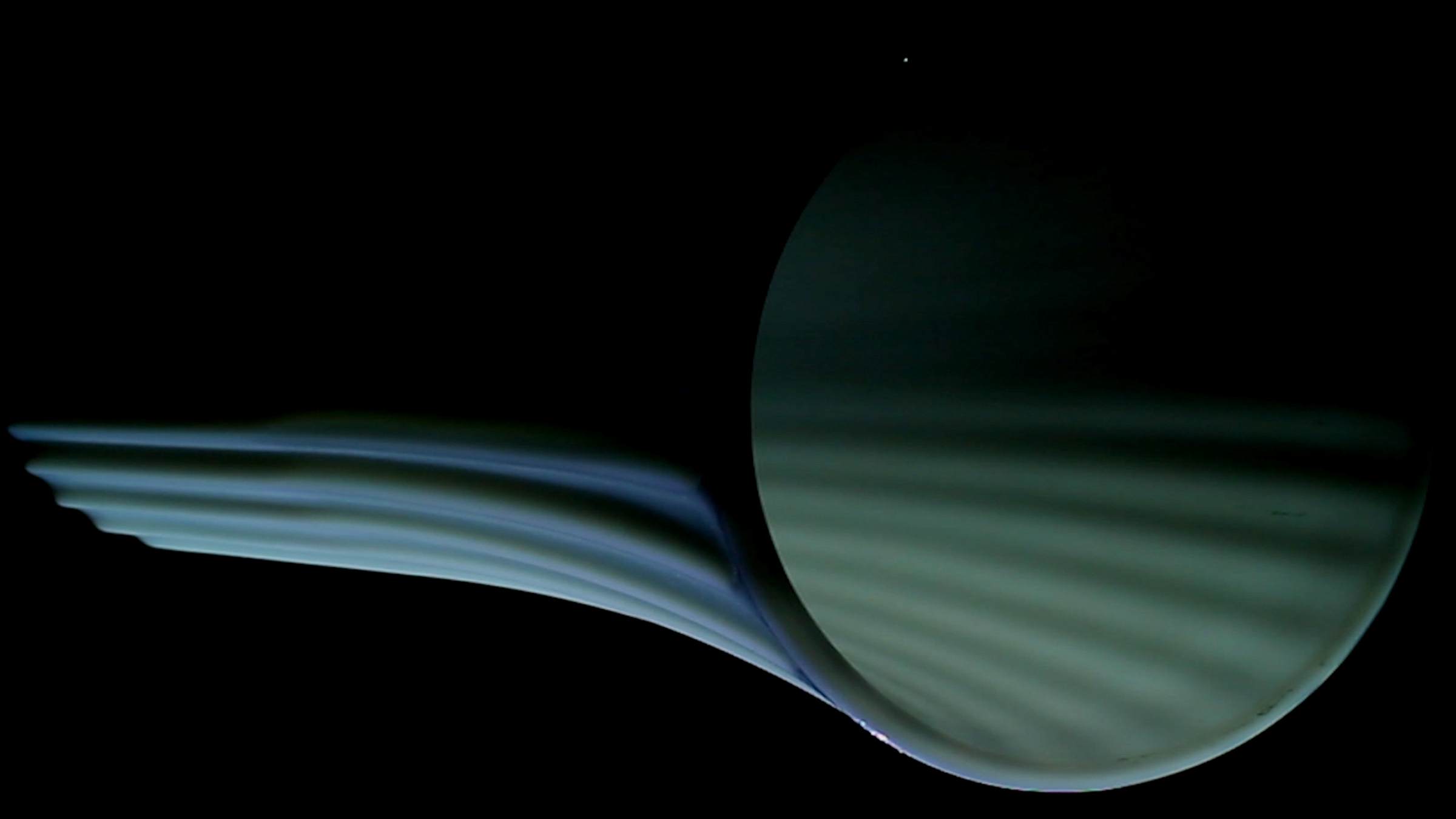
"New Grey Planet: Chapter 1", 2016, single-channel HD video, sound,
8 minutes 6 seconds (Still), Image courtesy of the artist and Microscope Gallery
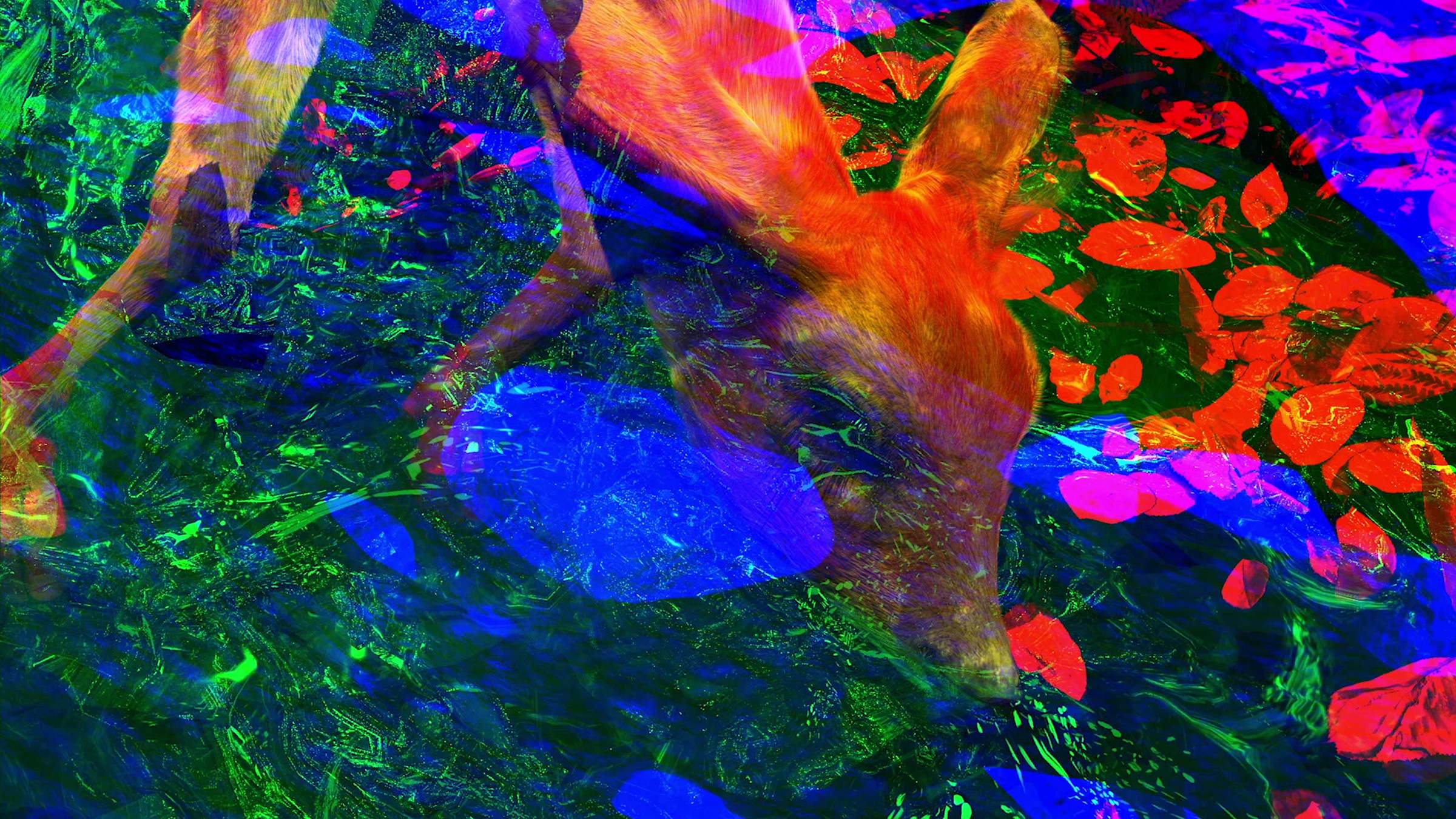
"Doe, a Deer", 2017, single-channel HD stereoscopic 3D video, silent,
4 minutes 4 seconds (Still), image courtesy of the artist and Microscope Gallery

Blinn & Lambert is the collaborative pseudonym of Nicholas Steindorf and Kyle Williams. They work in digital animation, video, sculpture, and practical special effects. Steindorf and Williams met while attending Yale’s MFA program in Painting, and live and work in Brooklyn and Queens, New York. Blinn & Lambert has recently screened work at Icebox Projects in Philadelphia and at Microscope Gallery in Brooklyn. Nicholas Steindorf (b. 1987) holds a BFA from Columbia College Chicago and an MFA in painting from Yale University (2014). Kyle Williams (b.1982) holds a BA from Stanford University in Art History and an MFA in painting from Yale University (2015). Steindorf and Williams both live and work in Brooklyn, NY.
Julia
Bland





Julia Bland’s large-scale works incorporate painting and weaving, developing the structures and patterns that bind disparate elements into a whole. Through weaving, cutting, sewing, dying, and painting, the surface becomes a visible record of her evolving, multi-faceted process.
Bland’s recent solo exhibitions include “Things to Say at Night” at MILLER Contemporary in 2017 and “If You Want To Be Free” at On Stellar Rays in 2015. She has been an artist in residence at The Sharpe-Walentas Space Program, Lighthouse Works, Yaddo, The Woodstock Byrdcliffe Guild, and The Skowhegan School of Painting and Sculpture. She has been awarded The Milton and Sally Avery Fellowship, The Carol Scholsberg Memorial Prize, The Jacques and Natasha Gelman Trust Travel Fellowship, and the Florence Leif Award. She earned her BFA from the Rhode Island School of Design in 2008, and her MFA from Yale in 2012.
Bland’s recent solo exhibitions include “Things to Say at Night” at MILLER Contemporary in 2017 and “If You Want To Be Free” at On Stellar Rays in 2015. She has been an artist in residence at The Sharpe-Walentas Space Program, Lighthouse Works, Yaddo, The Woodstock Byrdcliffe Guild, and The Skowhegan School of Painting and Sculpture. She has been awarded The Milton and Sally Avery Fellowship, The Carol Scholsberg Memorial Prize, The Jacques and Natasha Gelman Trust Travel Fellowship, and the Florence Leif Award. She earned her BFA from the Rhode Island School of Design in 2008, and her MFA from Yale in 2012.
Kari
Cholnoky

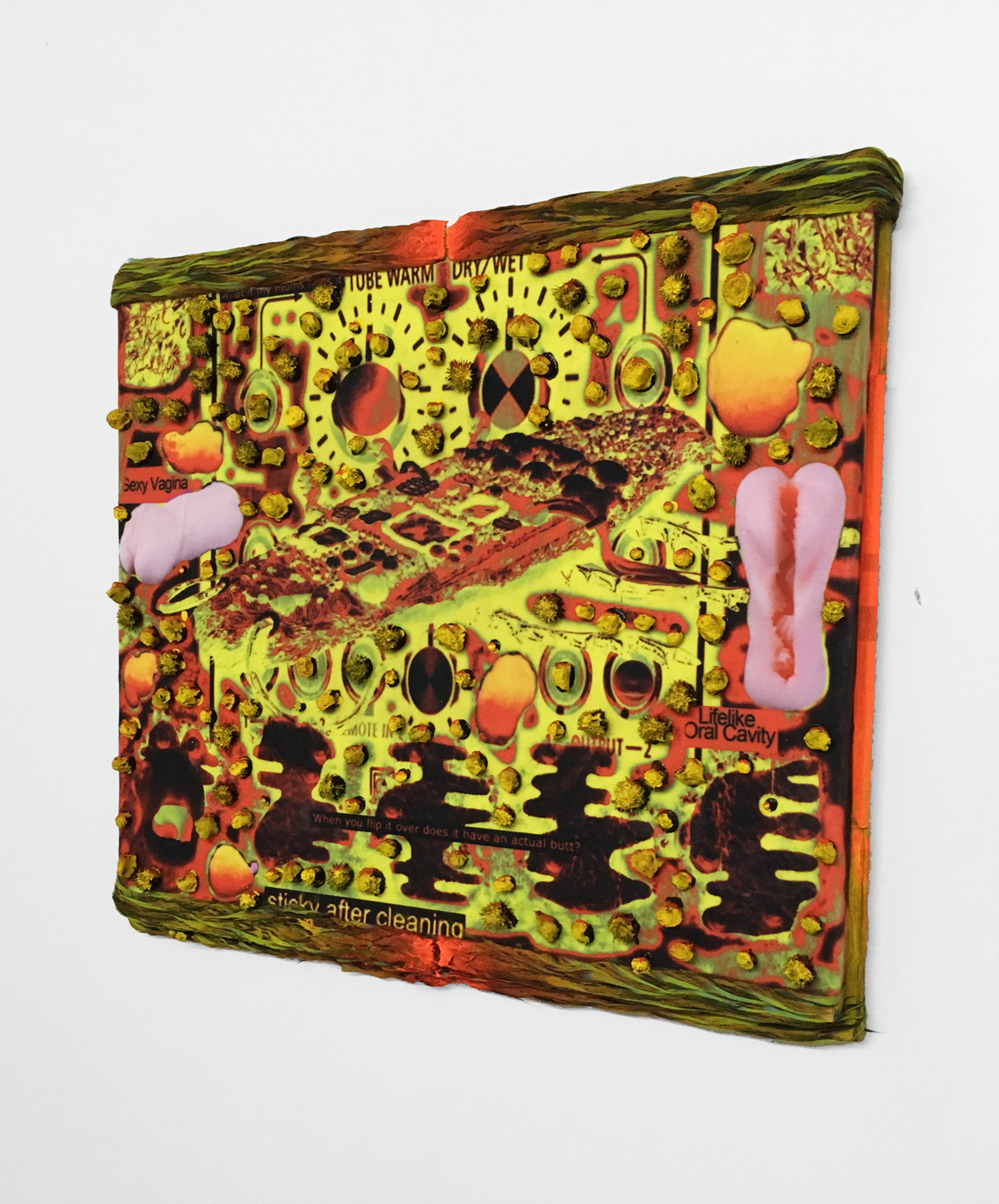
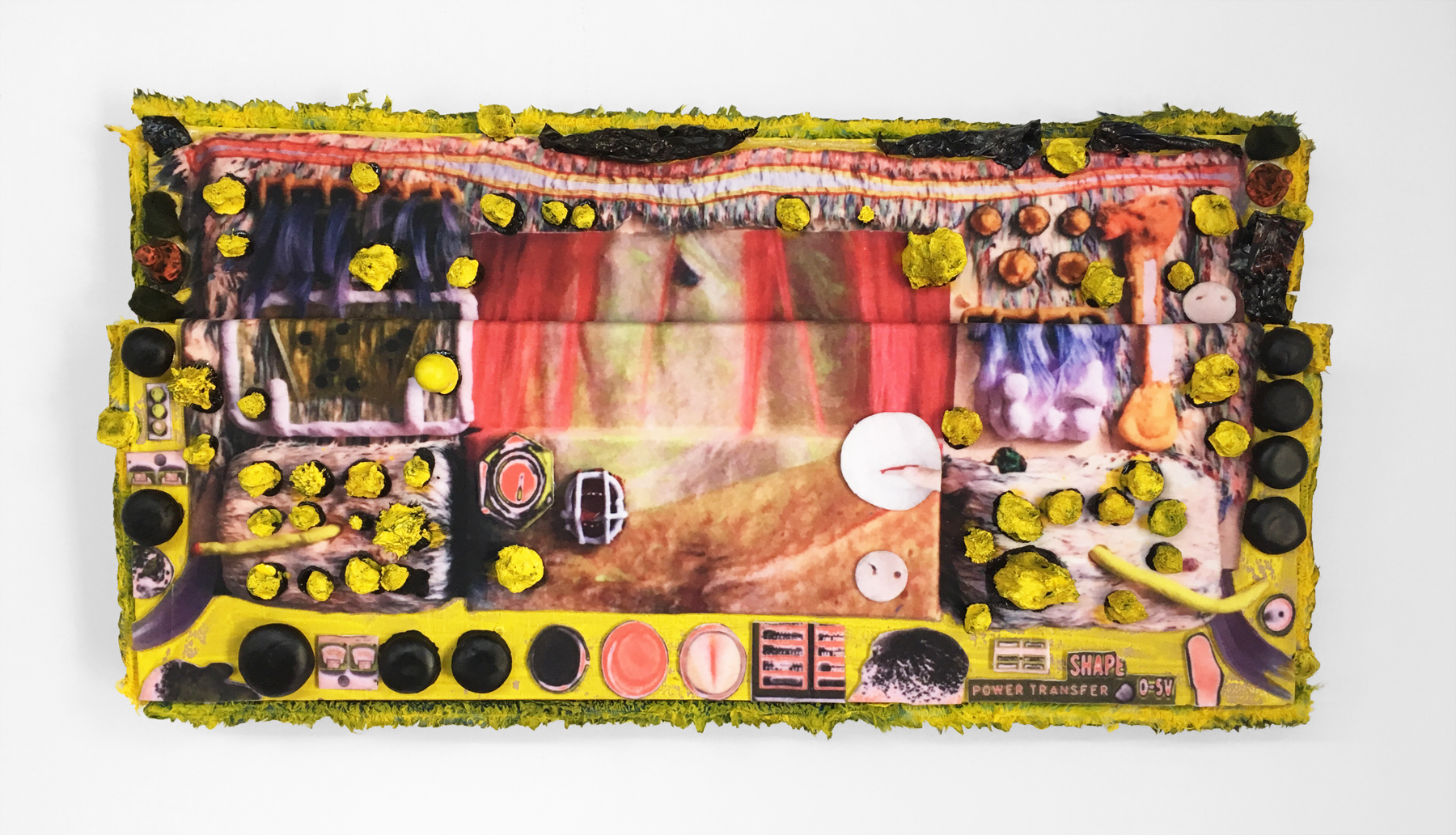
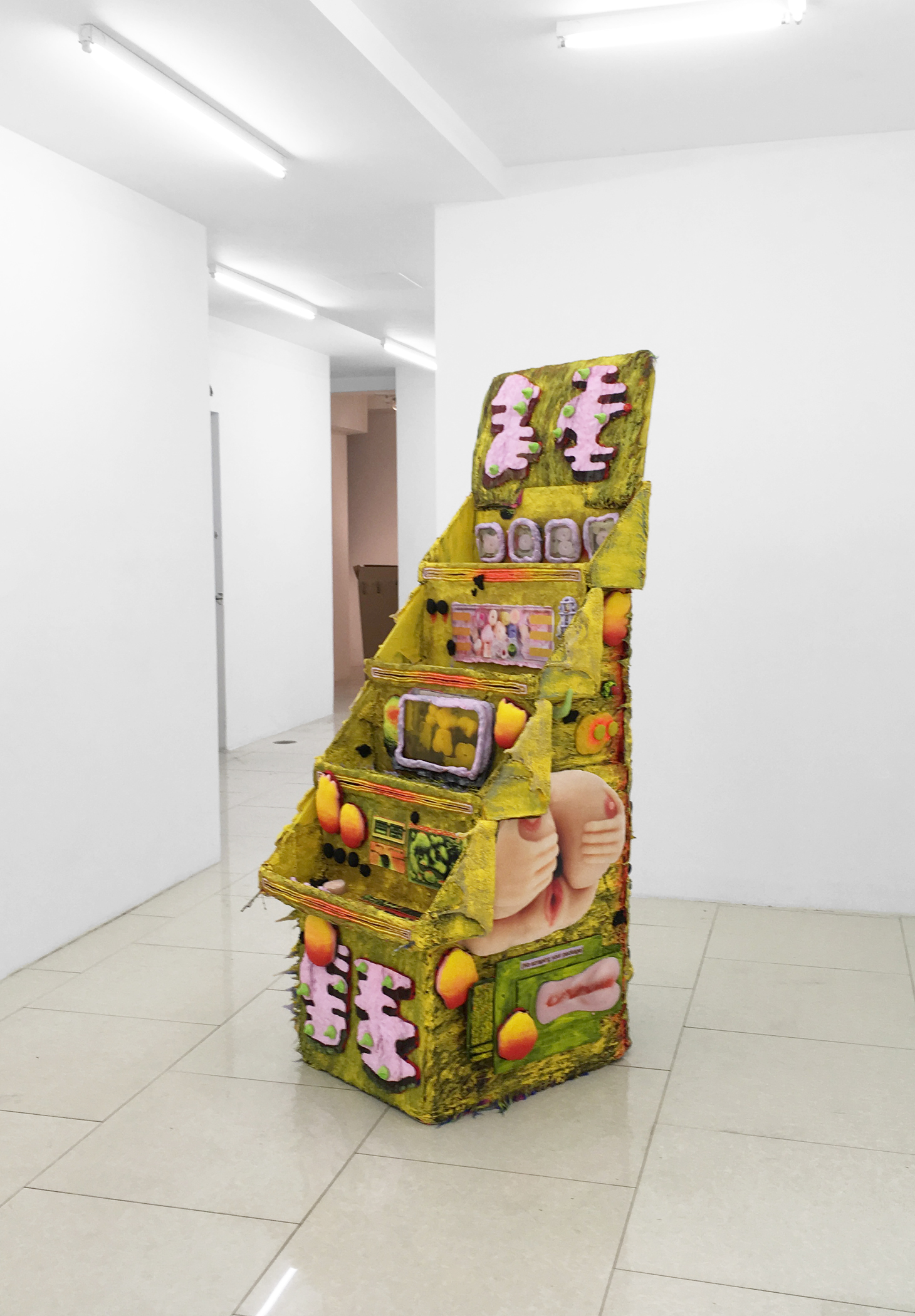
Kari Cholnoky lives and works in Brookyln, NY.
Kimberly
Kruge




Kimberly Kruge is a poet and translator and the author of High-Land Sub-Tropic, which was selected as the winner of the 2017 Center for Book Arts Chapbook Prize by Juan Felipe Herrera. Her other manuscripts have recently been finalists or semi-finalists for 7 other book prizes. Her work has appeared or is forthcoming in Ploughshares, The Iowa Review, The Massachusetts Review, Poetry Northwest, Copper Nickel, Luvina and elsewhere. She is a graduate of the Warren Wilson MFA Program for Writers and the recipient of a residency at the Millay Colony for the Arts. She is also the founder of Comala Haven, a retreat and workshop in Mexico for women writers. She lives and works in Guadalajara.
Dalia
Amara
 Modified Balloon, 2016, 30” x 45” Print
Modified Balloon, 2016, 30” x 45” Print

Lips, 2017, 42” x 63” Print
 I’ll Be Your____________, 2017, 32” x 23” Print
I’ll Be Your____________, 2017, 32” x 23” Print
 Still frame from Posing, 2017
Still frame from Posing, 2017
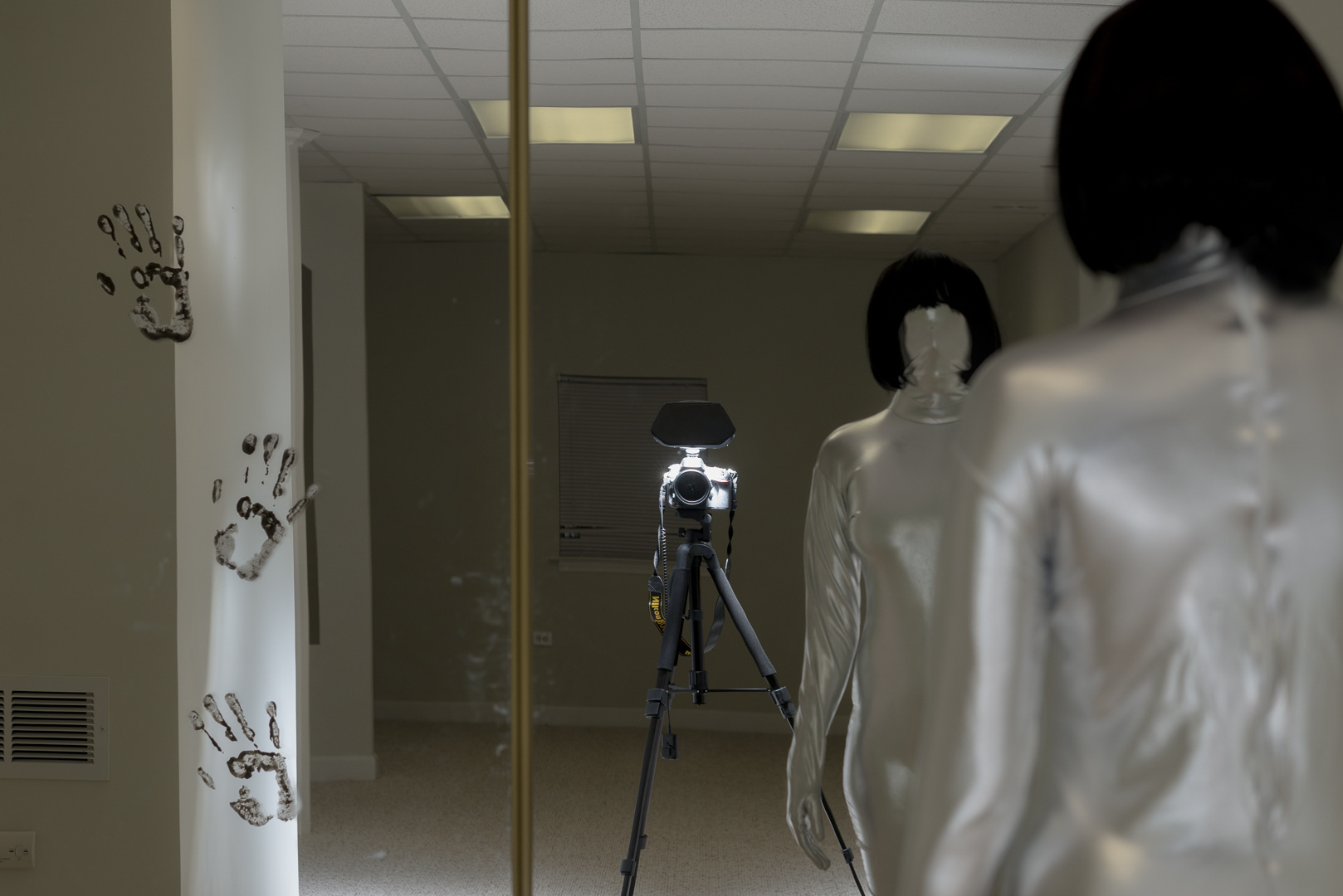 Assimilation, 2016, 20” x 16” Print
Assimilation, 2016, 20” x 16” Print
Dalia Amara is an American-Jordanian multidisciplinary artist living and working in Brooklyn, New York with a practice based in photography, video and performance art. Amara received her MFA in Photography, Video and Related Media from the School of Visual Arts in New York, and her BFA from Columbia College Chicago. Her work uses the domestic space or photo/video studio as a staging ground for sites of trauma, desire, and banality. Amara’s recent photographs and videos are invested in the visual language of feminine beauty, and the anxieties of assimilating to cultural expectations. Born to multi-ethnic parents, and raised in the US, Jordan, Egypt, Qatar and UAE, the ever-changing home, along with the varying and at times contradictory cultural expectations, have all been at the heart of Amara's motivations in her work. Amara has been featured in Paper Journal (UK), Art F City, and The Art Newspaper. She most recently participated in "Skin Dips," a two-person exhibition with Florencia Escudero at Selena Gallery in New York. Her work will be included in the forthcoming group exhibition “In Pursuit of the Perfect Pose” at Gallery 44: Centre for Contemporary Photography in Toronto.
Panayiotis
Terzis
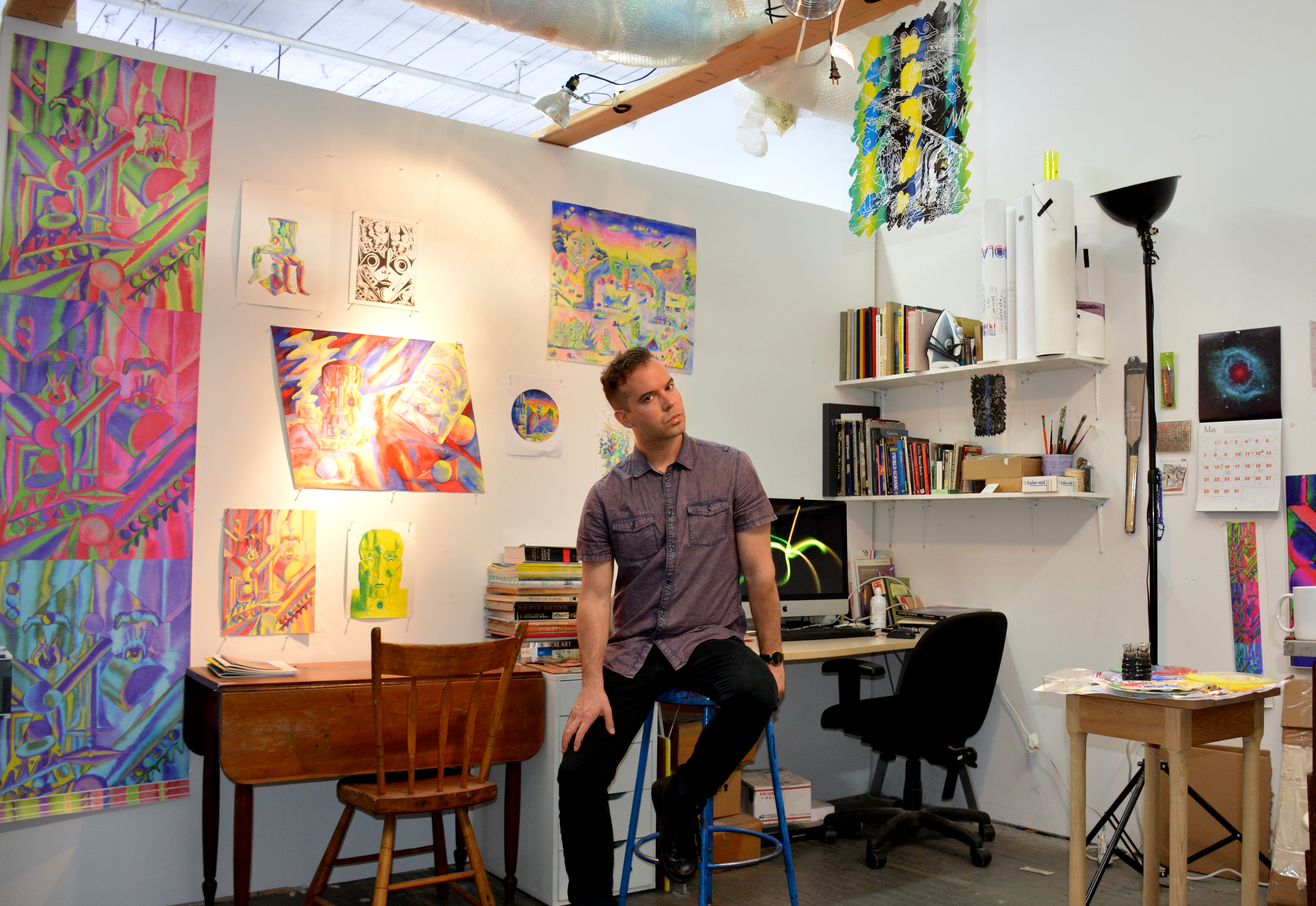
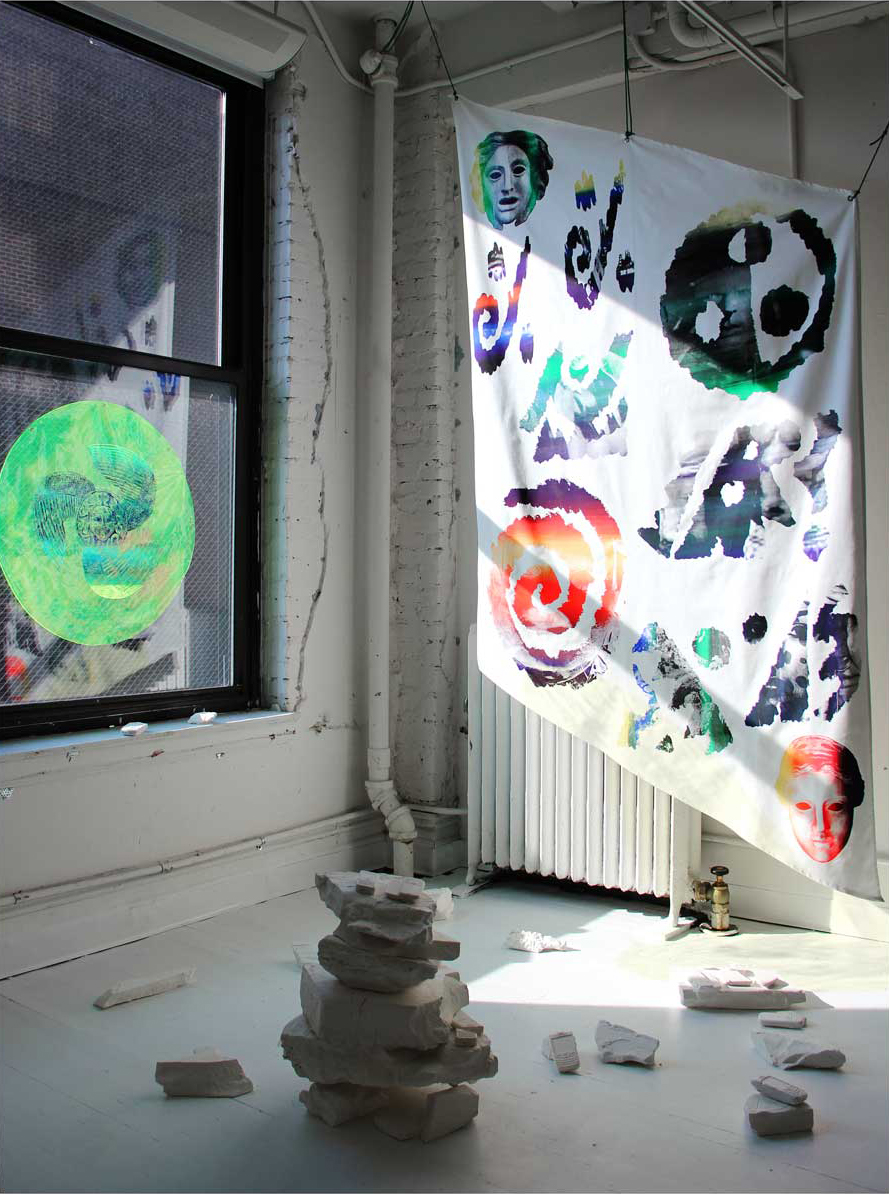
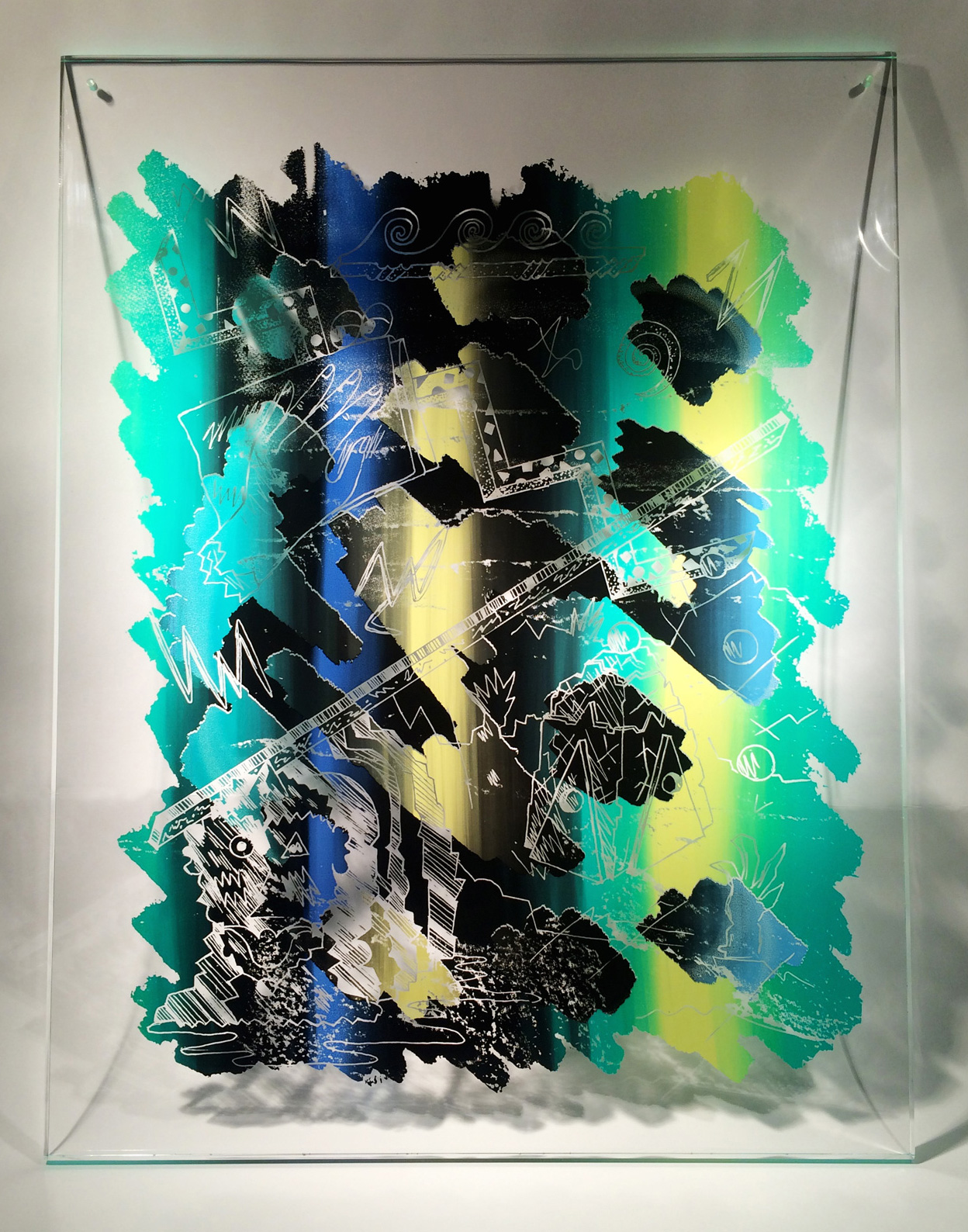
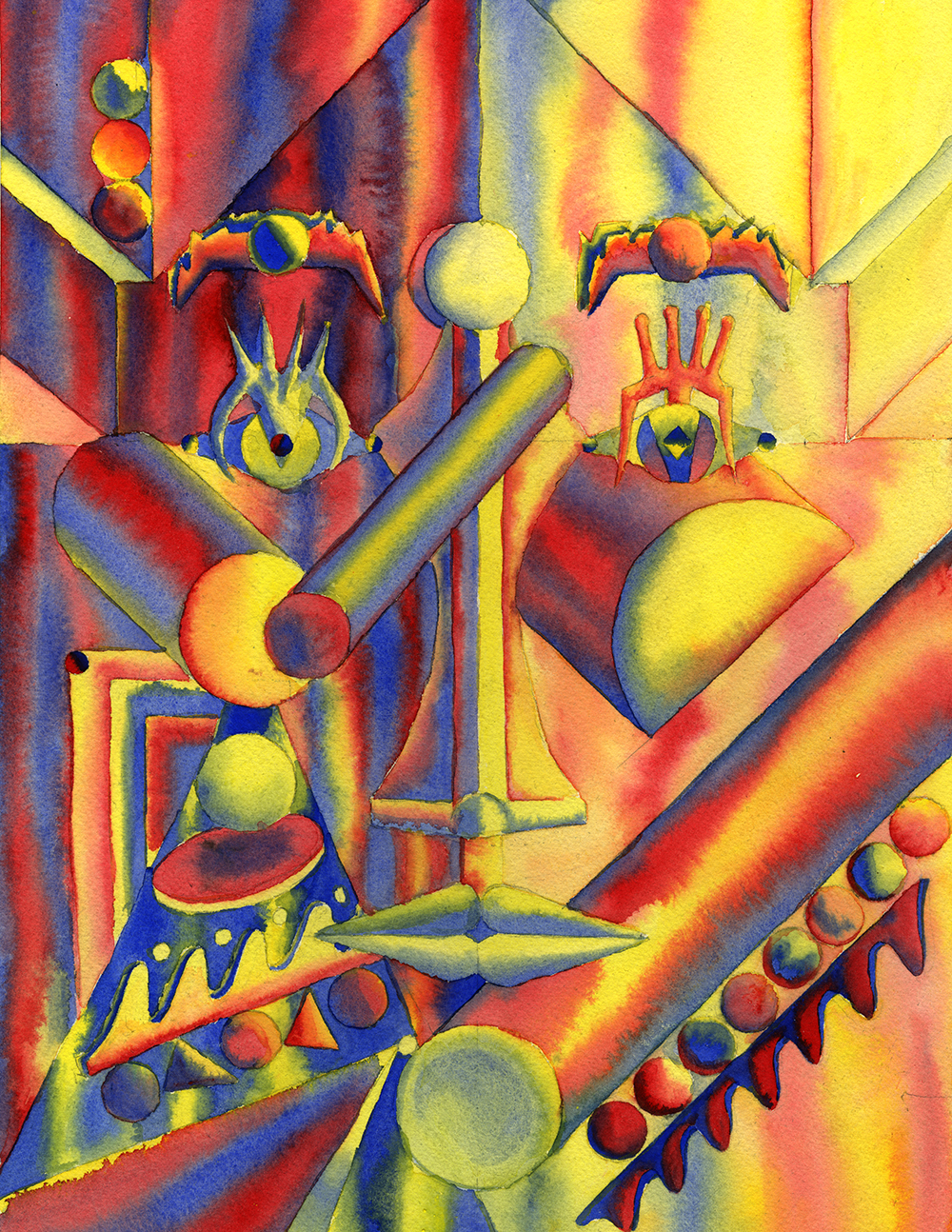

Panayiotis Terzis (b. 1983, Thessaloniki, Greece) lives and works in New York City. Recent exhibitions include: Endless Biennial, Elizabeth Foundation, New York (2016); Nieves and Innen Zine Library, Swiss Institute, New York (2016); and Spring/Break Art Show 2016, (curated by Andrea McGinty) Moynihan Station, New York (2016). His work has been featured in publications including Vice Magazine, Mould Map II, Zine Soup, Salt Hill, Gigantic Worlds, Cosmos, and Creeps Annual, and he has worked with American Apparel, Digitaria, and other brands. His artist books, zines and print editions are held in the permanent collection of the MoMA Library, the Brooklyn Museum, the New York Public Library and the collection of Stanford University among others. He teaches printmaking and color theory at the School of Visual Arts and Parsons.
MEGAPRESS
@_pppannn
@mmegapress
MEGAPRESS
@_pppannn
@mmegapress
Stephen Miguel
Decker
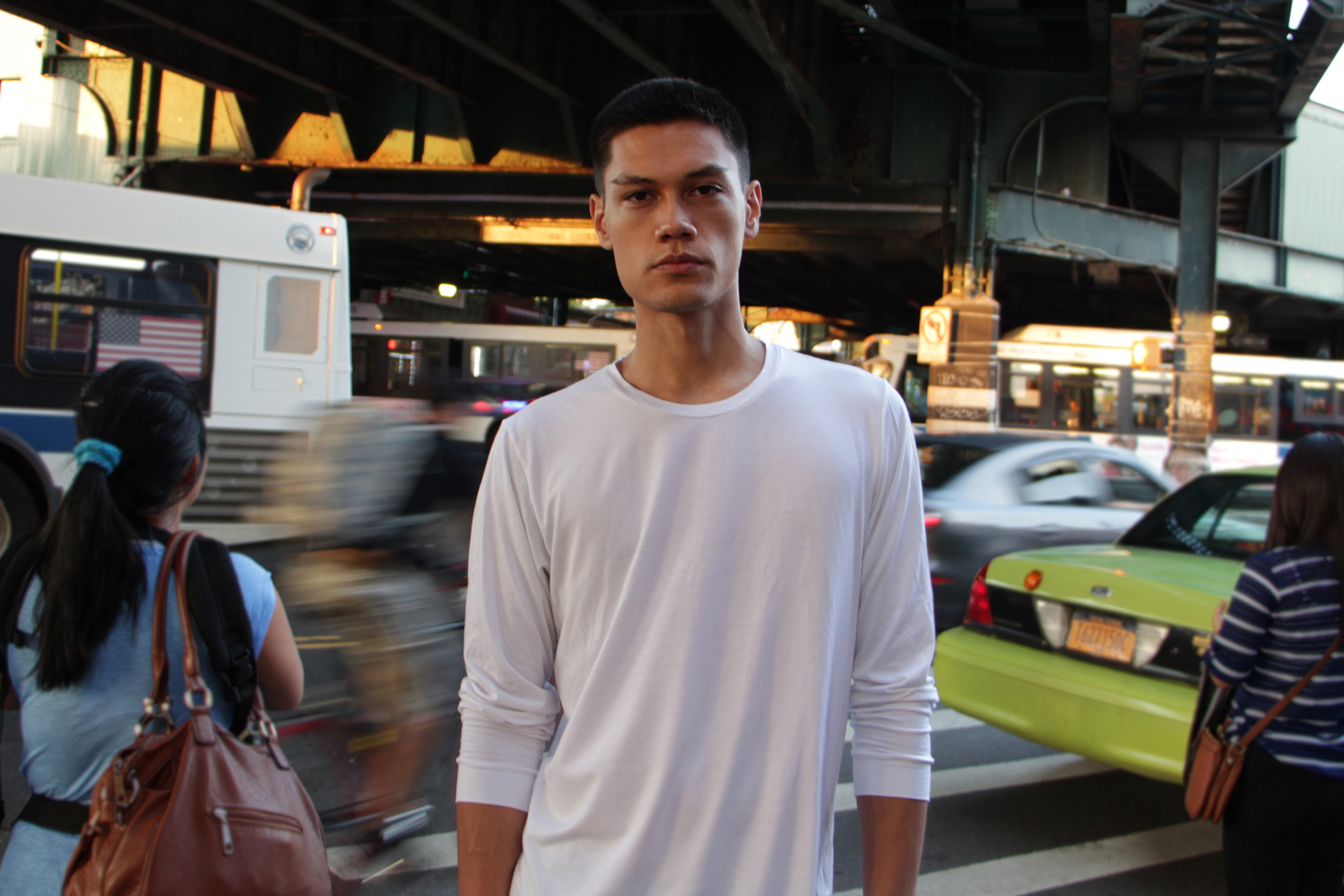
Stephen Miguel Decker is an artist based in New York. He has participated in a yearlong residency program at the MoMA PS1 Print Shop as a part of the artist-collective ALLGOLD, presented an evening-long performance to inaugurate the Filipino American Museum and extends his activities as a DJ on the London-based station NTS Radio, where he hosts a monthly show, NODE. Stephen often works in the areas of sound/music and more recently in web development/design. He is currently a part-time lecturer at The New School where he has taught classes on sound as an artistic medium and experimental publishing methods.
Deadname
Benjamin I. J. Mintzer
& Chris Eh
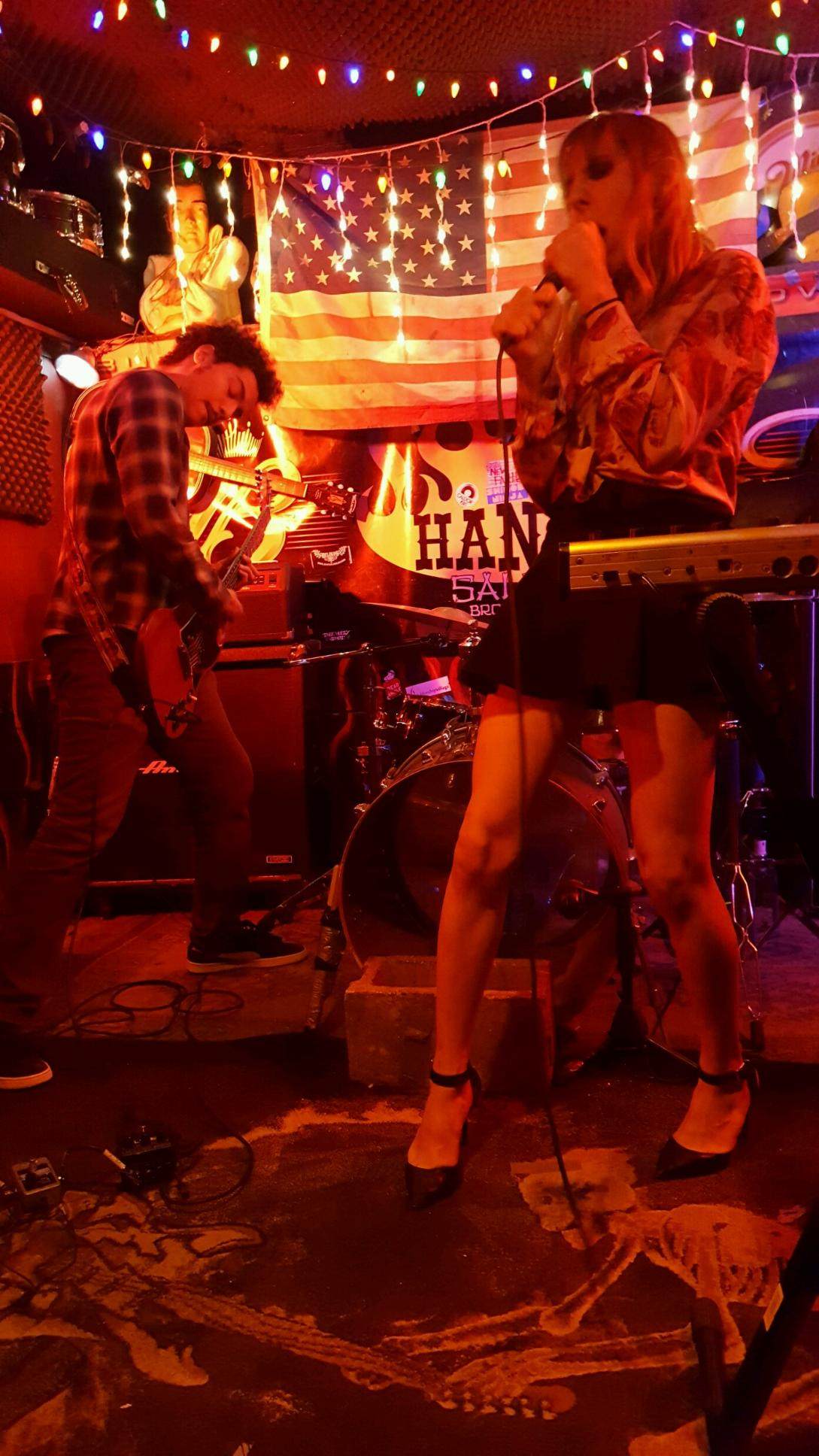
Deadname is a two-piece punk band from Brooklyn, New York (Chris Eh: Guitar/Bass/Programming; Benjamin: Vox/Keys). Drawing equal inspiration from 80s dance and hardcore punk, the band's sound aims to answer the question: 'What would the Jekyll-and-Hyde approach of Bad Brains sound like if you swapped the reggae and homophobia for synth-pop and radical queer consciousness?'
After releasing a handful of singles last fall, the band is currently toiling away on their first EP and putting together a summer trek around the U.S.
After releasing a handful of singles last fall, the band is currently toiling away on their first EP and putting together a summer trek around the U.S.
Catherine
Telford-Keogh
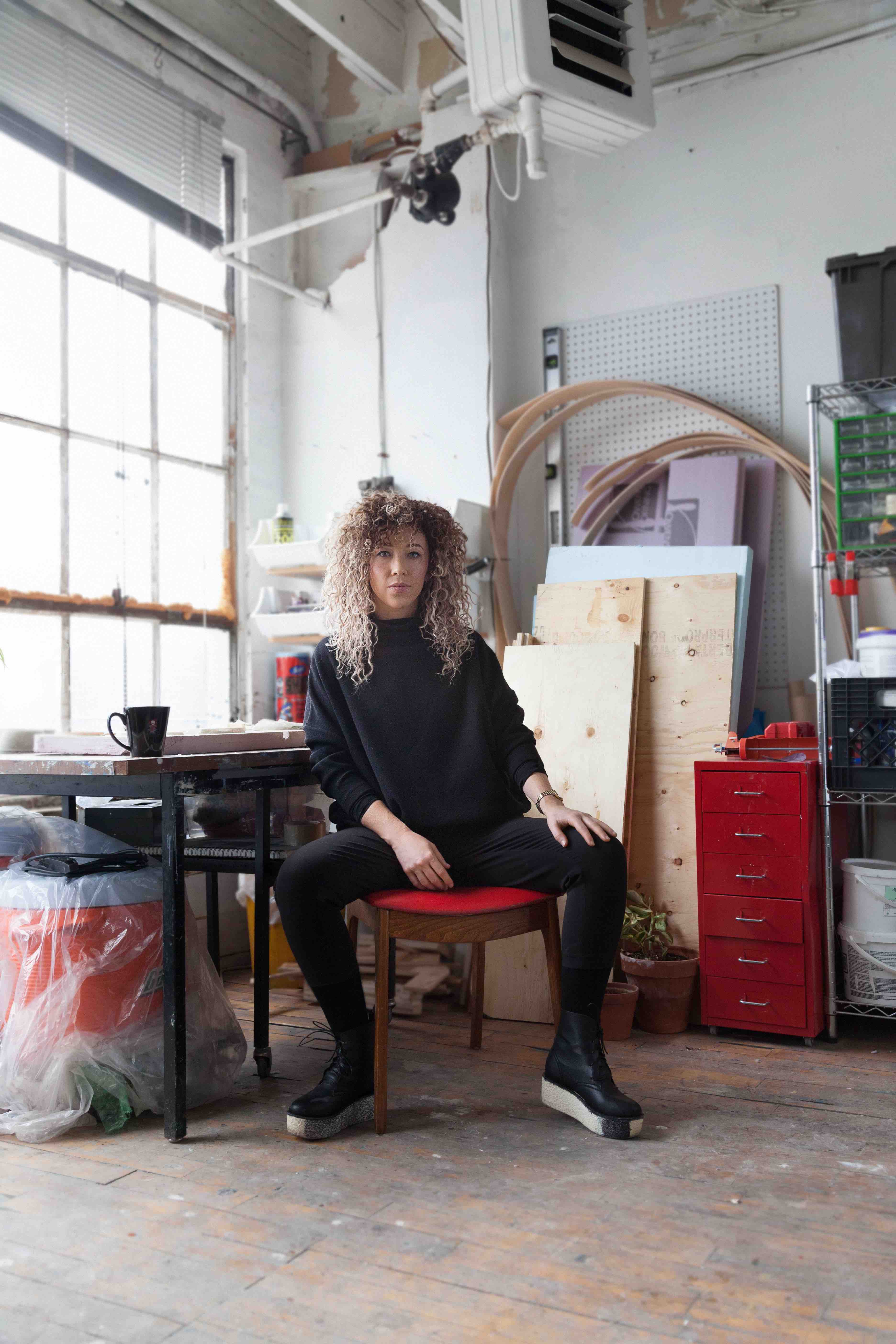
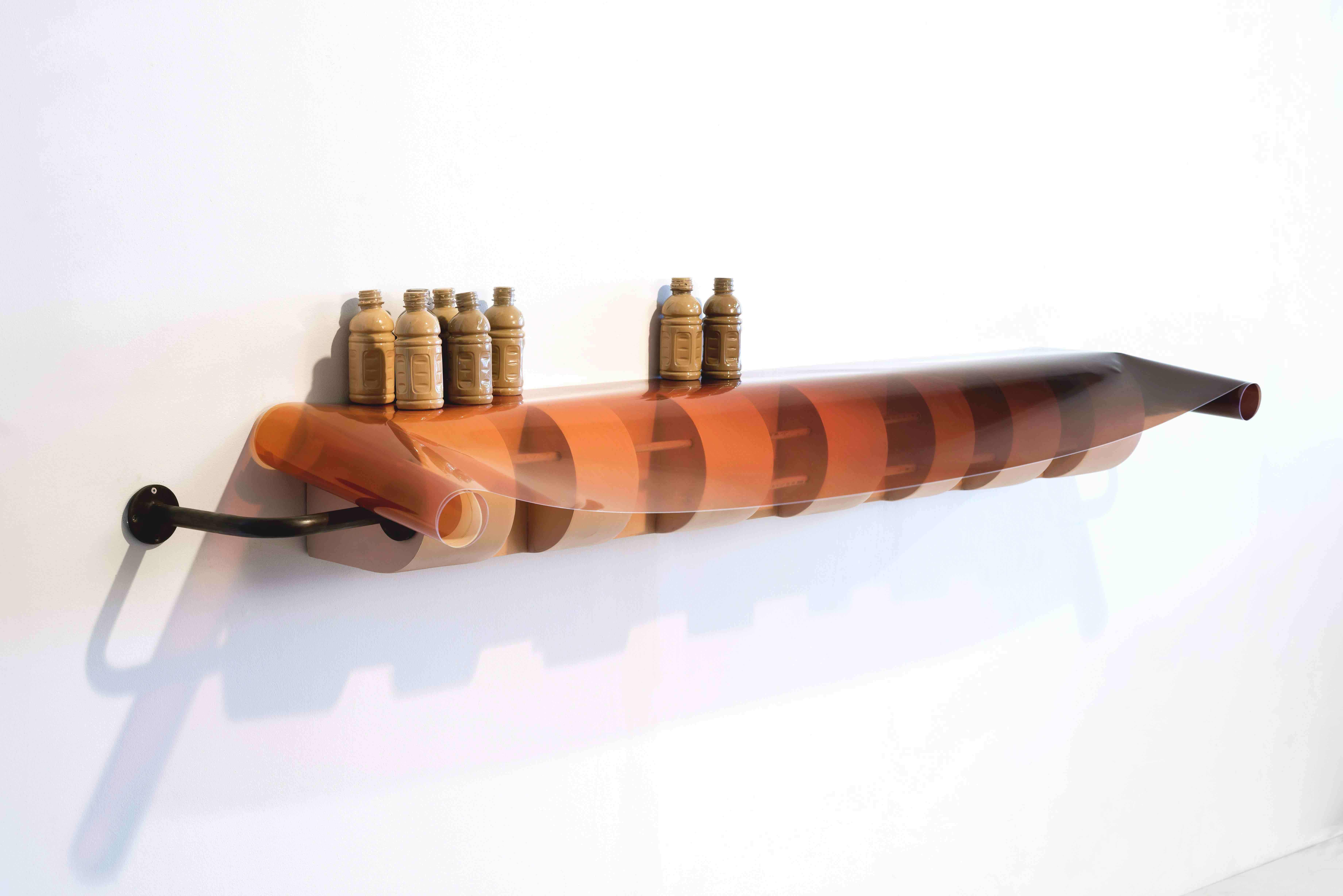


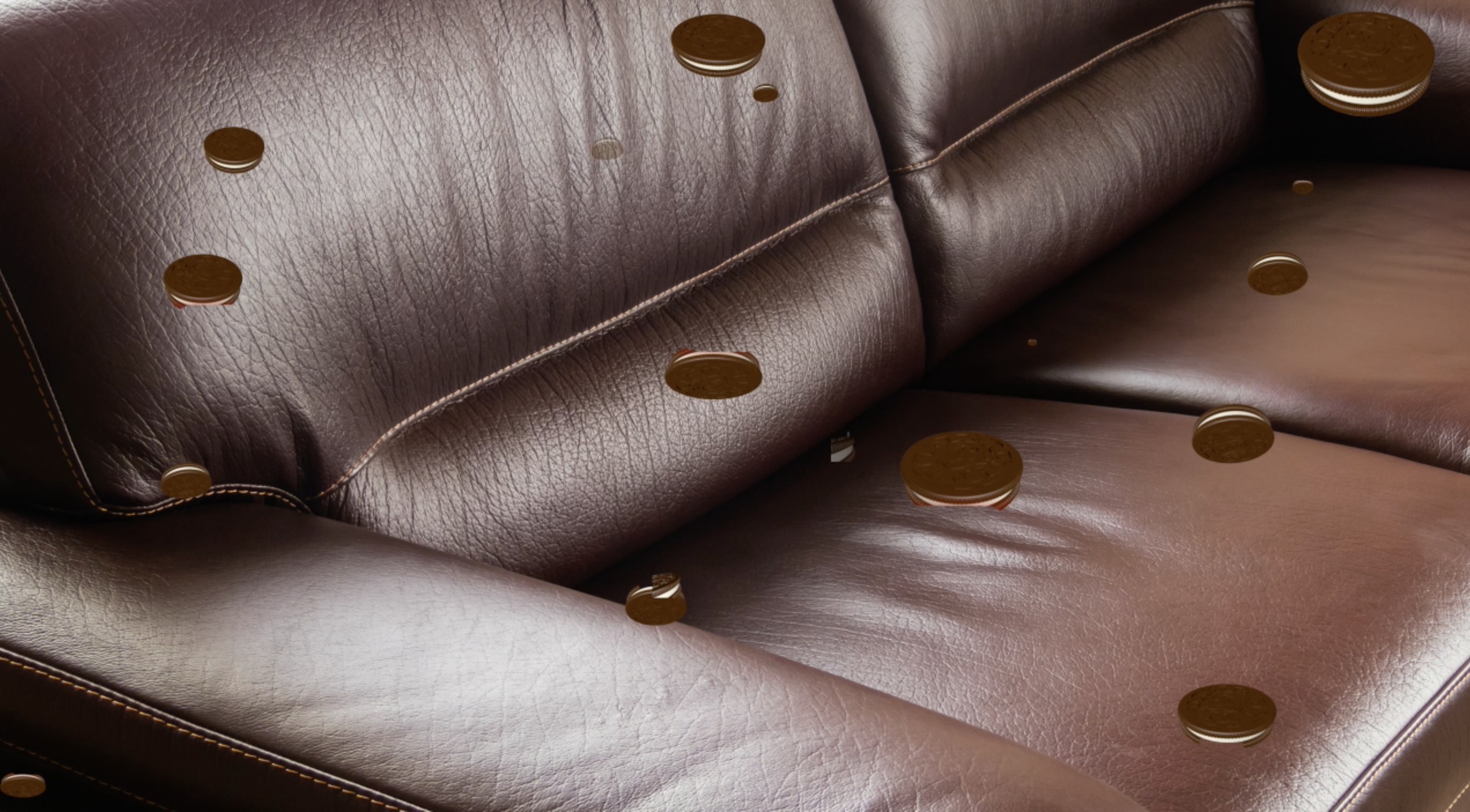
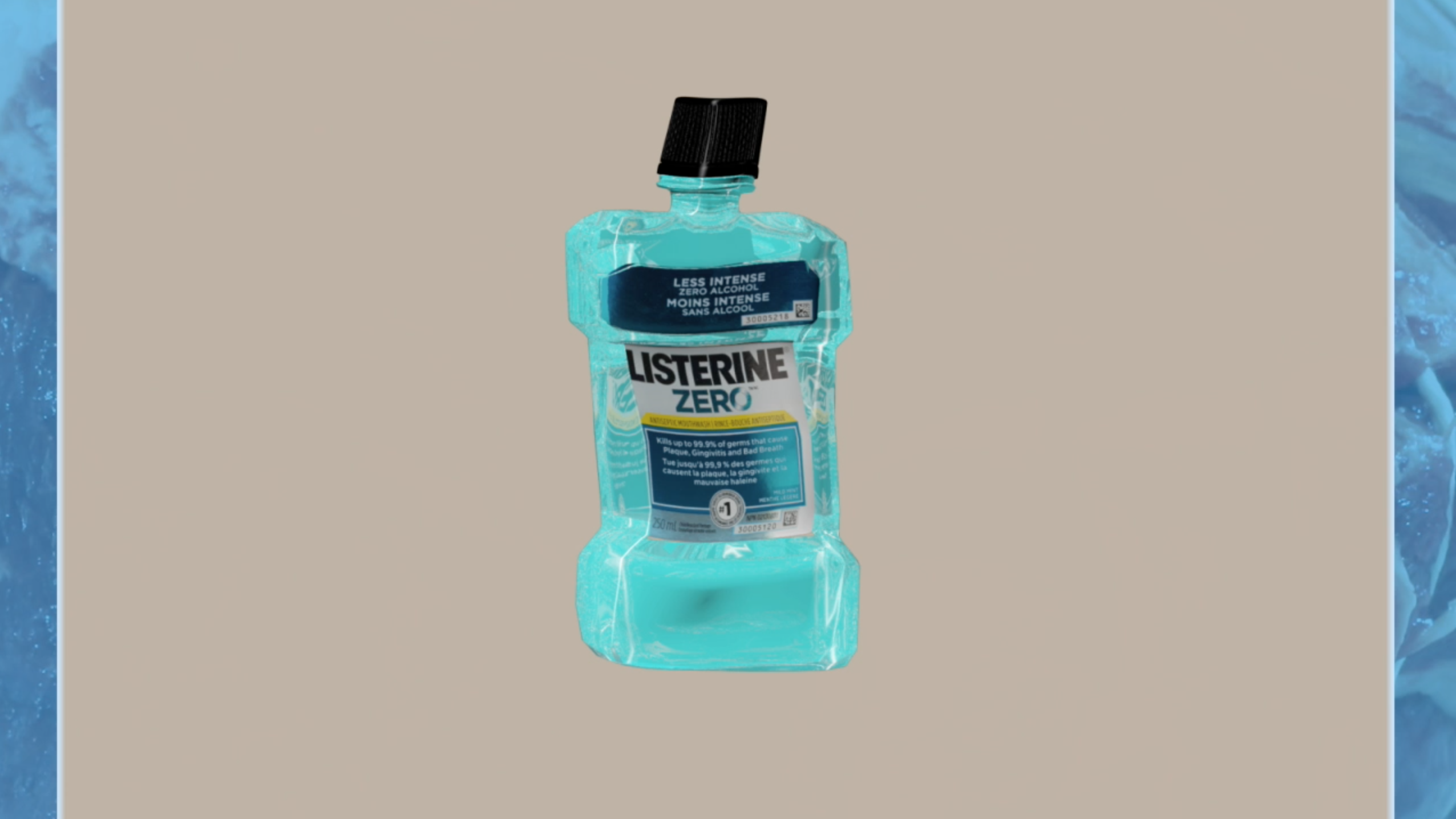
Catherine Telford-Keogh is an artist currently based in Toronto, ON. Her work examines the visual and material language of objects and their relationship to the body through sculpture and video. She makes abstractions using recognizable forms such as tables and trays that act as display strategies and containers for aqueous or encrusted material and objects alluding to the body.
Catherine’s work begins from intuitive responses to ubiquitous and mass-produced objects and advertising whose aesthetics and material language override intended use or promise. She amplifies this tension though interventions in quantity, function, assemblage, scale and material to explore the absurdity of our idea of an object and its reality.
Catherine incorporates materials such as real and fake food, NyQuil and Internet images in her work. These materials change one’s mood, desire, chemical and hormonal makeup and challenge a sculpture’s purported inertia and autonomy. Caretaking is a process integral to each sculpture because perishable materials require continuous replenishment, which is an extension of their making in the studio.
Randi
Shandroski

Photo: Tommy Kha

Photo: Thibault Théodore-Babin

Photo: Katya Moorman & Karen L. Dunn
Many of the clothes are made from discarde; advertising banners, which are thoughtfully cut up and reconfigured in a way that subverts corporate culture and underscores the absurdity of modern advertising. LACTIC believes that what you wear can have the power to affect change in the wearer and alter people's perception of the world around them.
Shahrzad
Changalvaee
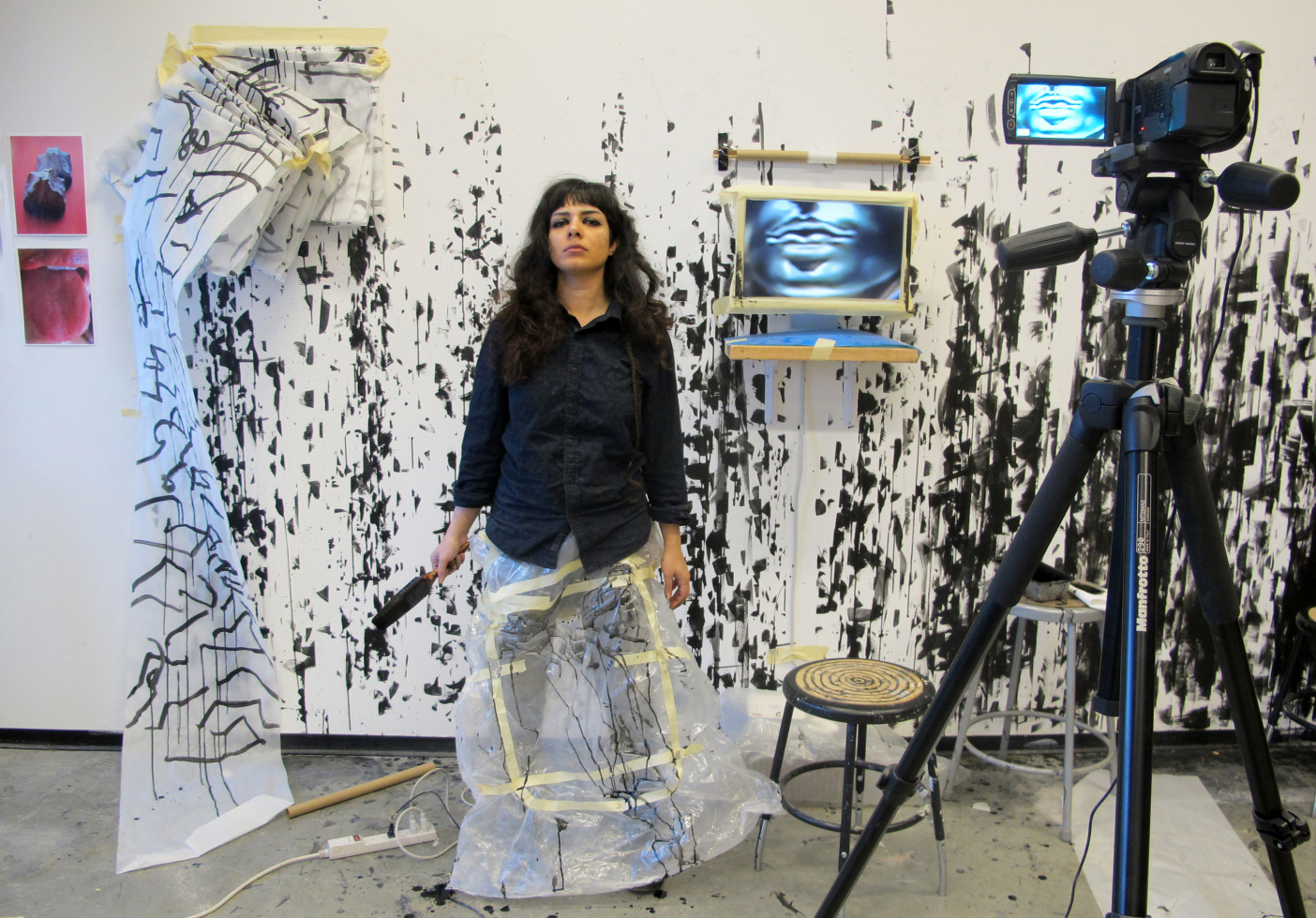
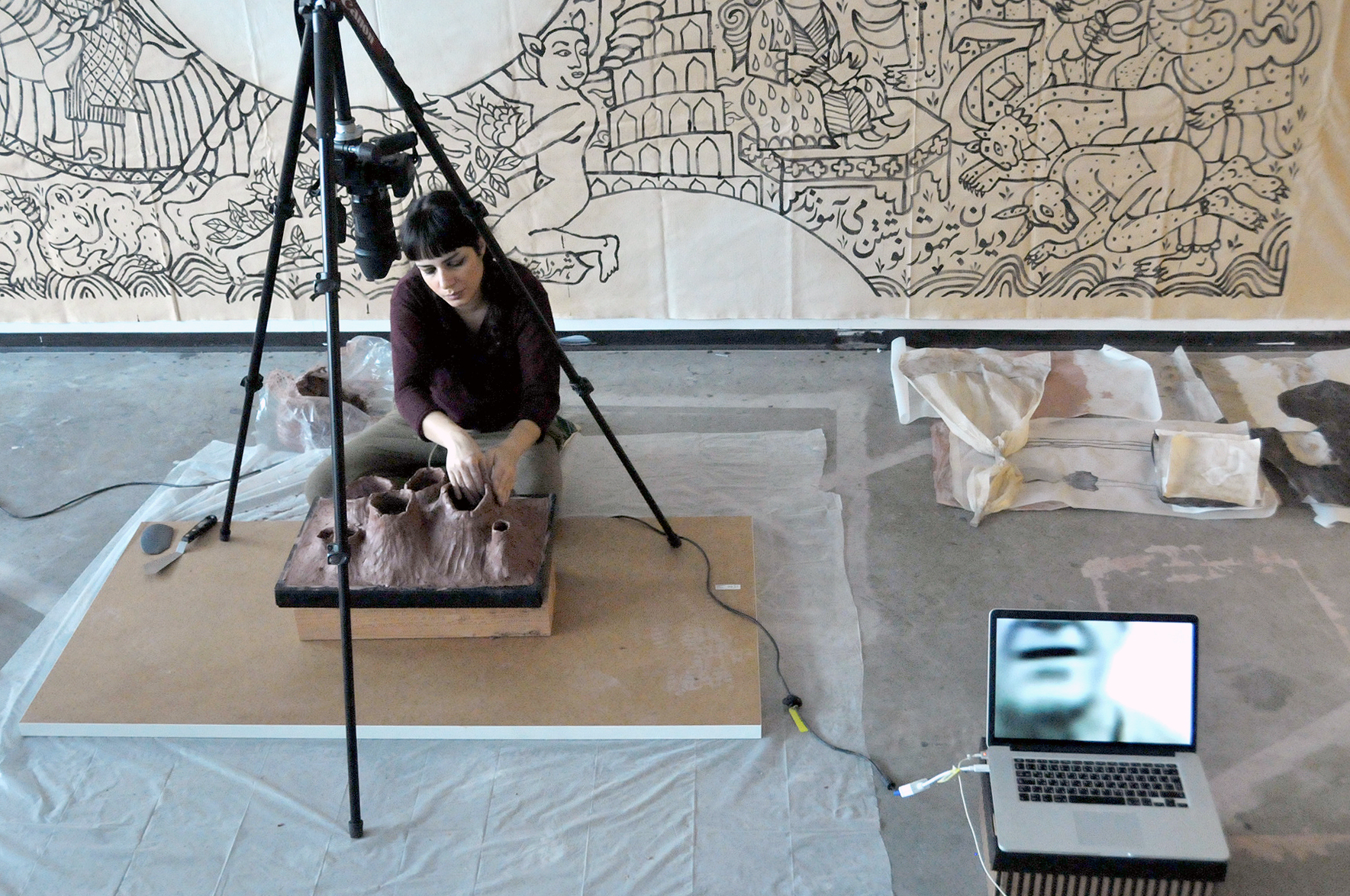


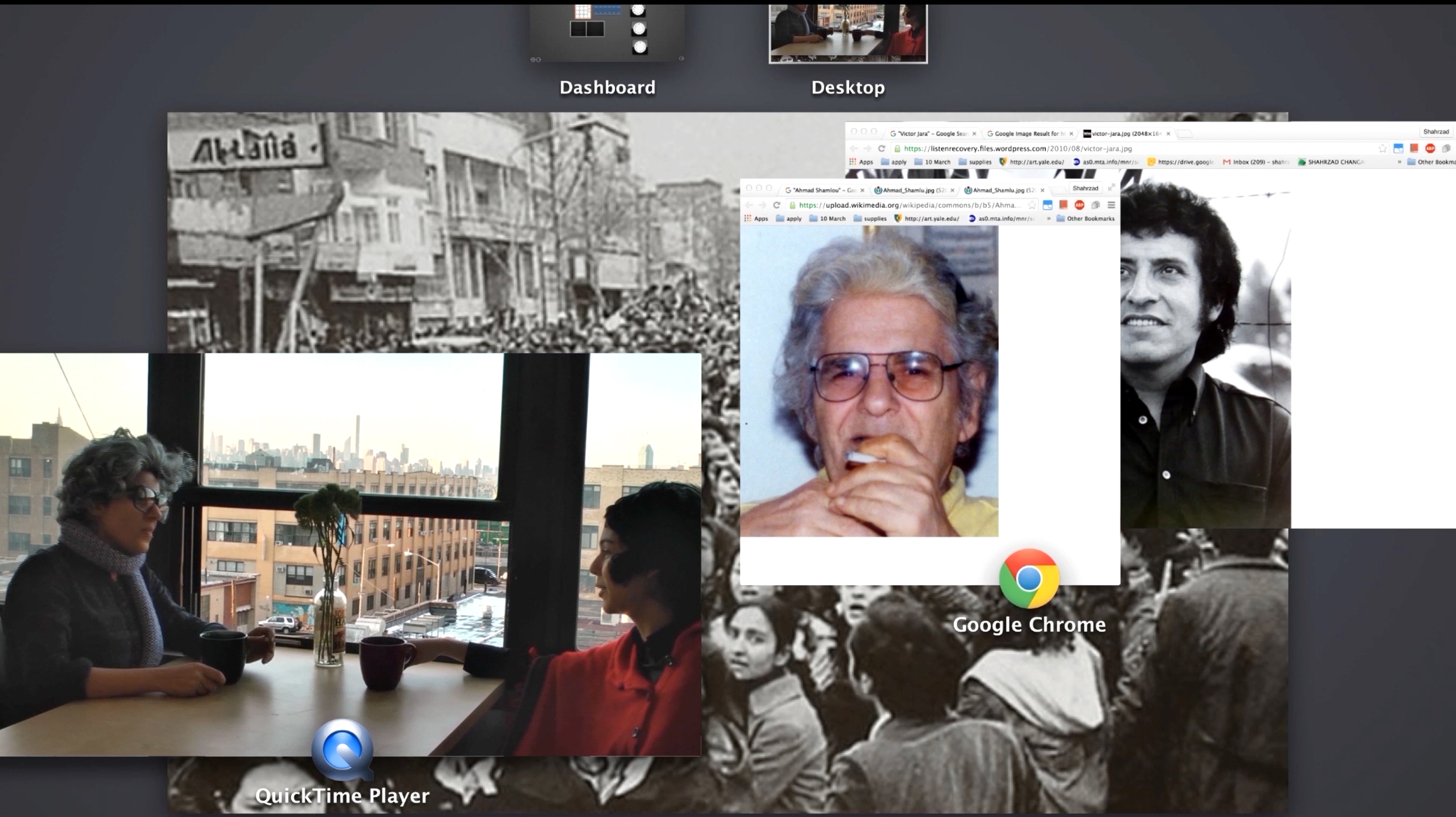
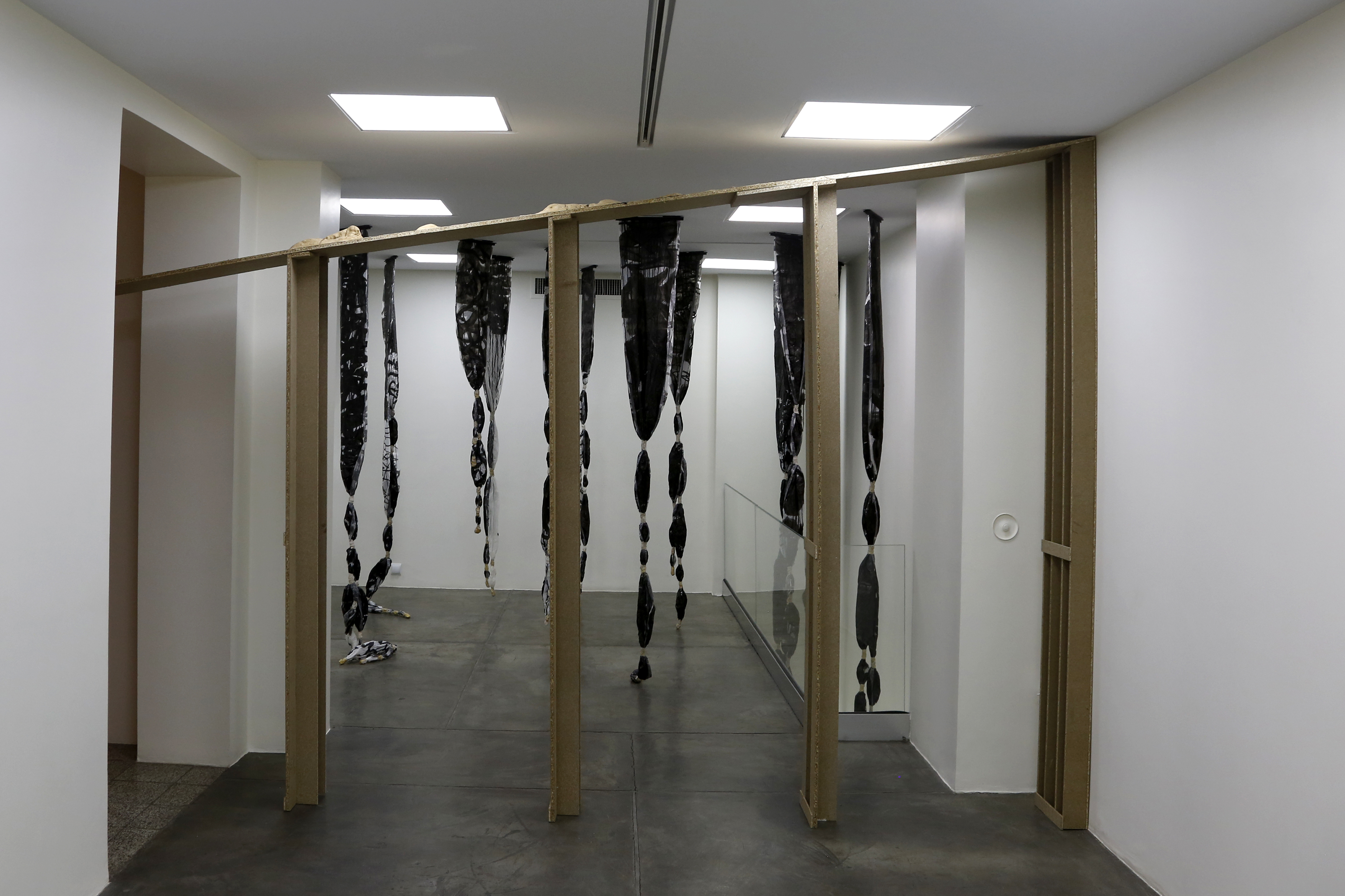

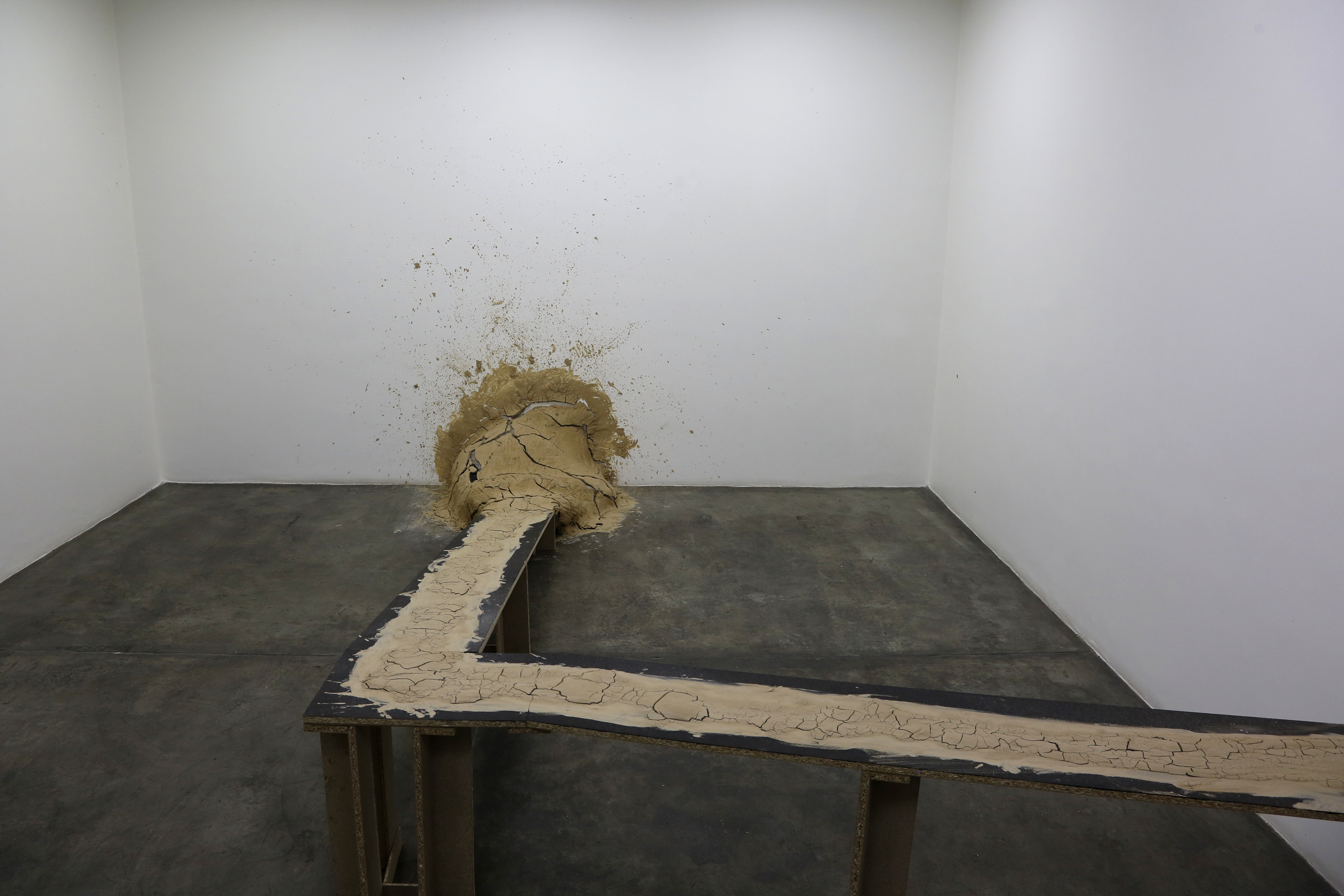

Shahrzad Changalvaee's practice responds to sculpture in a vast field of media, including installation, video, photography, text, and performance. She constructs unities of prints and multiple elements in a non-hierarchical rhizomatic connection system. Her recent photographs of accumulation of studio tools and material manifest resistance to organizational structures and patriarchal grid.
Shahrzad was featured in Shanghai Biennial (2012), was the artist in residence in the Delfina Foundation in London (2012), and currently was a co-director of Bon-Gah collective in Tehran. She received a B.A. in Graphic Design from Faculty of Fine Arts, Tehran University (2006) and her M.F.A. in Sculpture from Yale University (2015).
Shahrzad was featured in Shanghai Biennial (2012), was the artist in residence in the Delfina Foundation in London (2012), and currently was a co-director of Bon-Gah collective in Tehran. She received a B.A. in Graphic Design from Faculty of Fine Arts, Tehran University (2006) and her M.F.A. in Sculpture from Yale University (2015).

